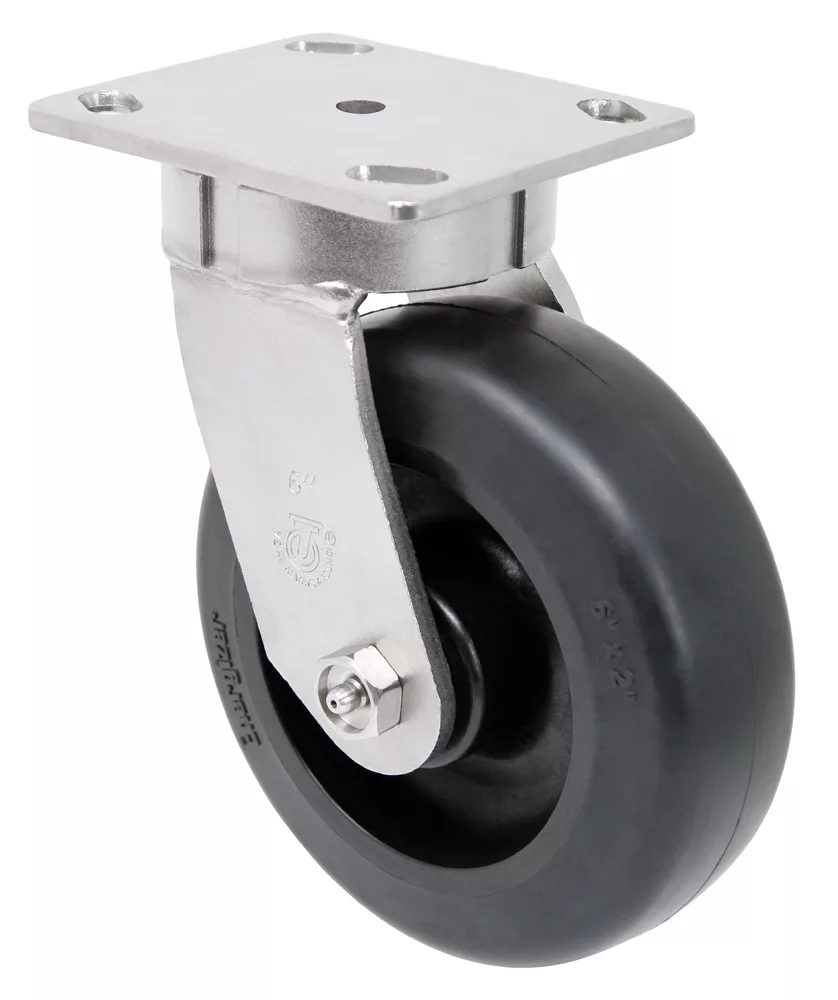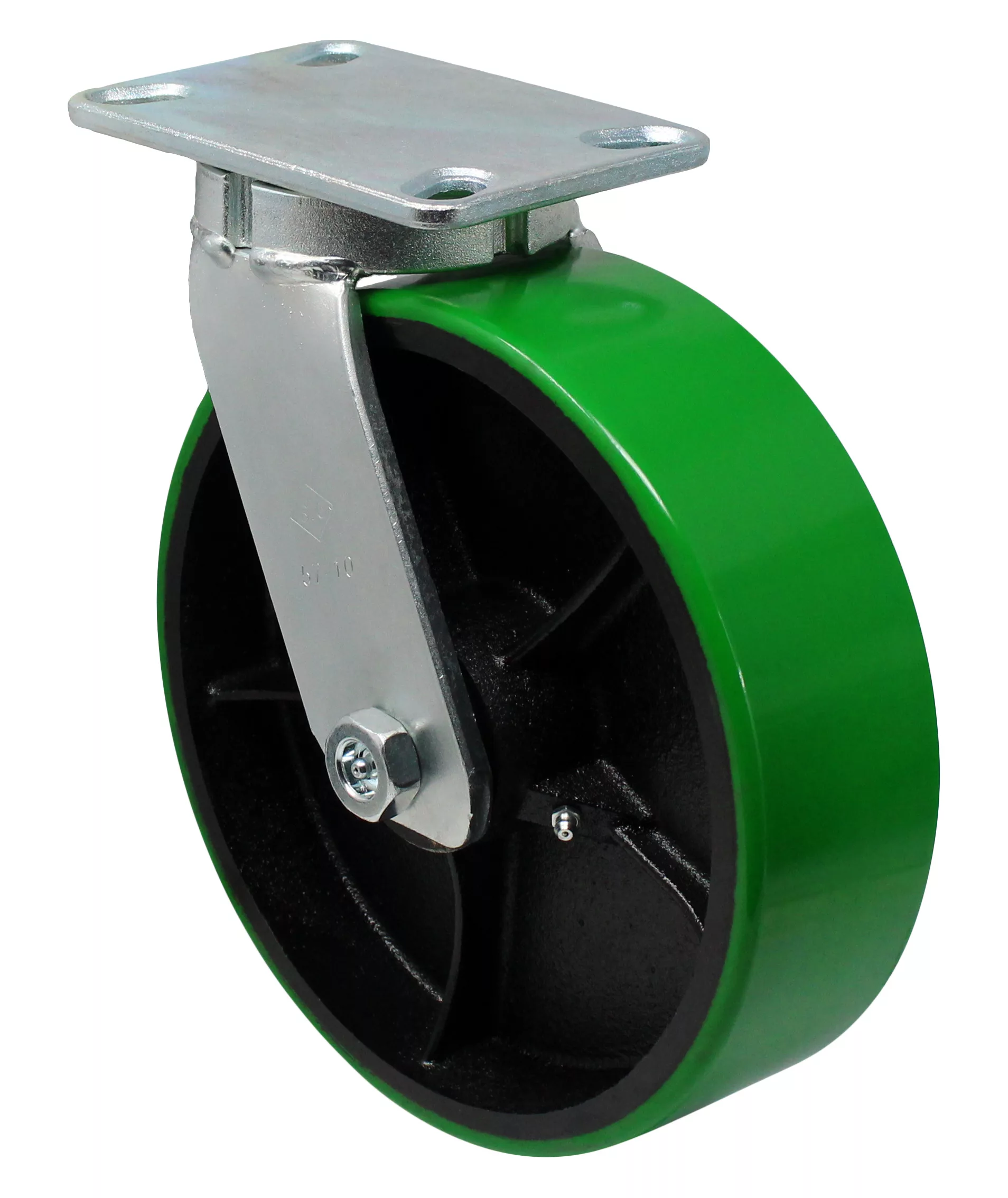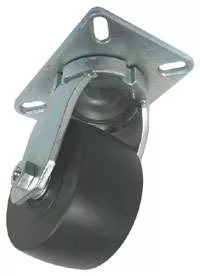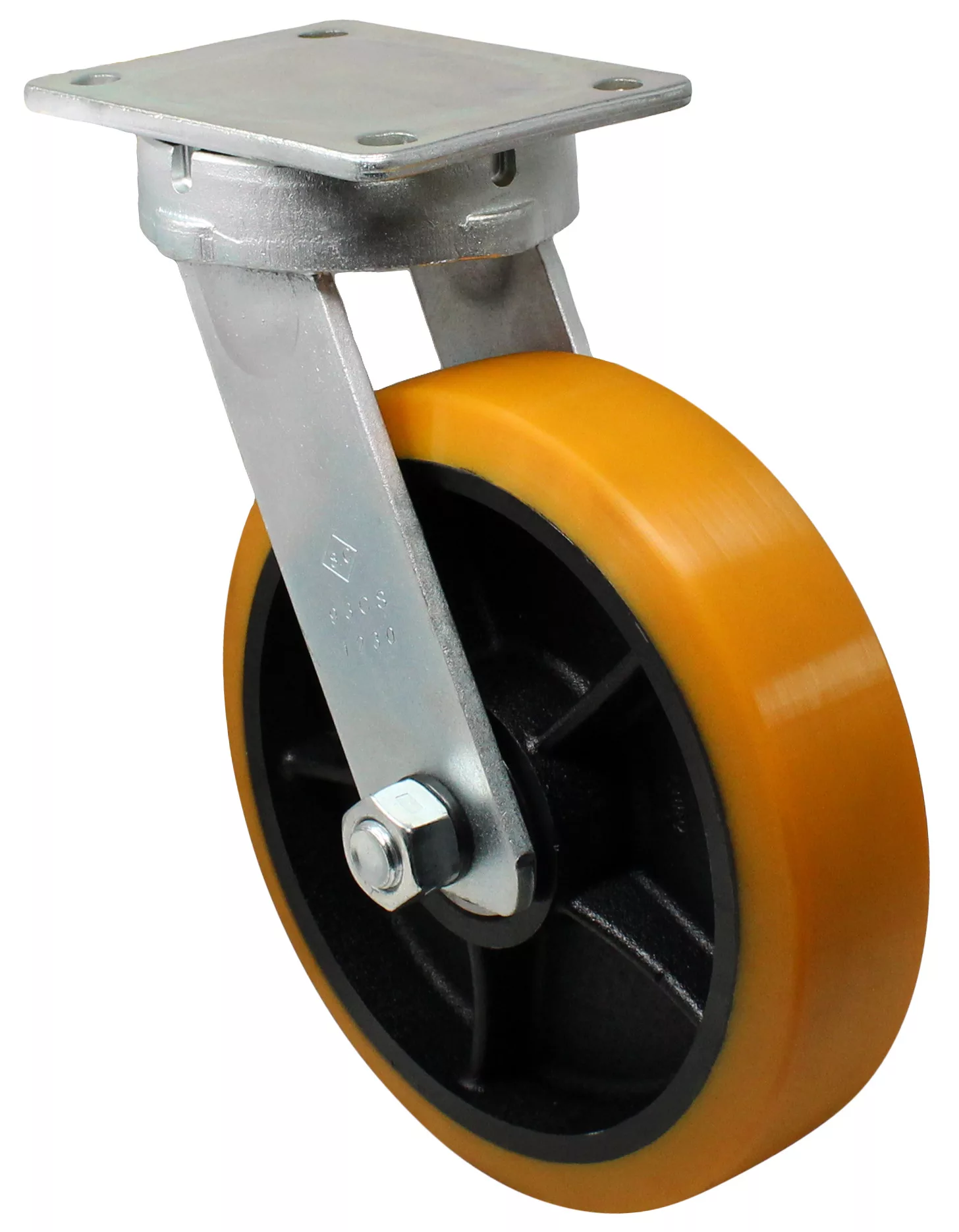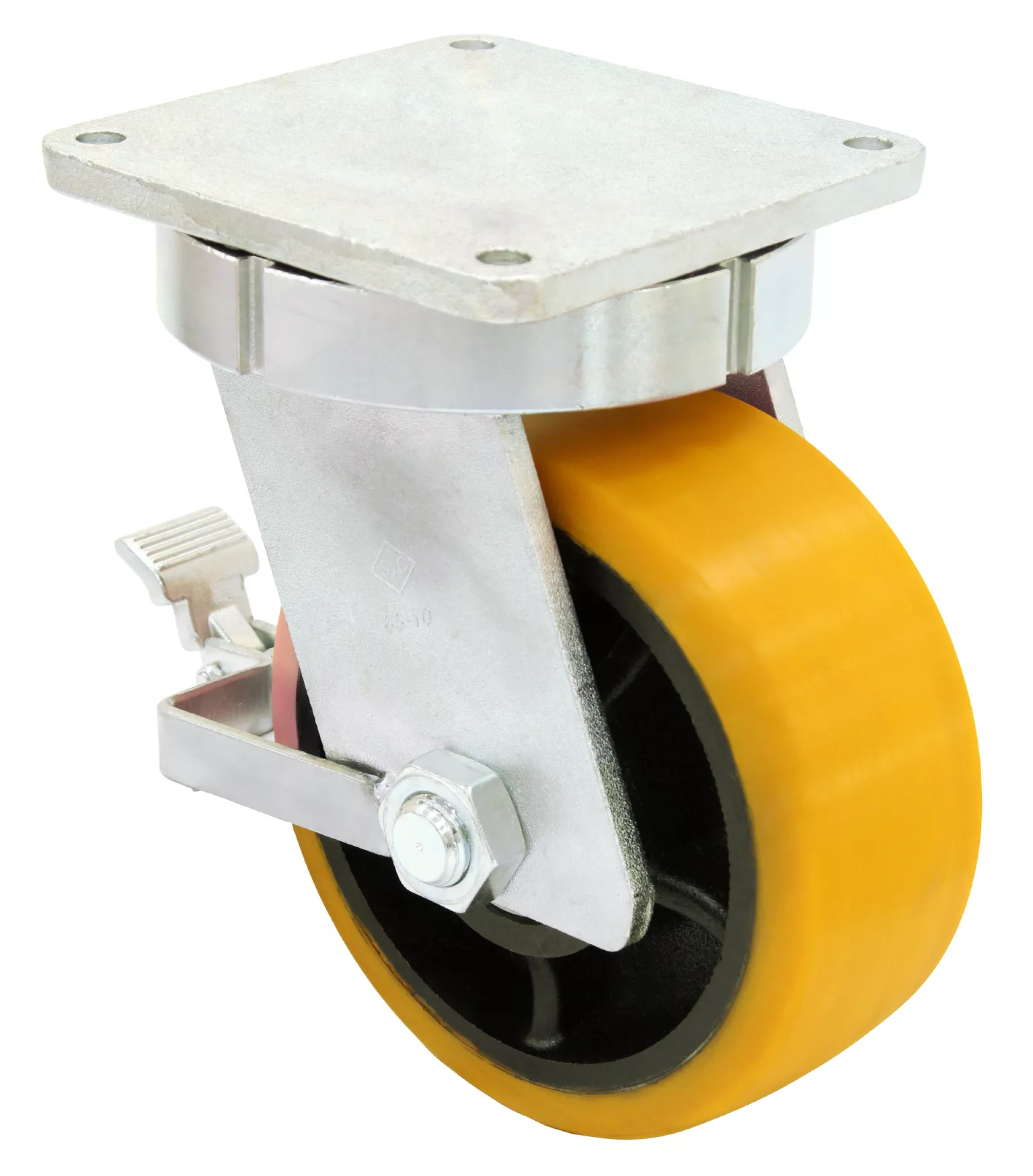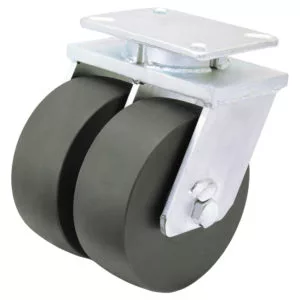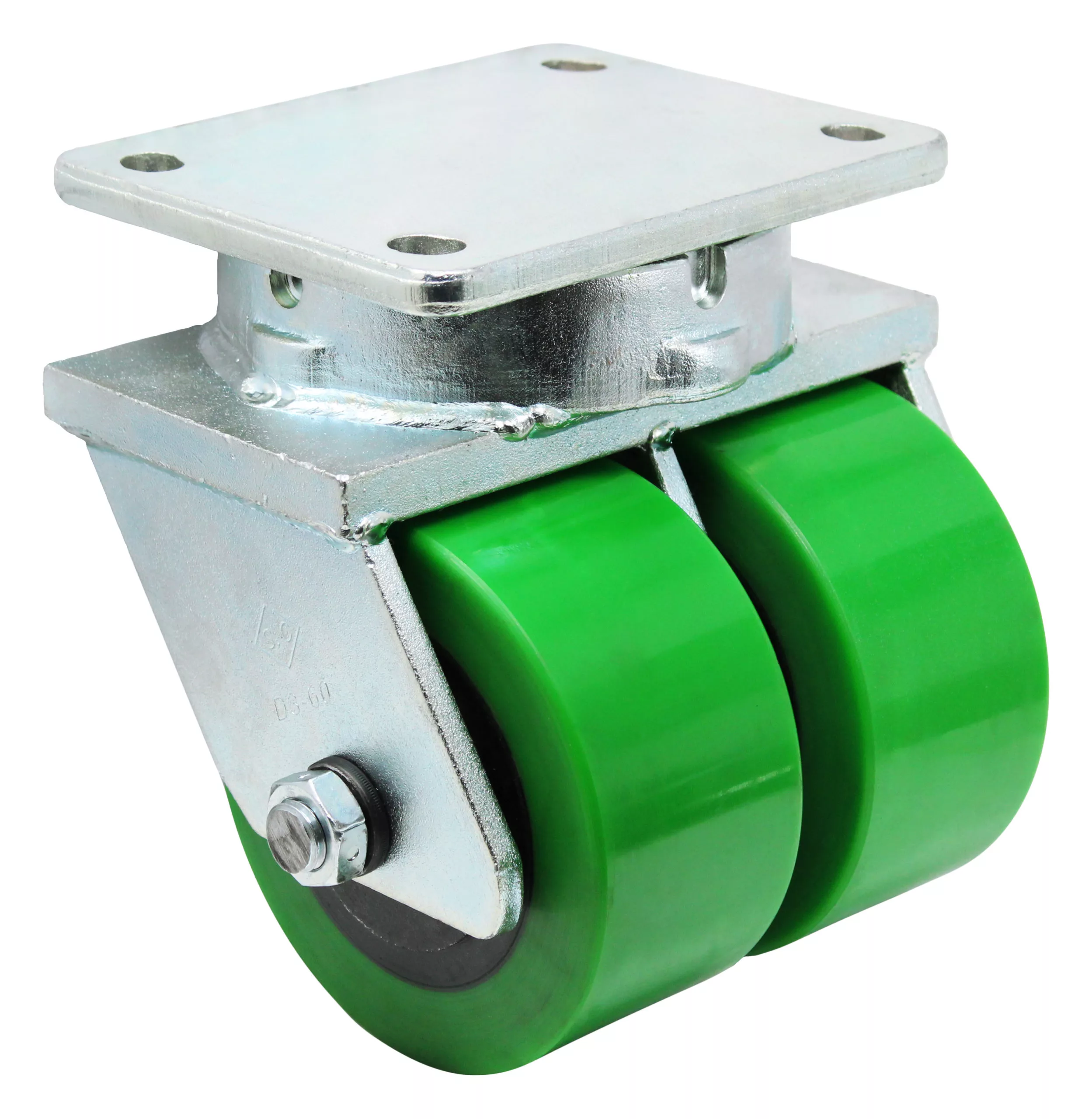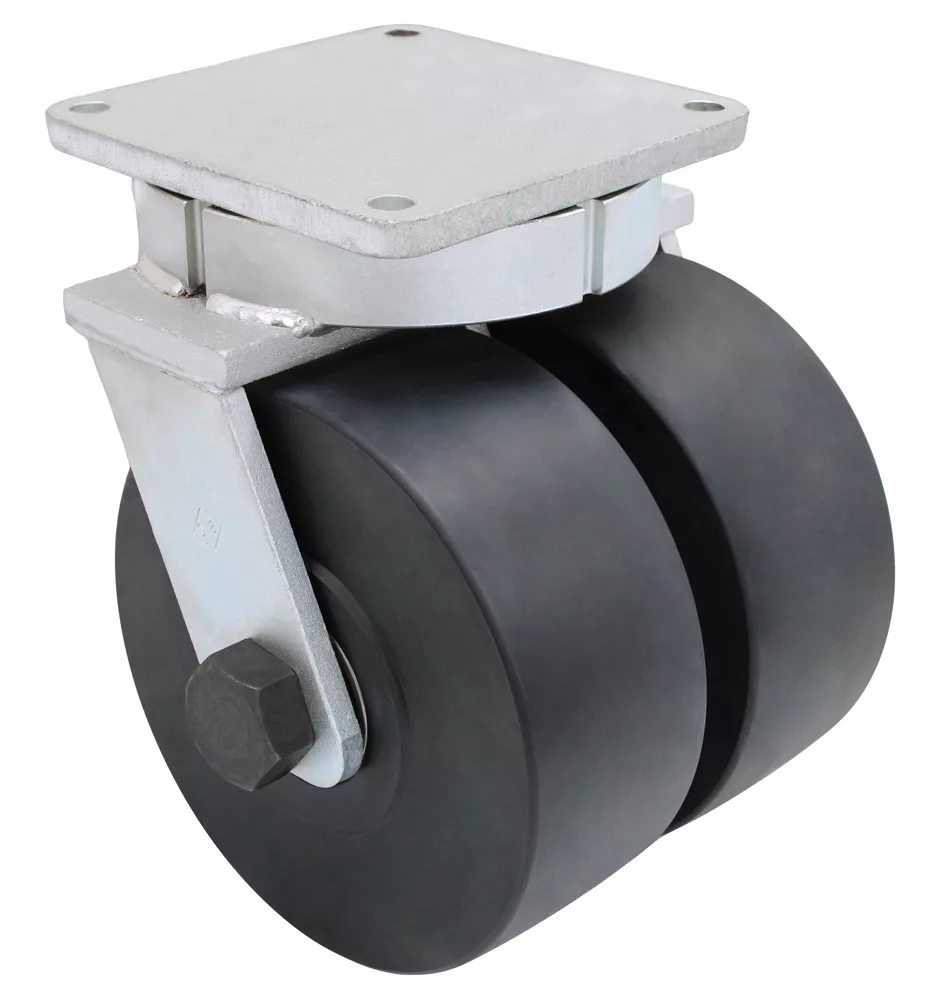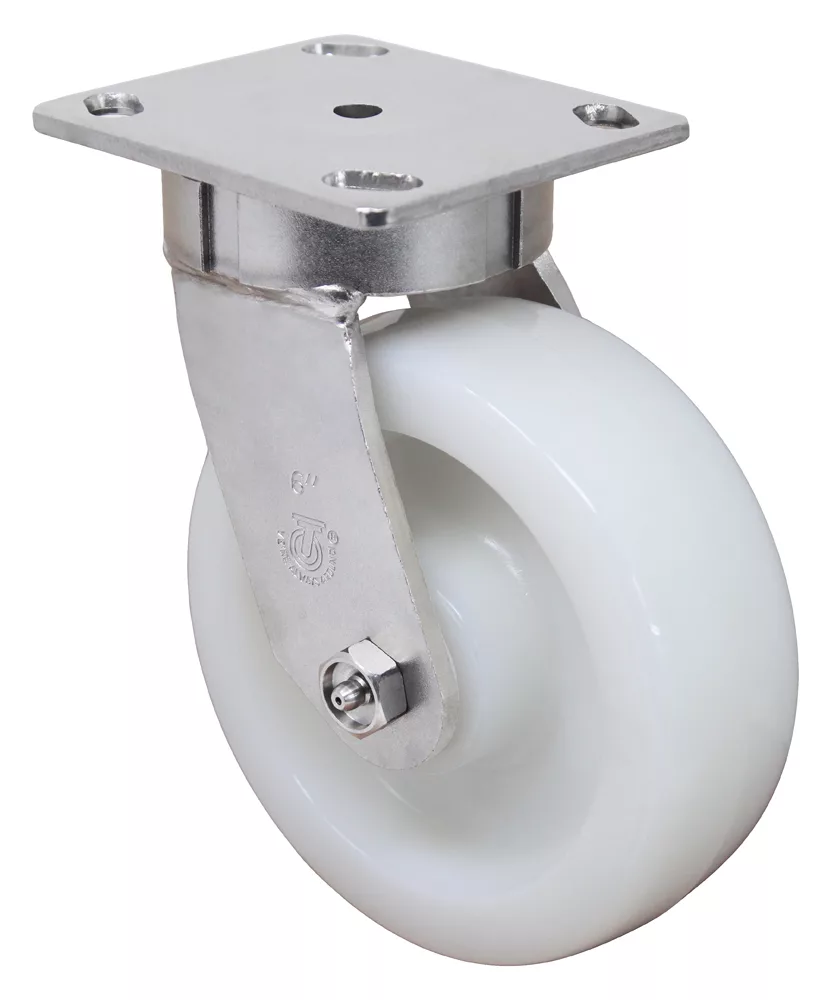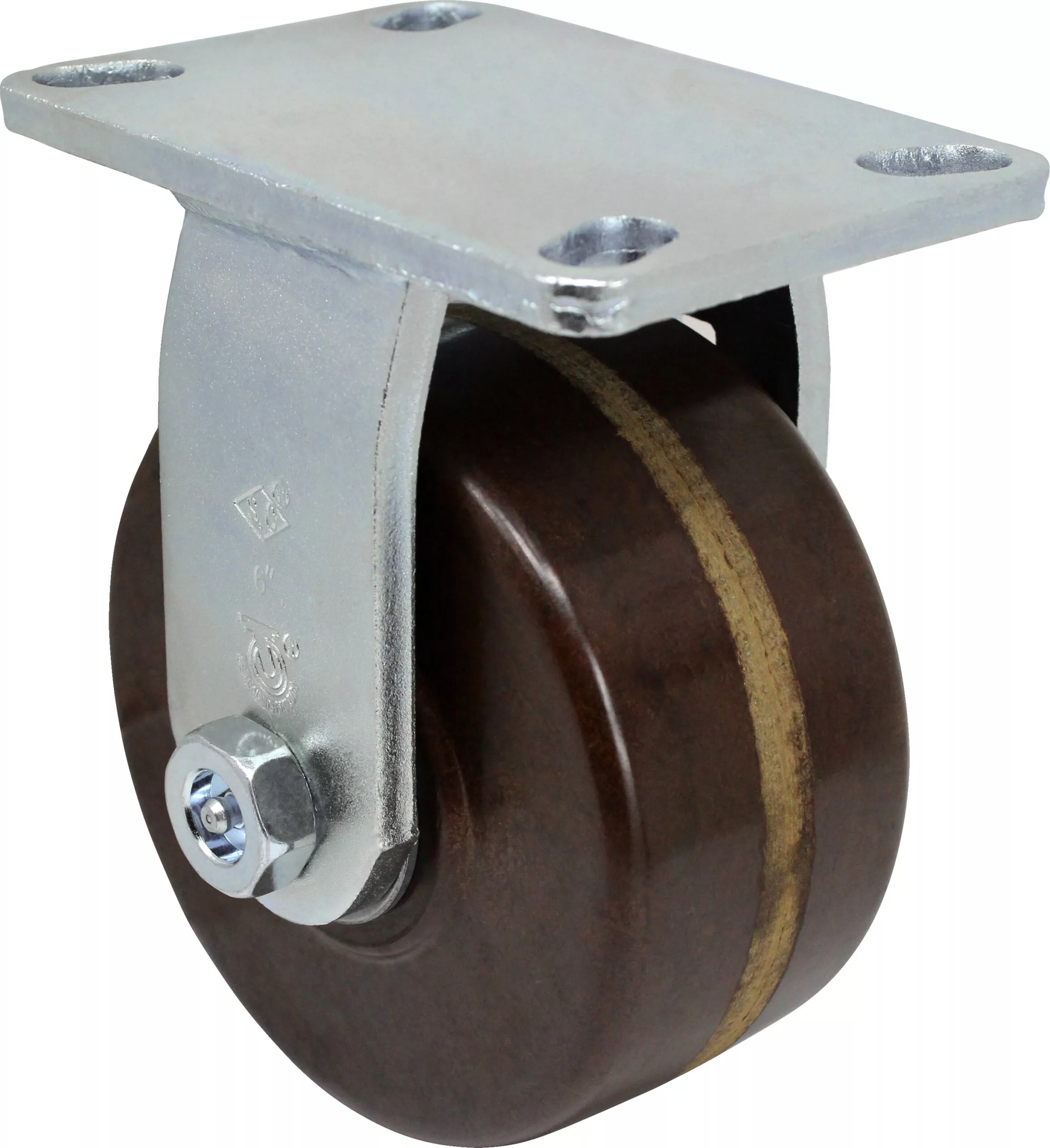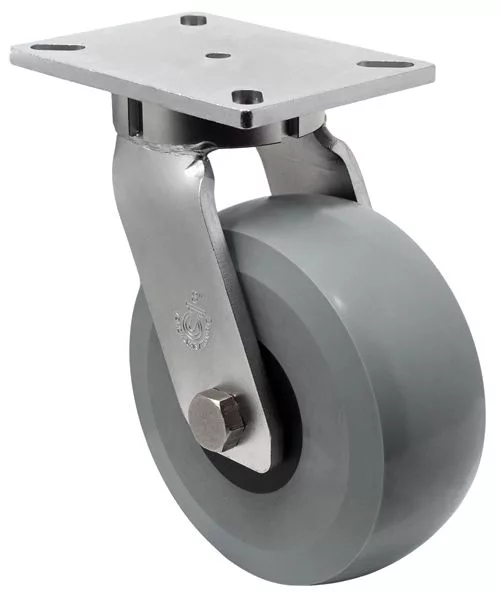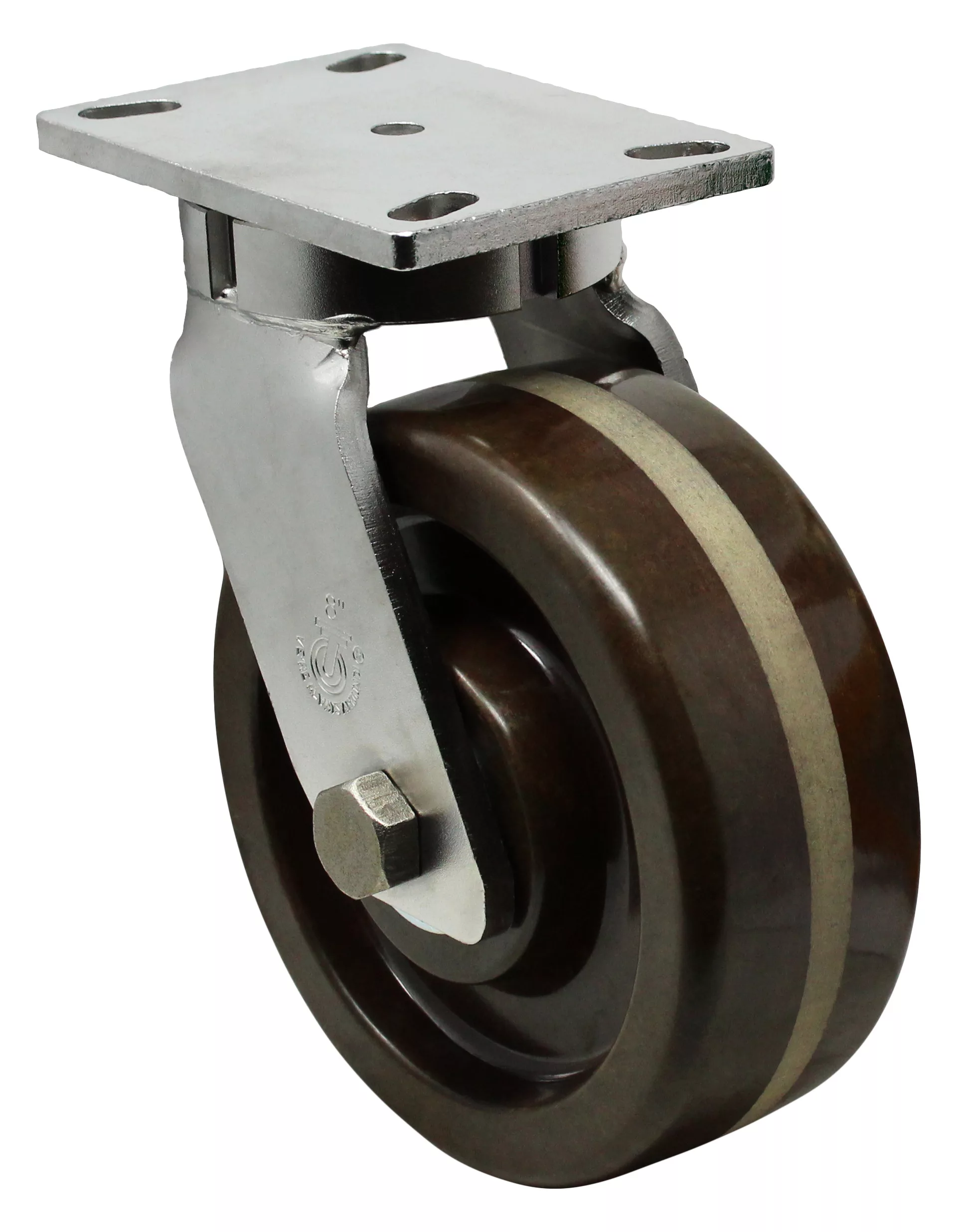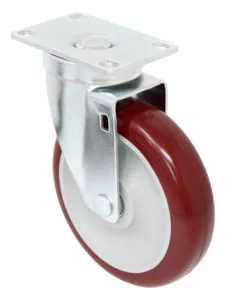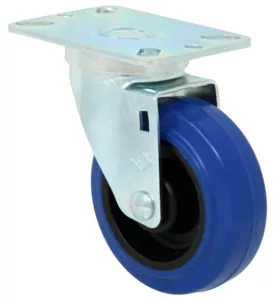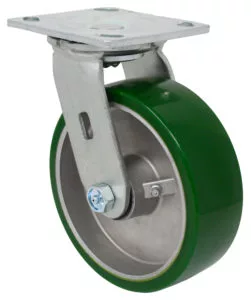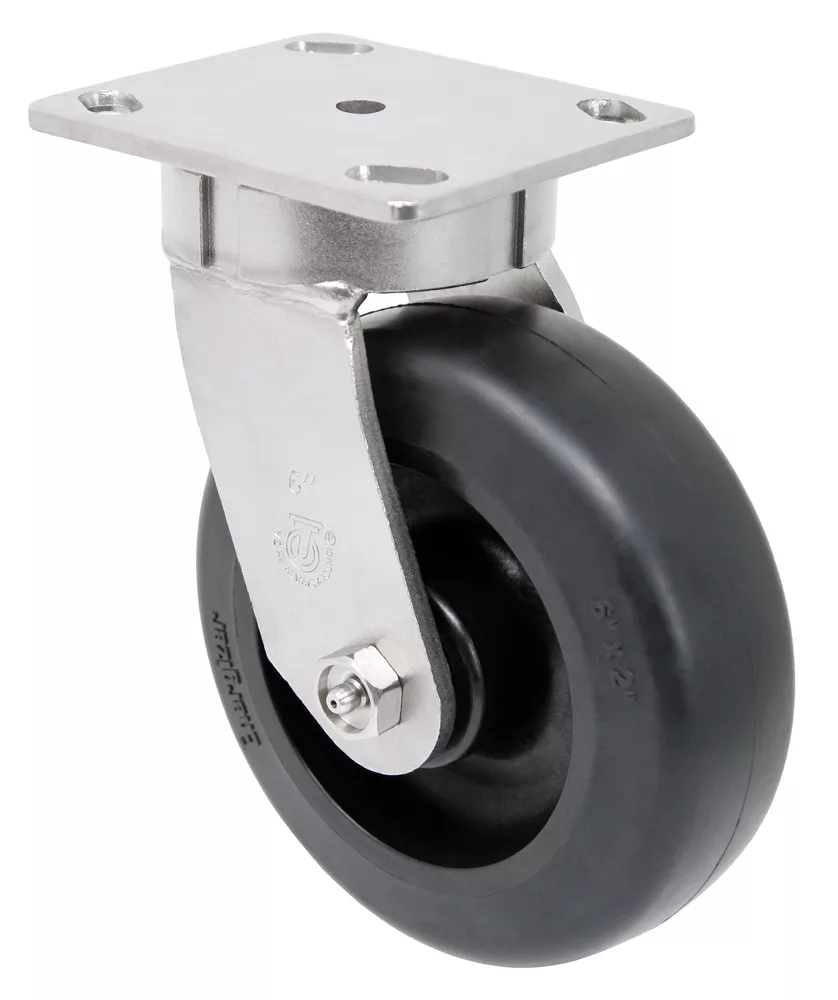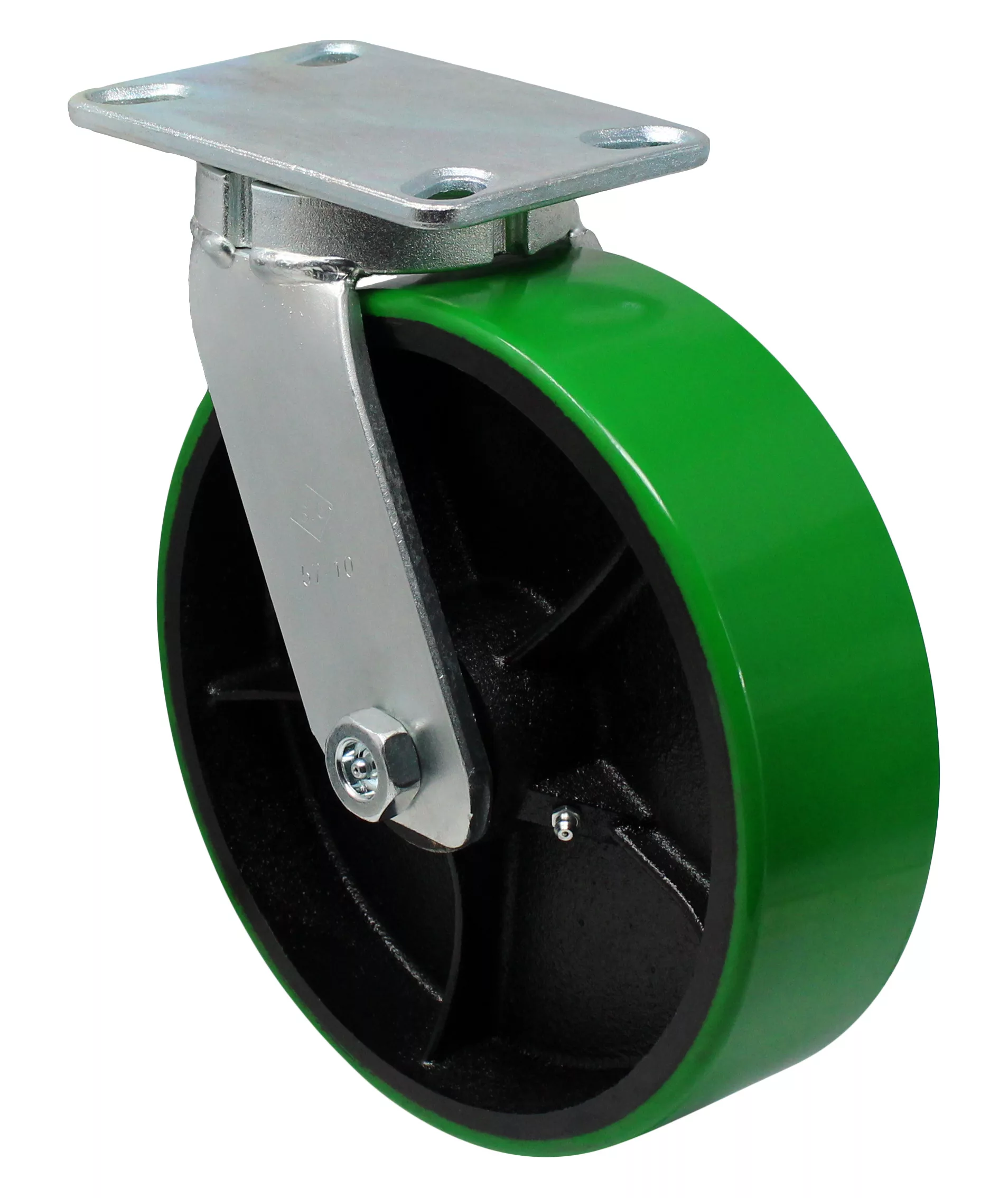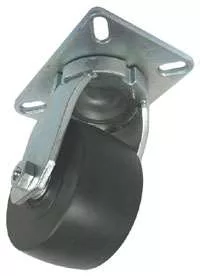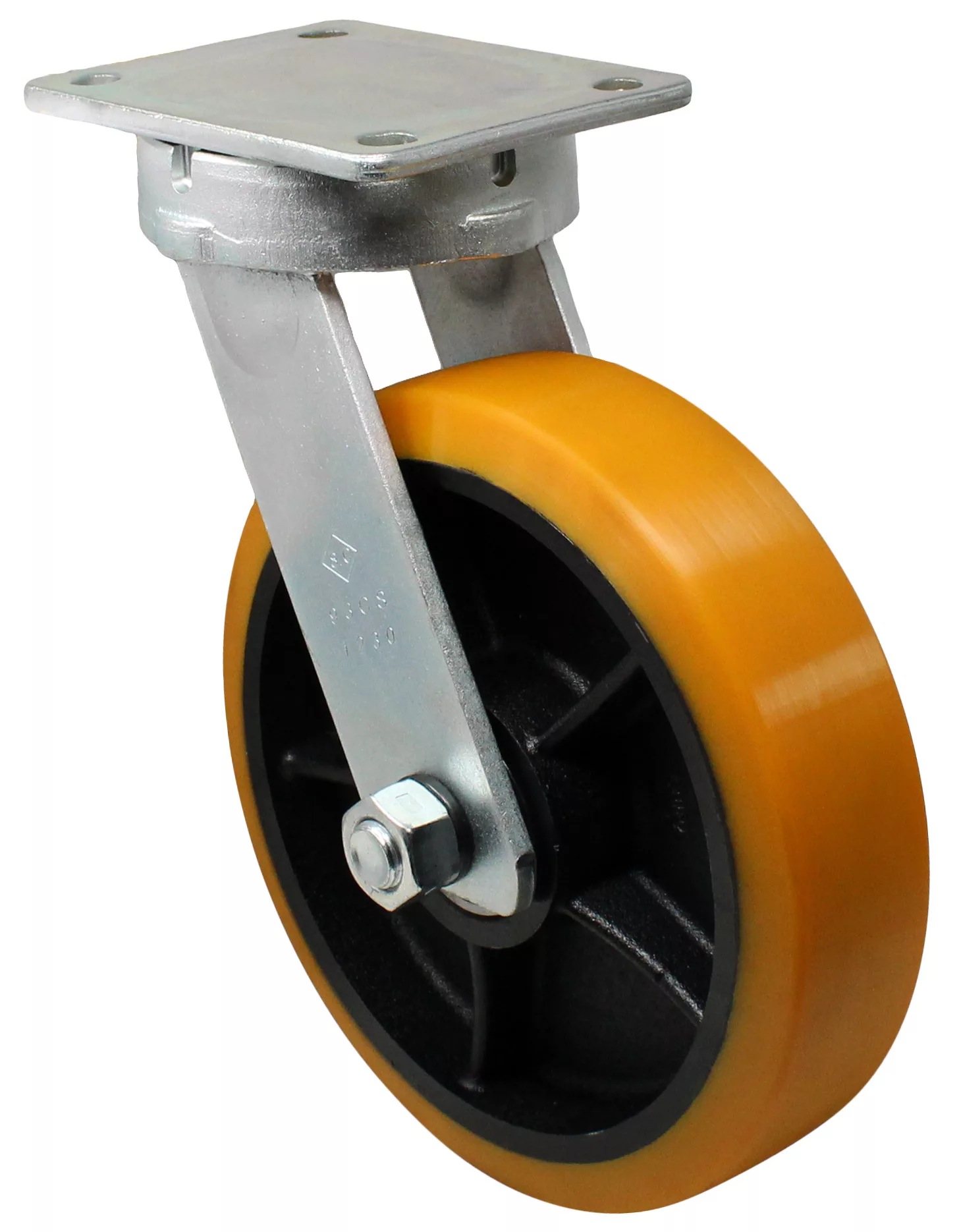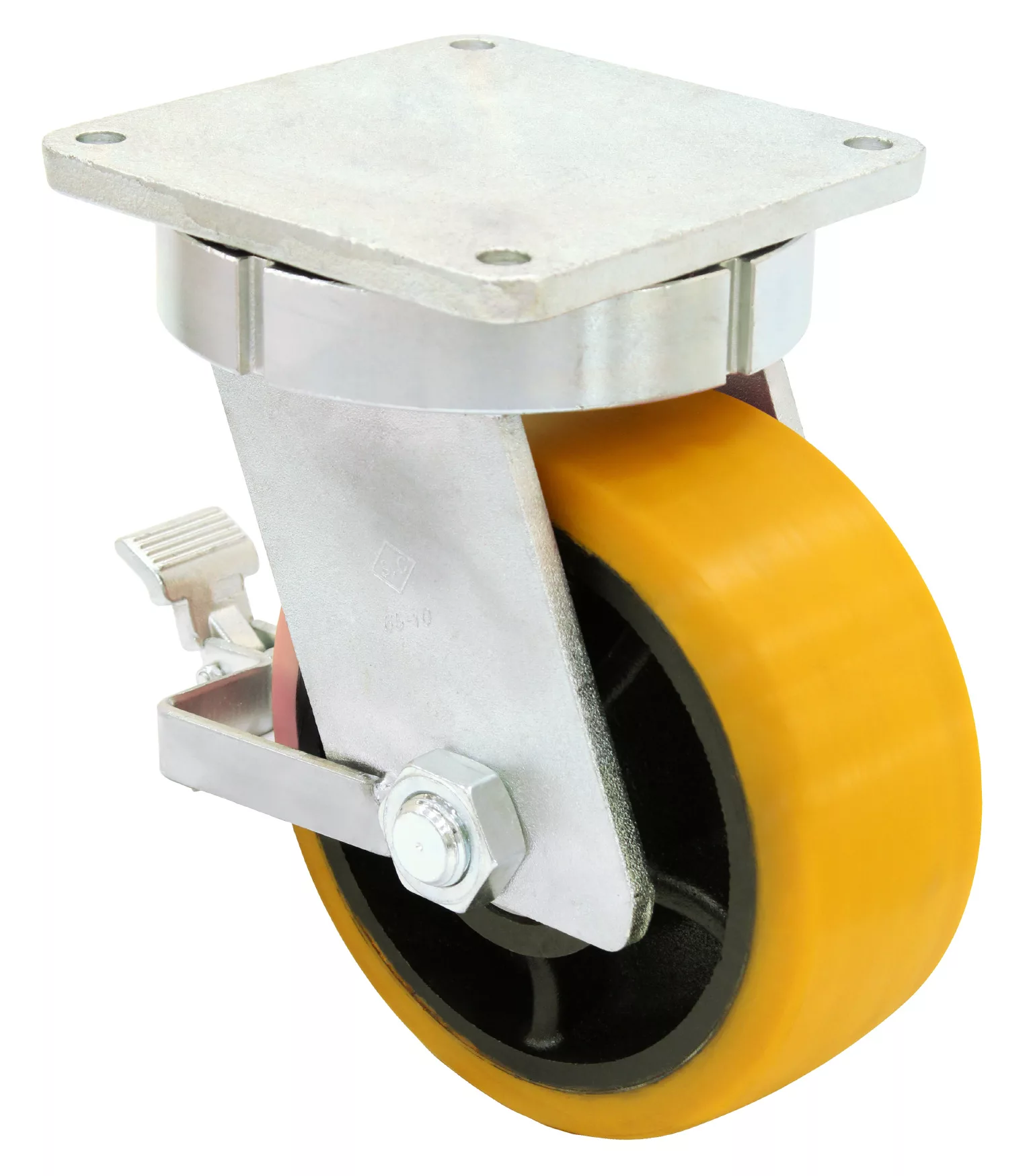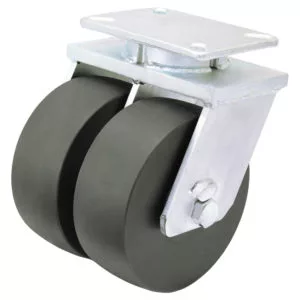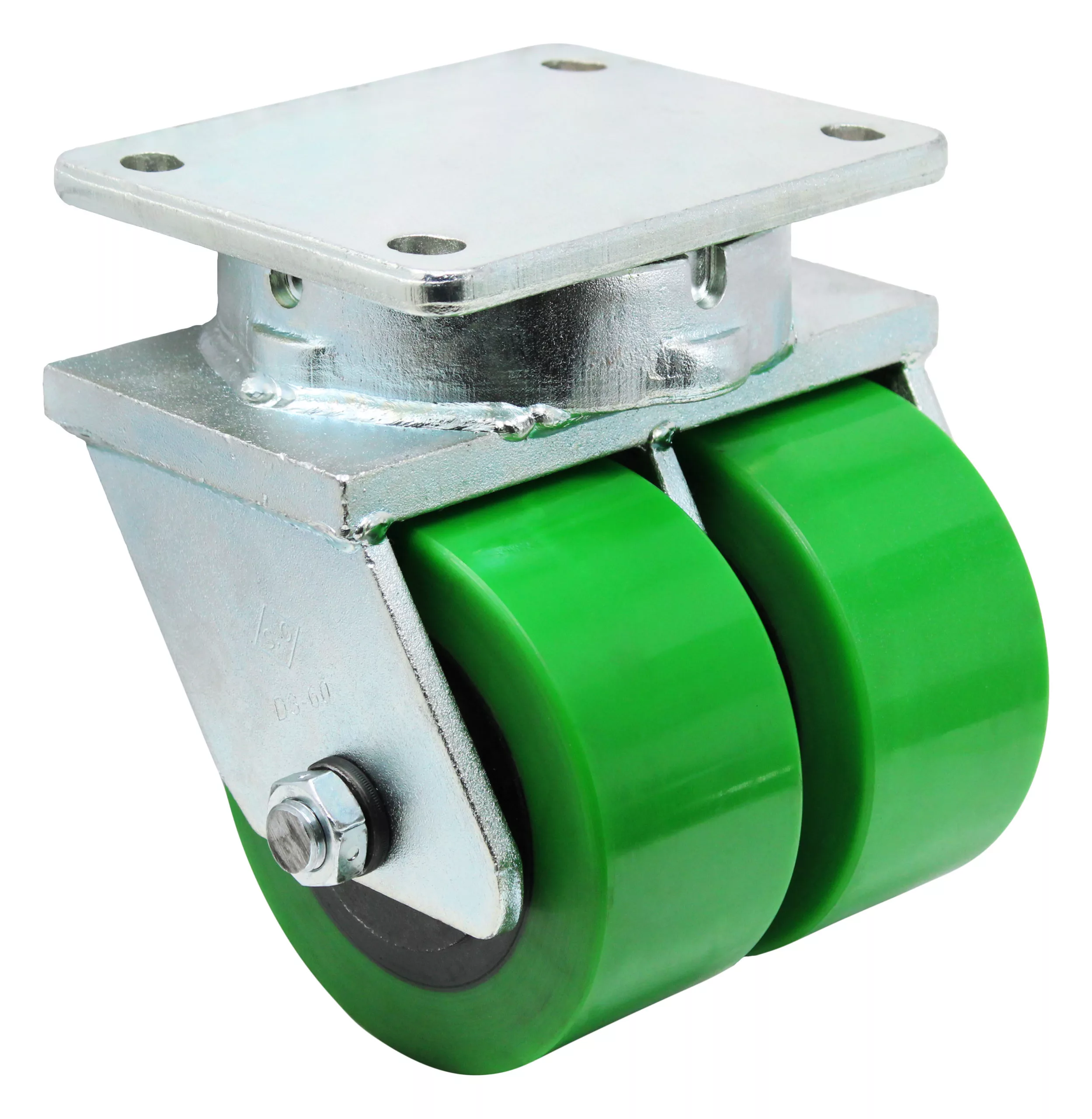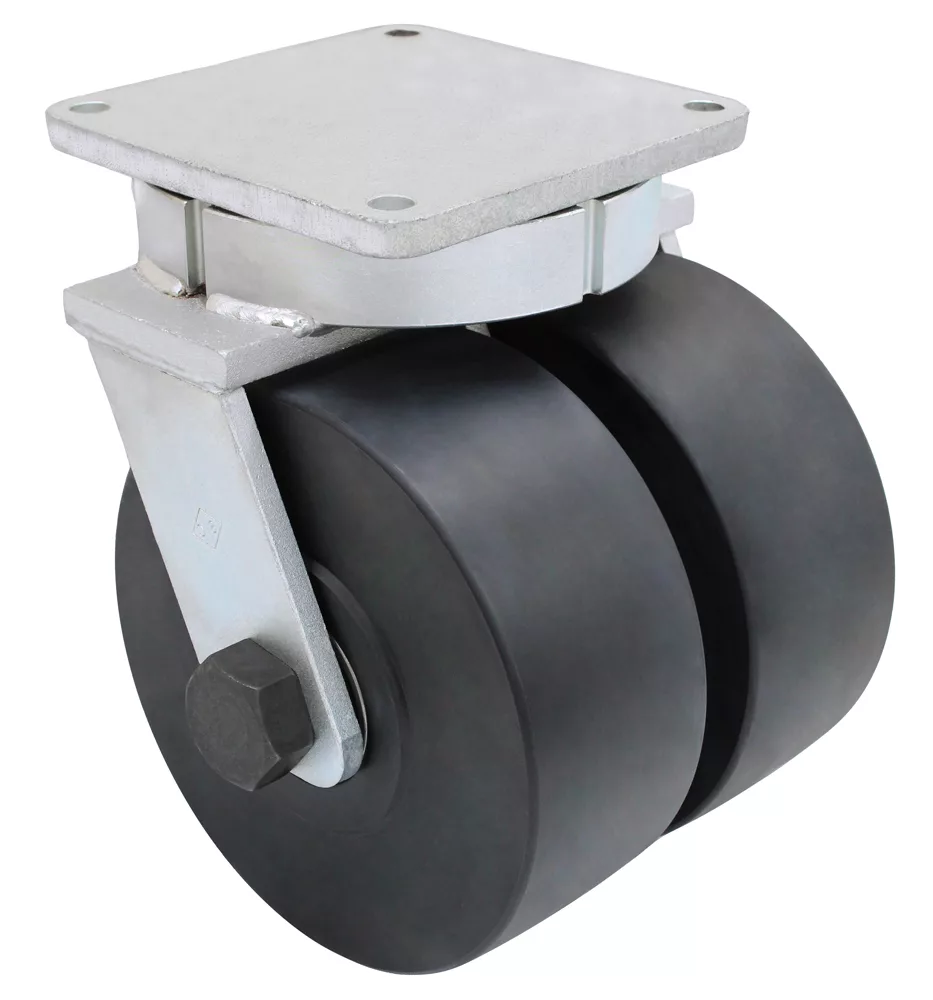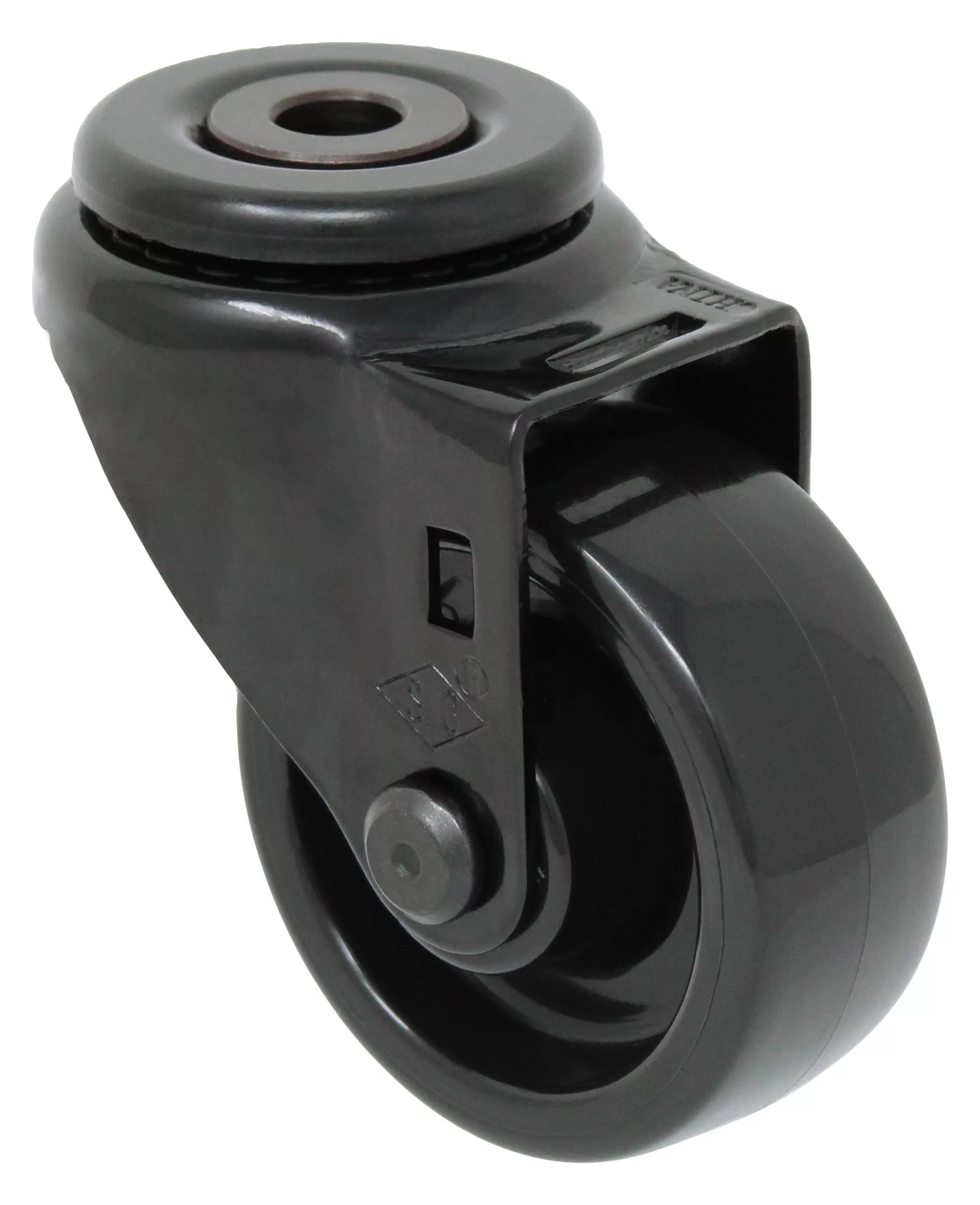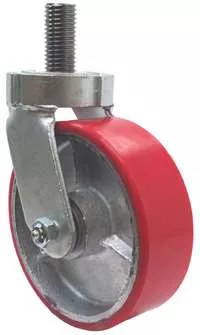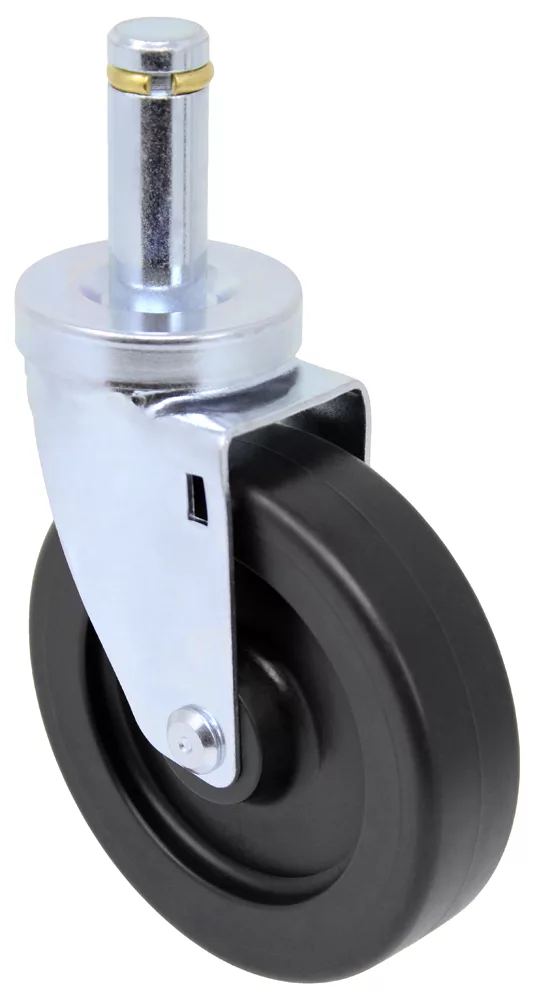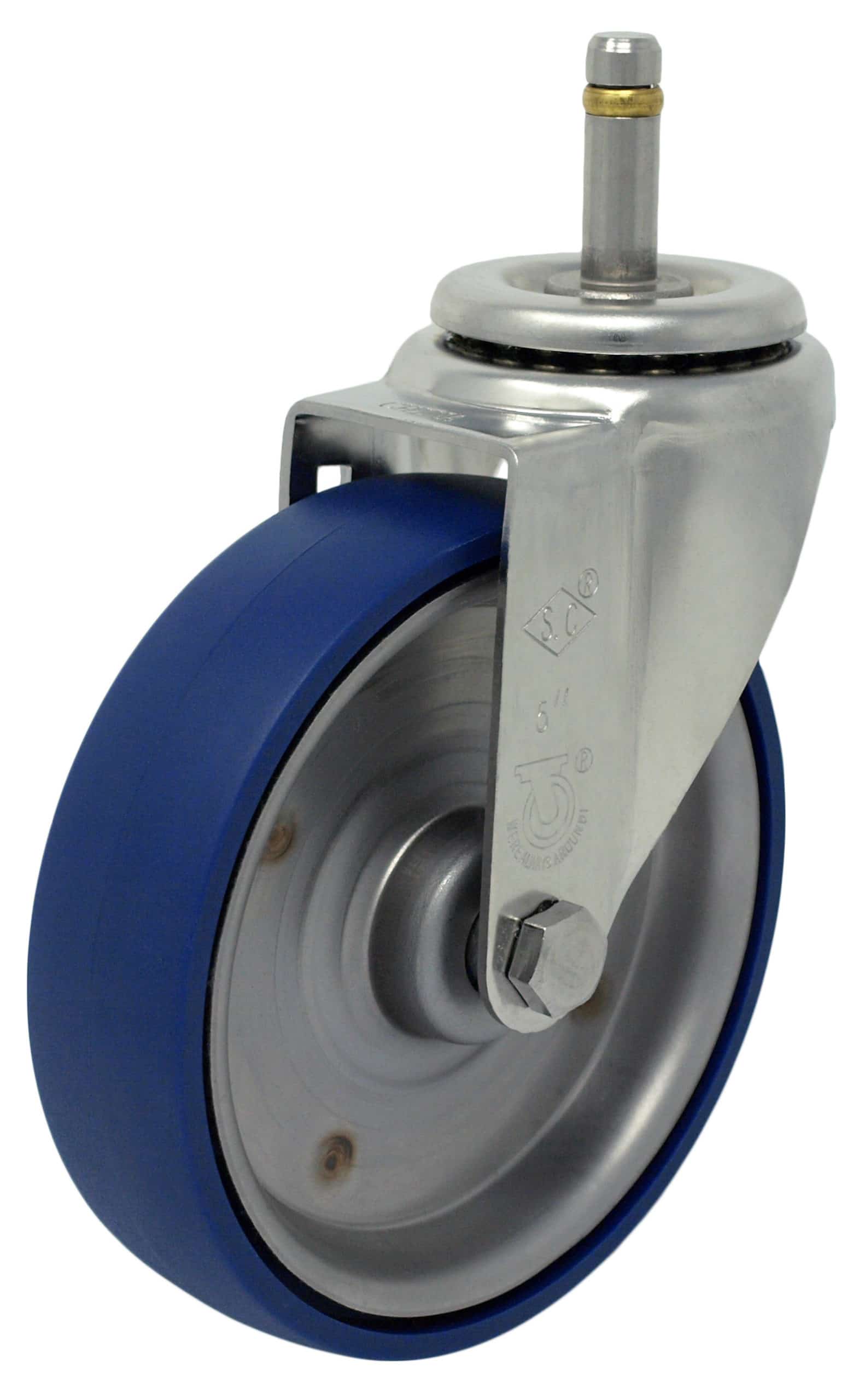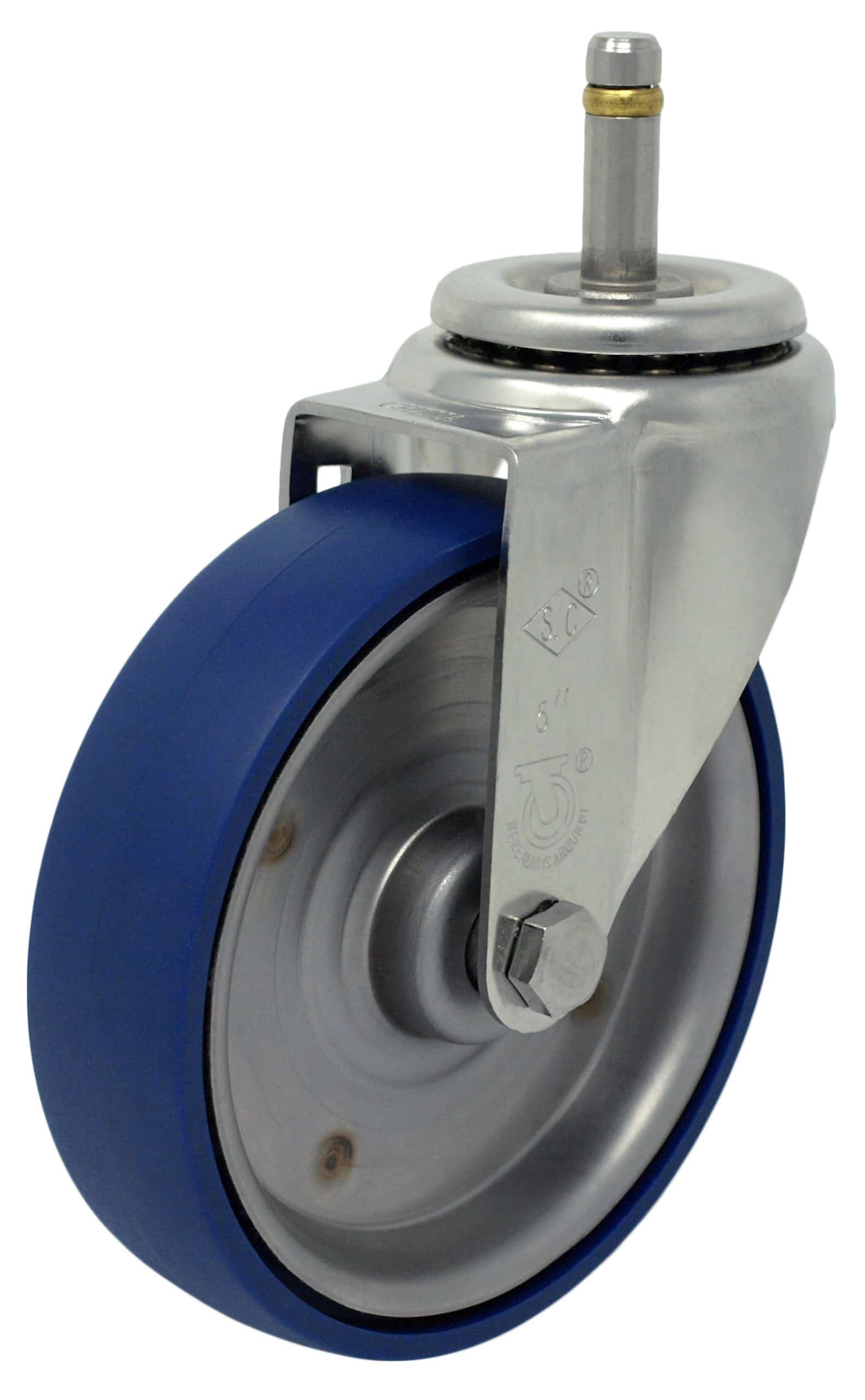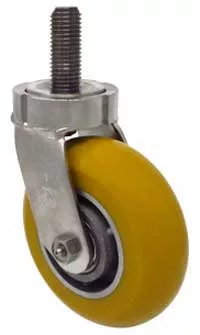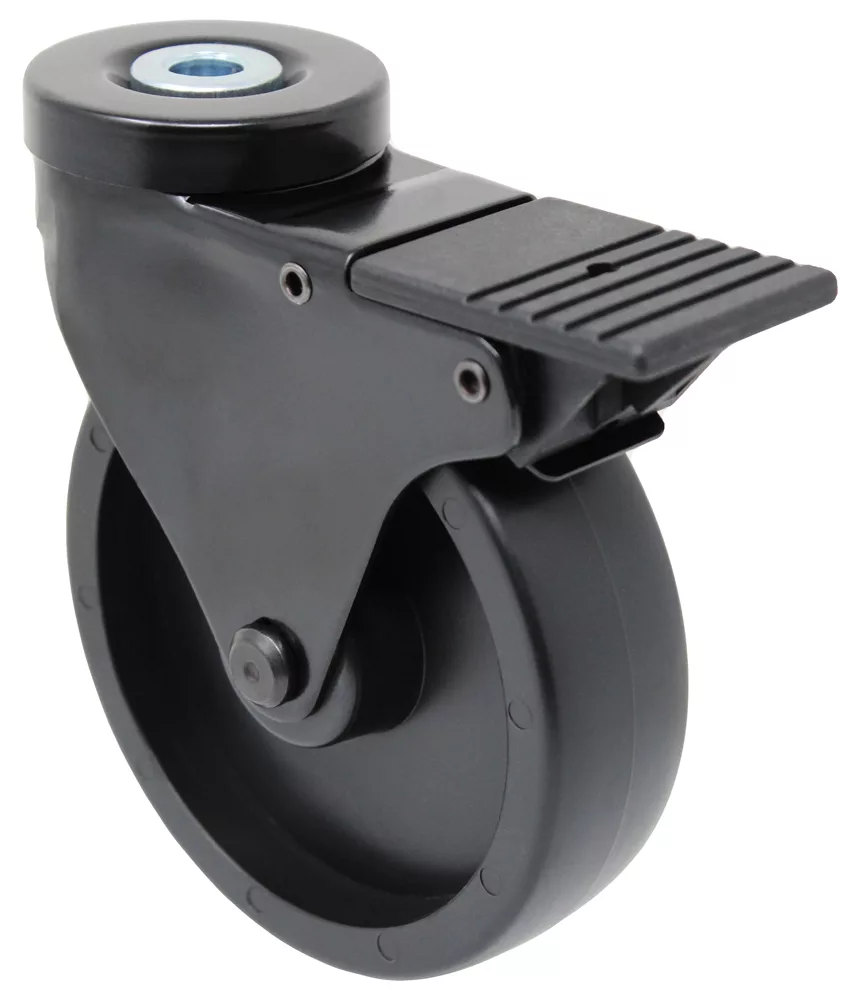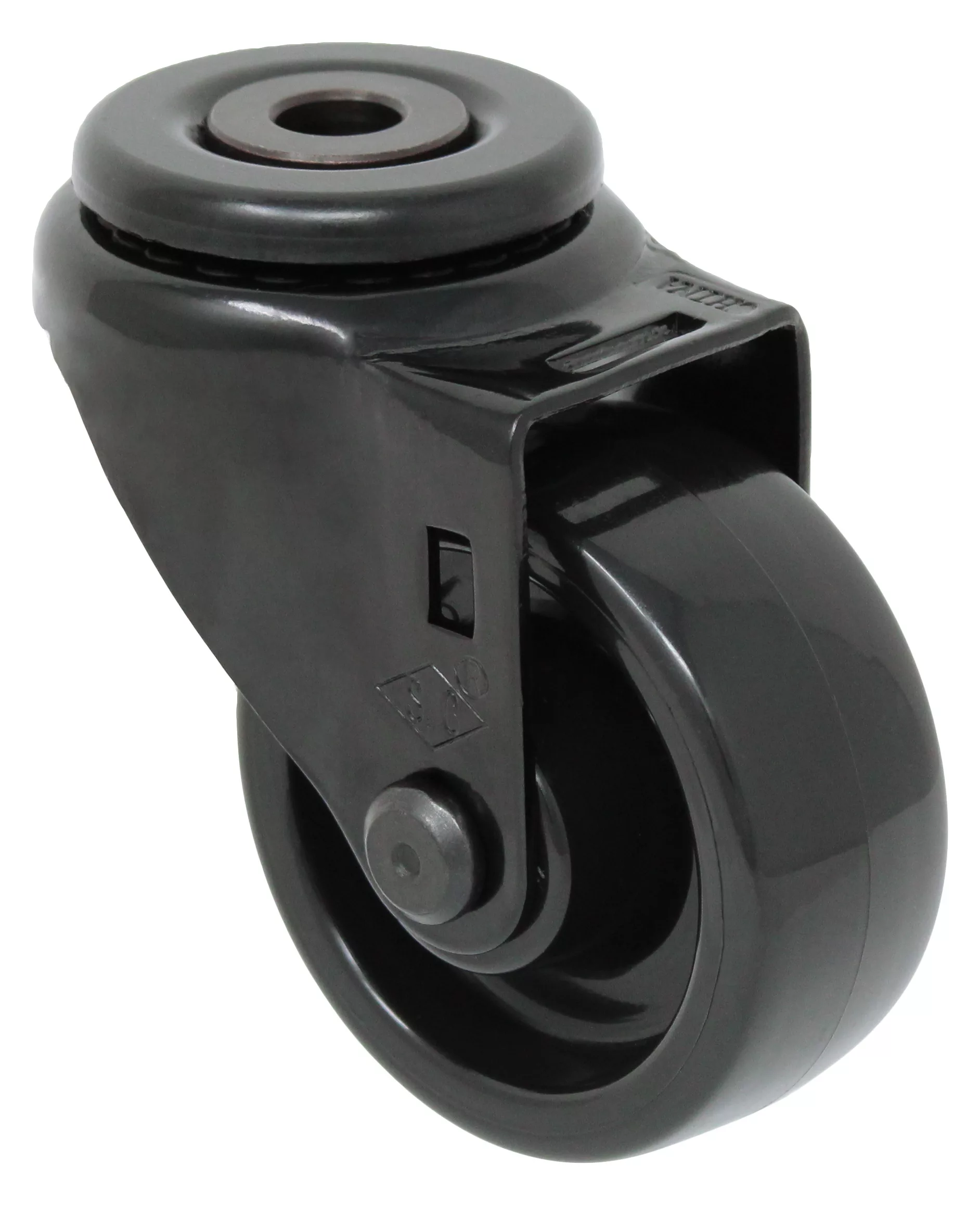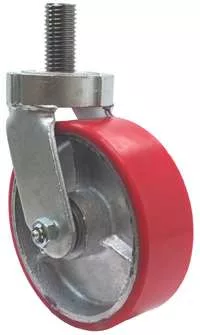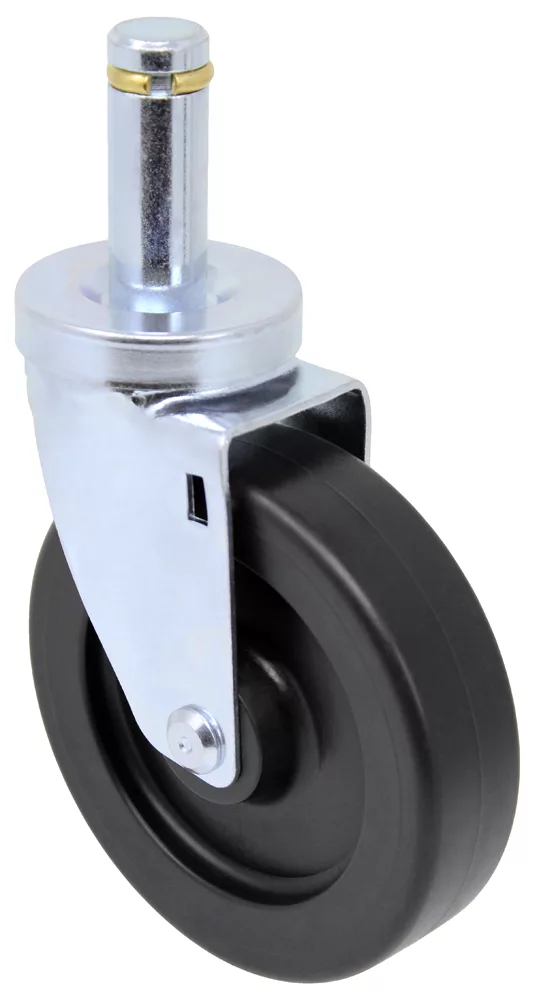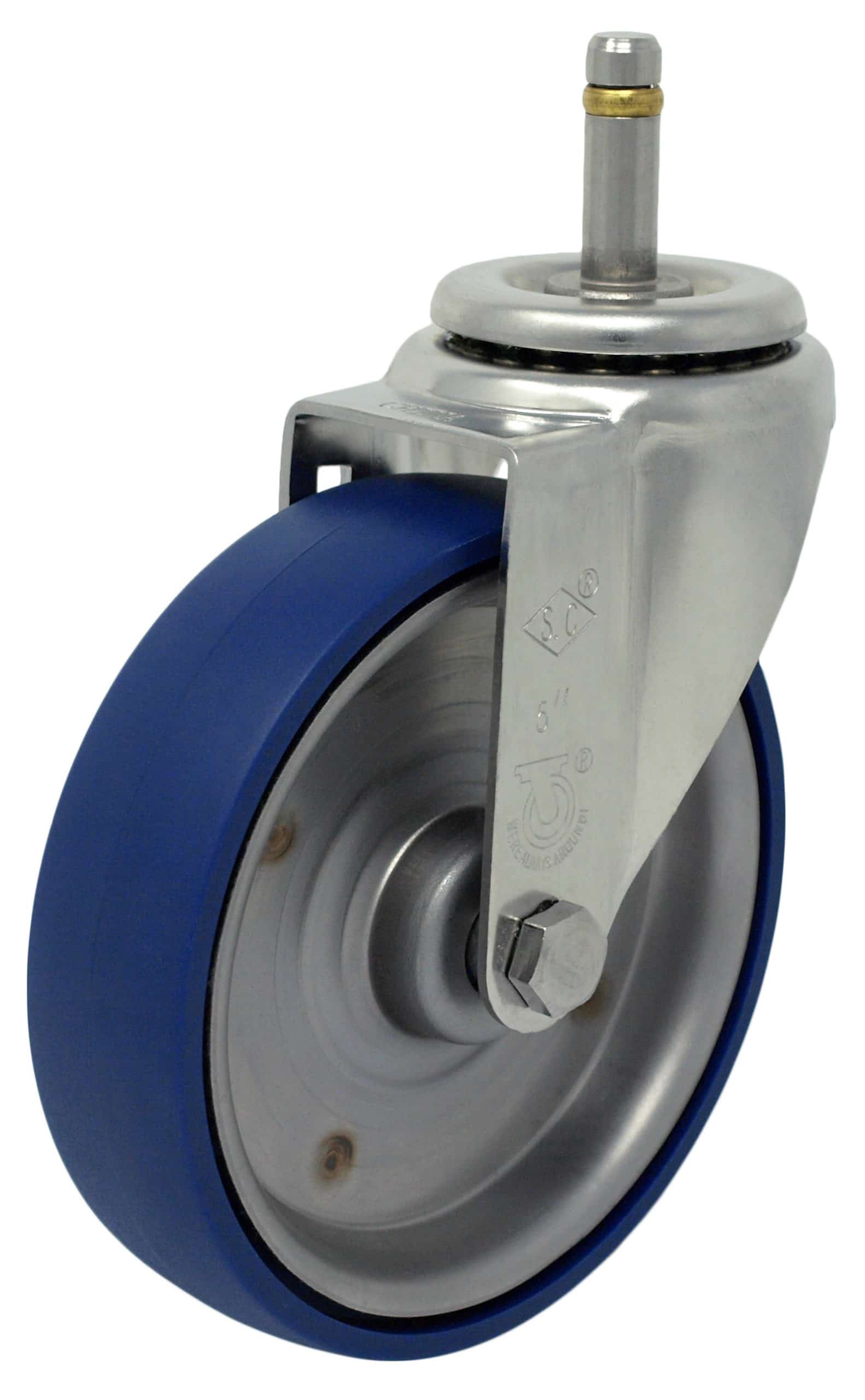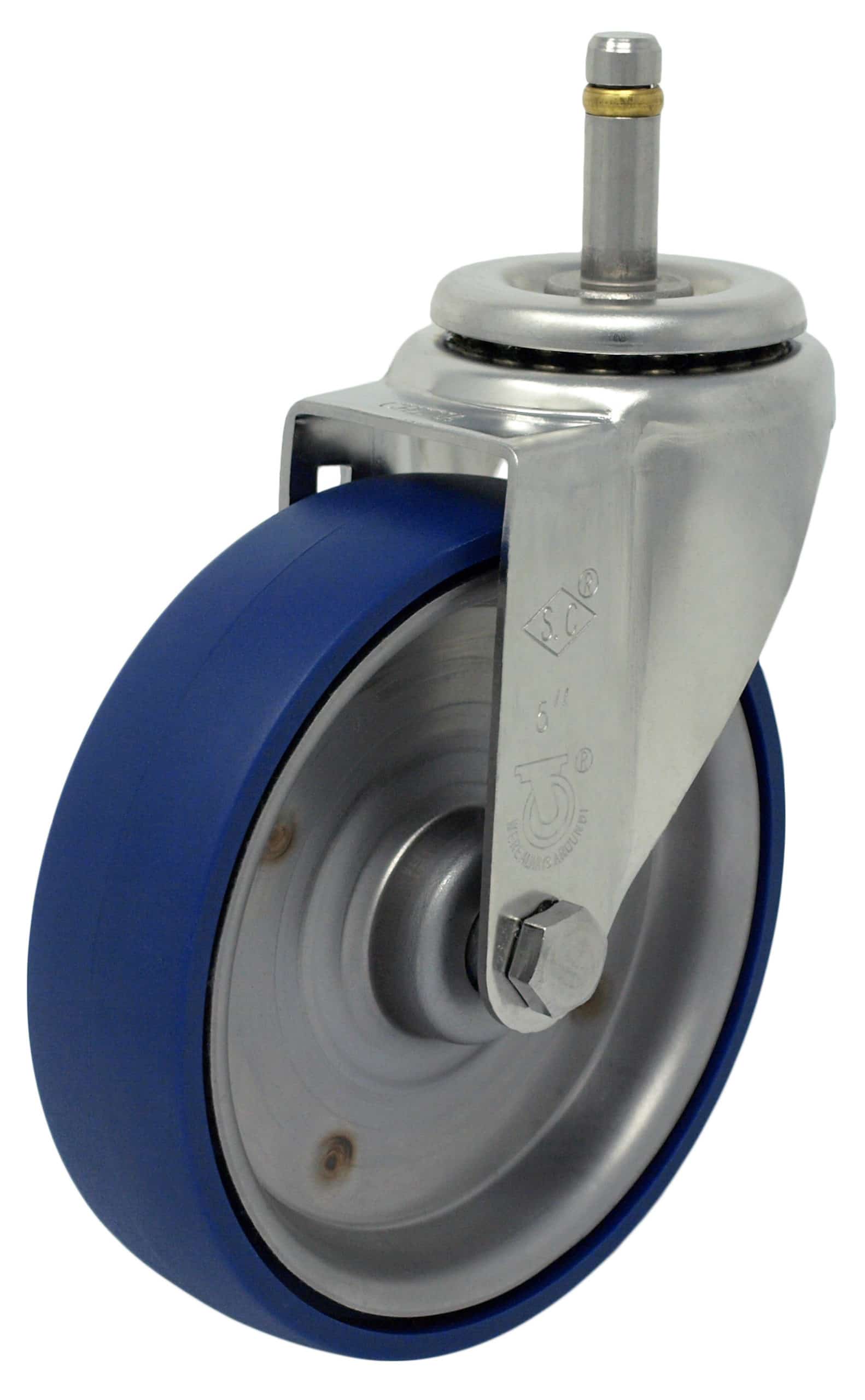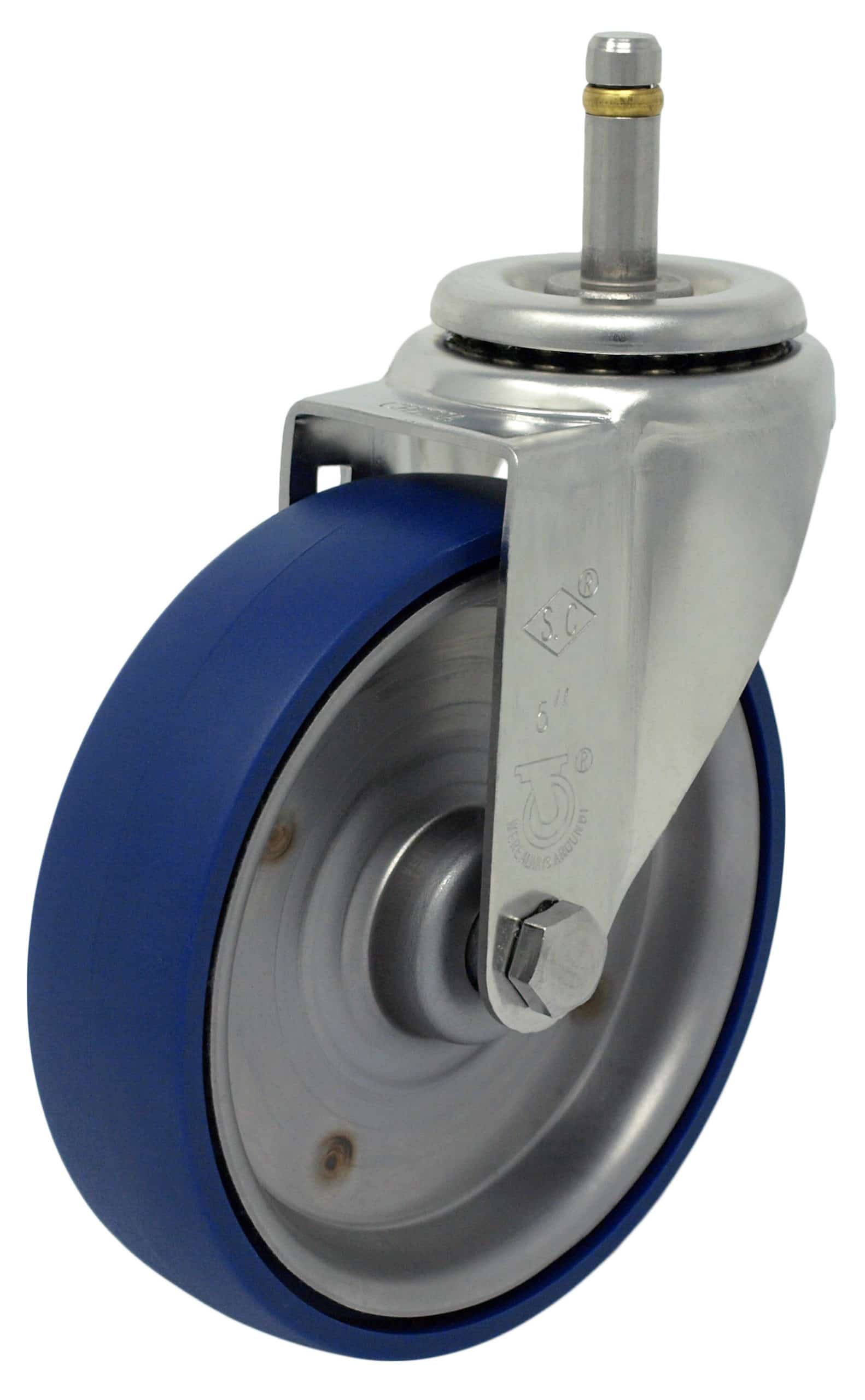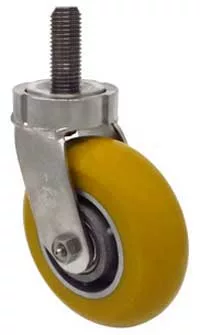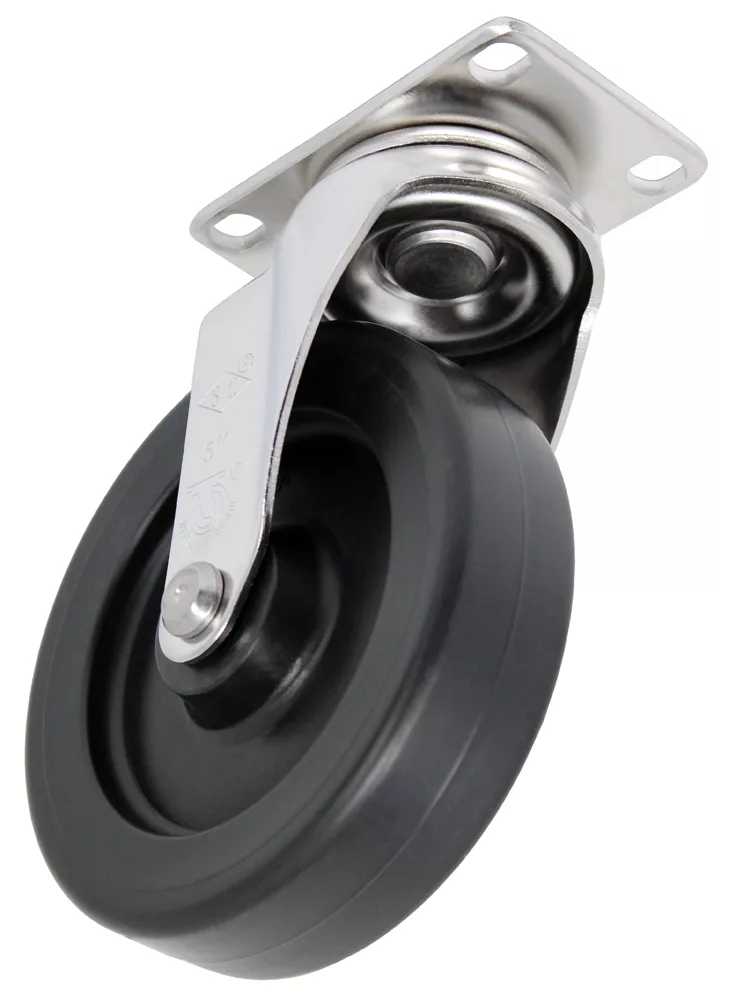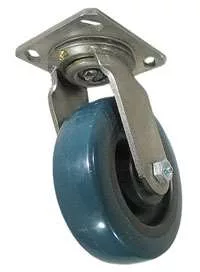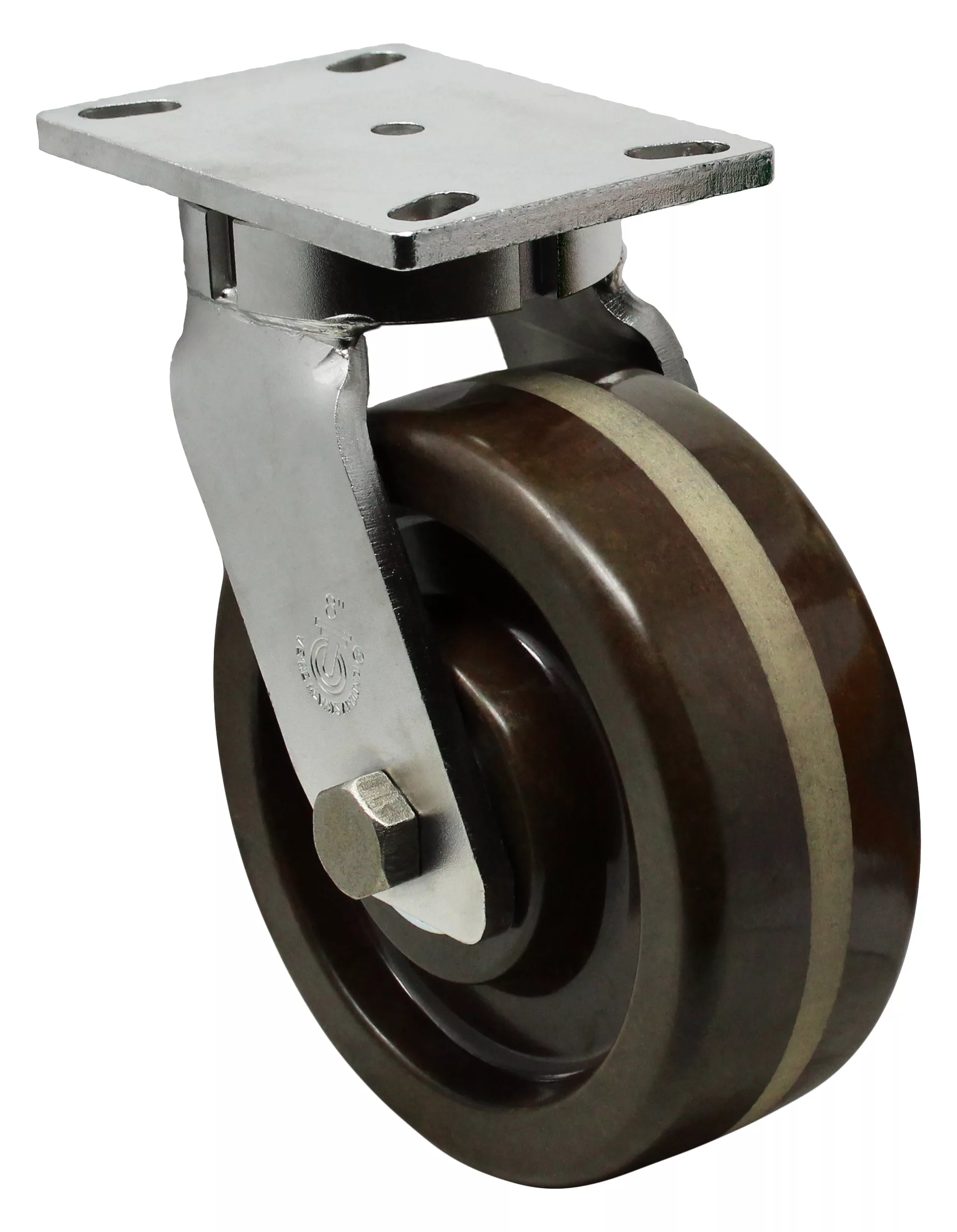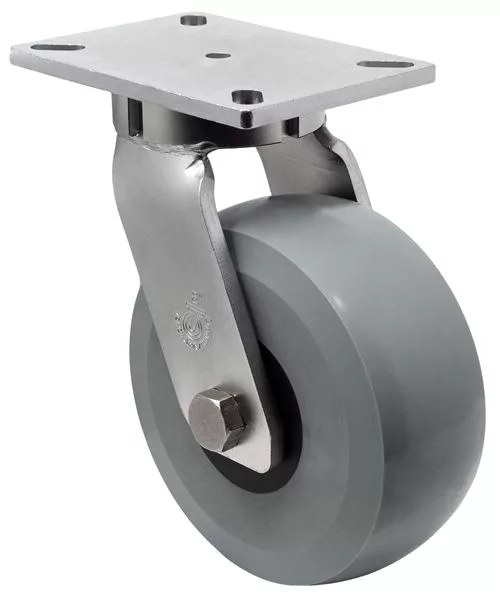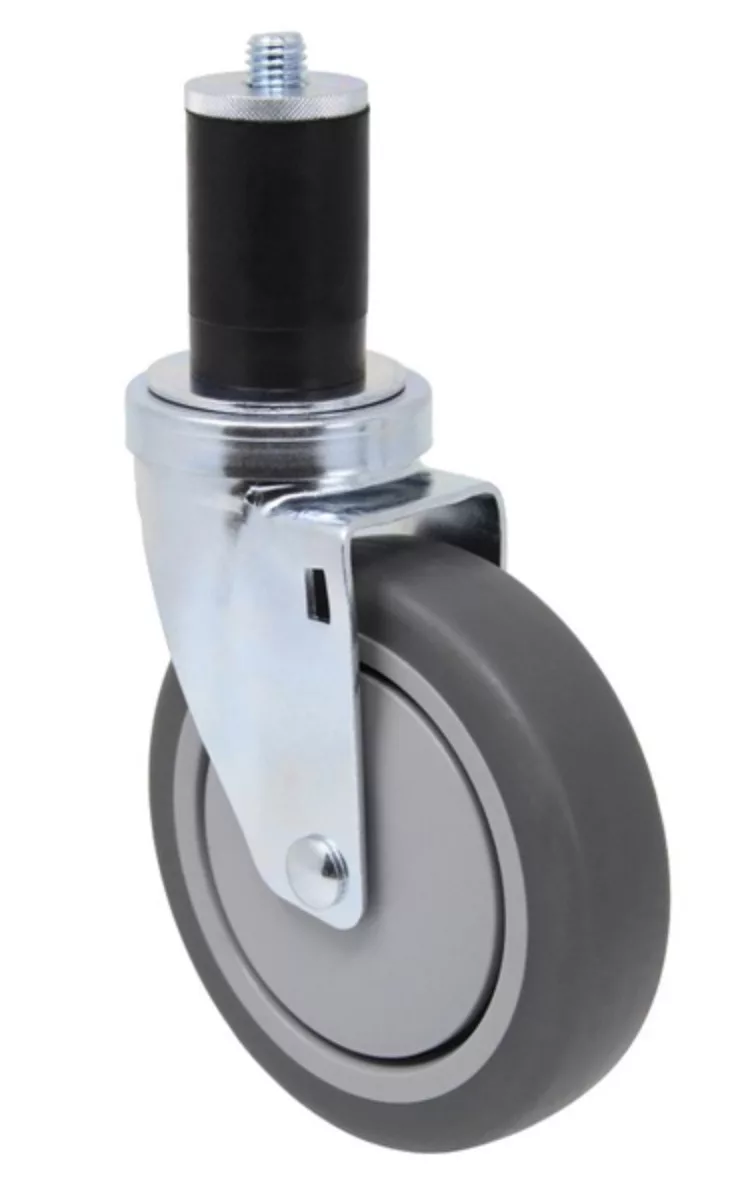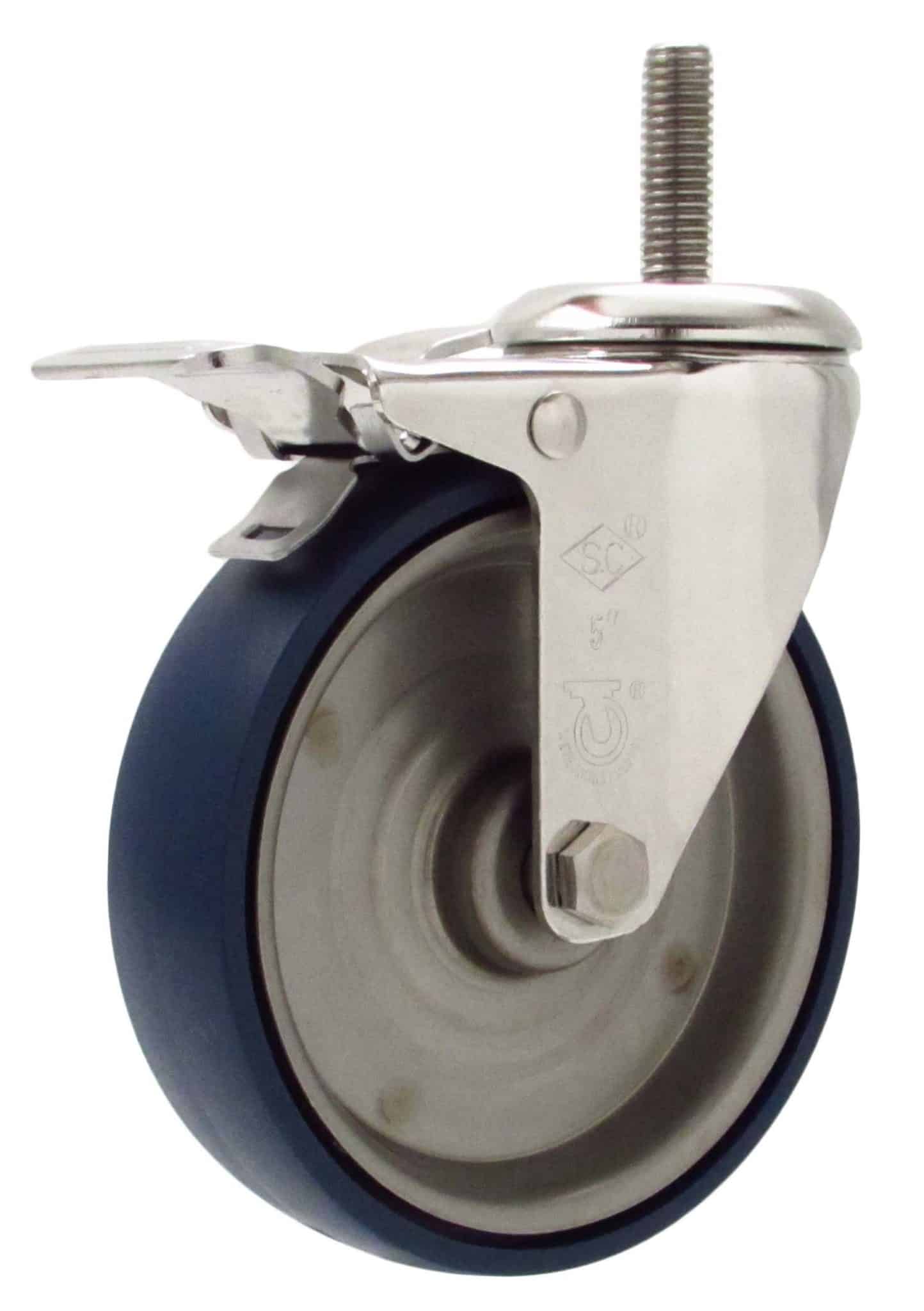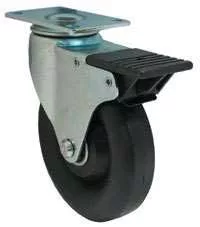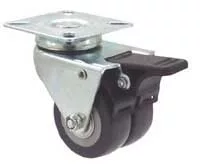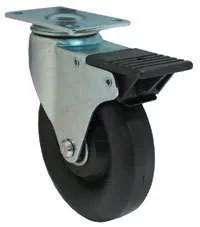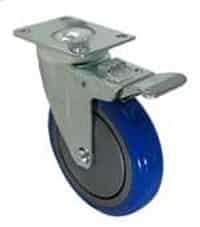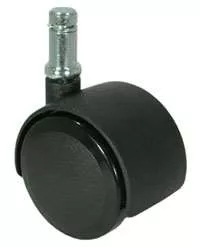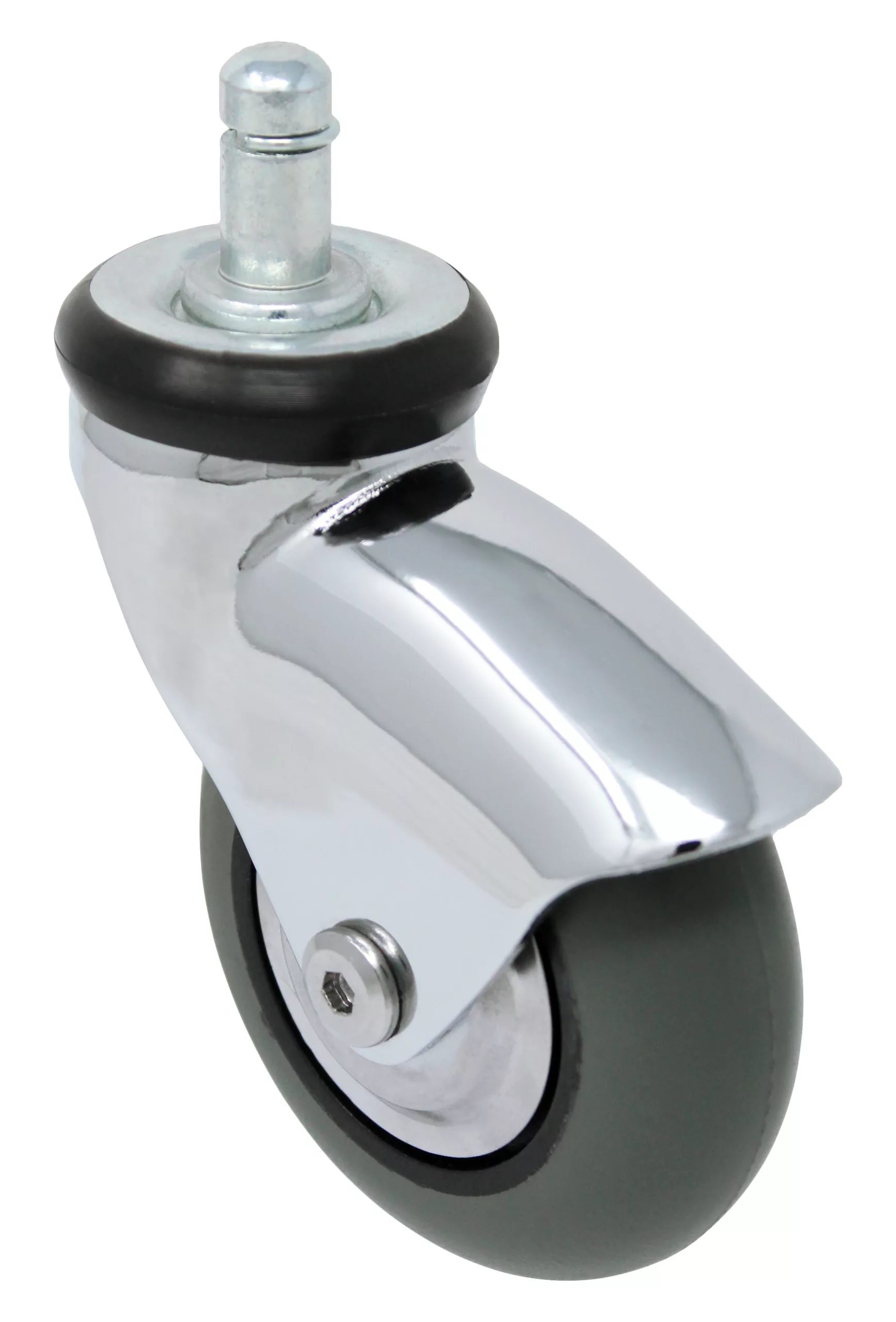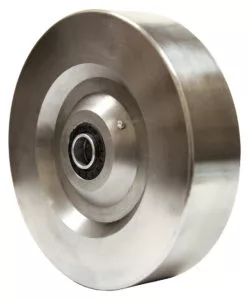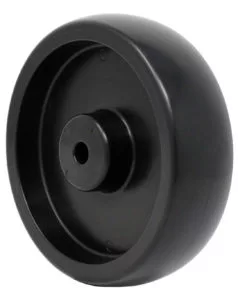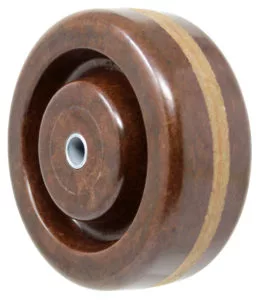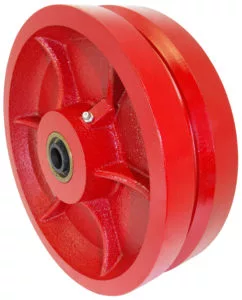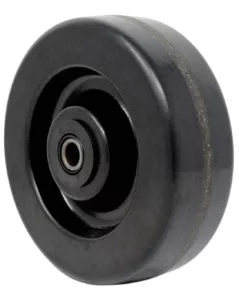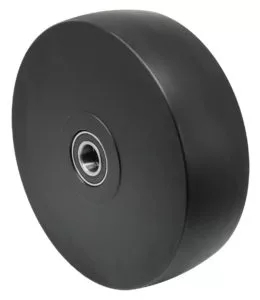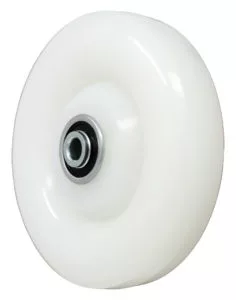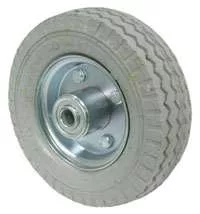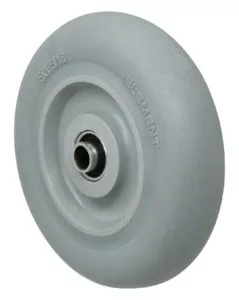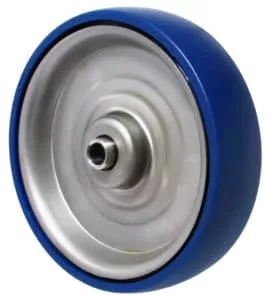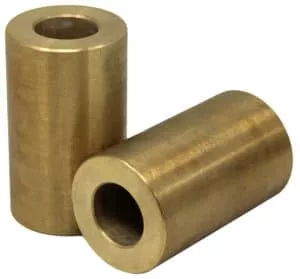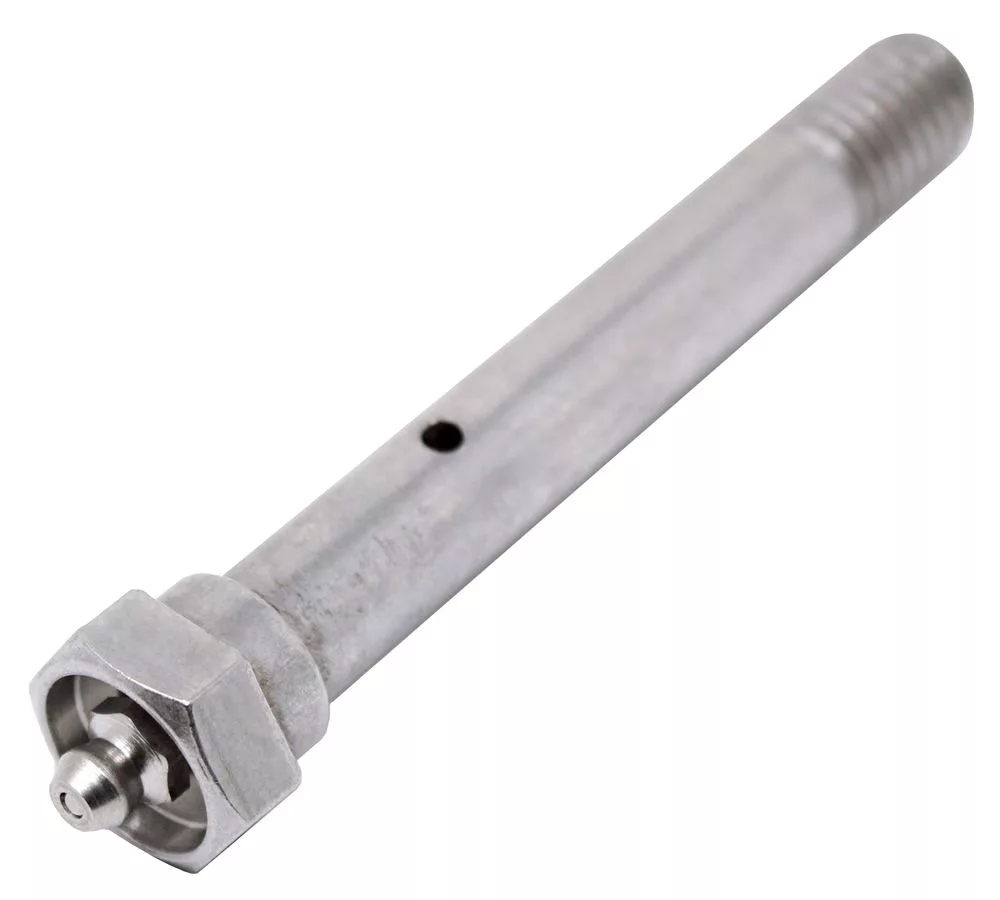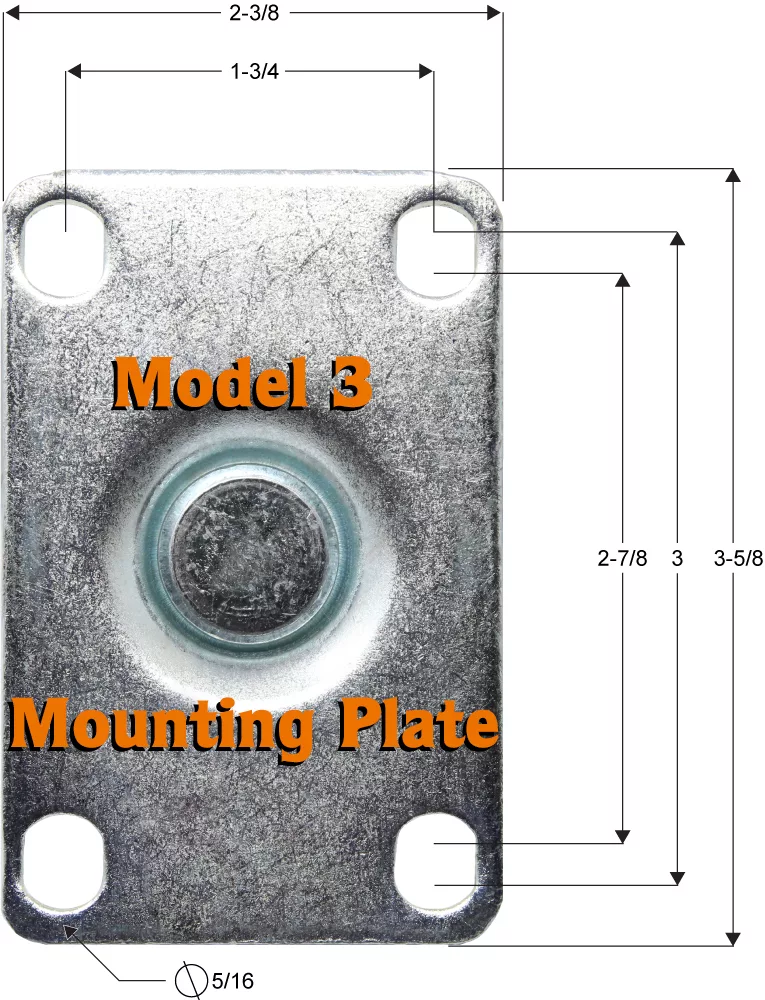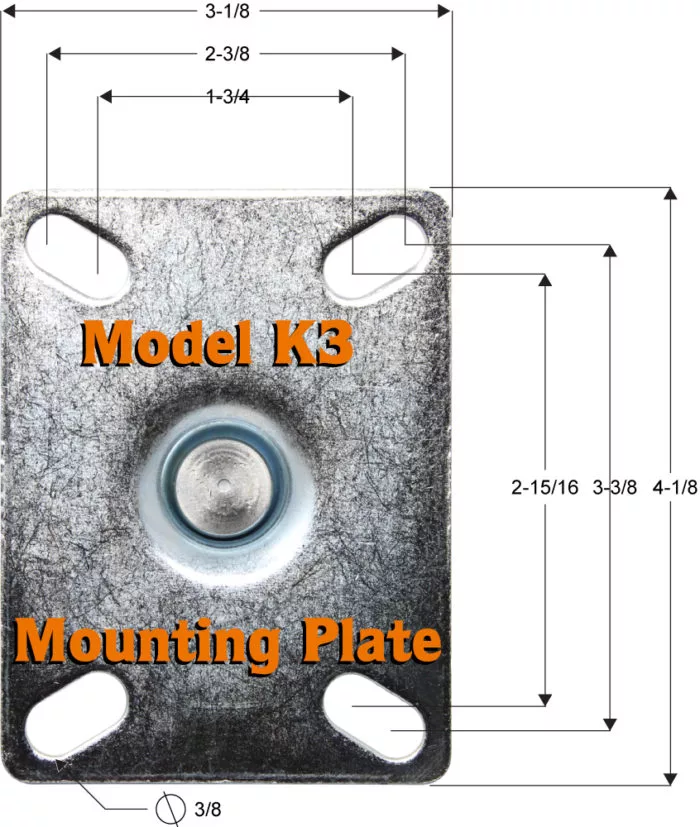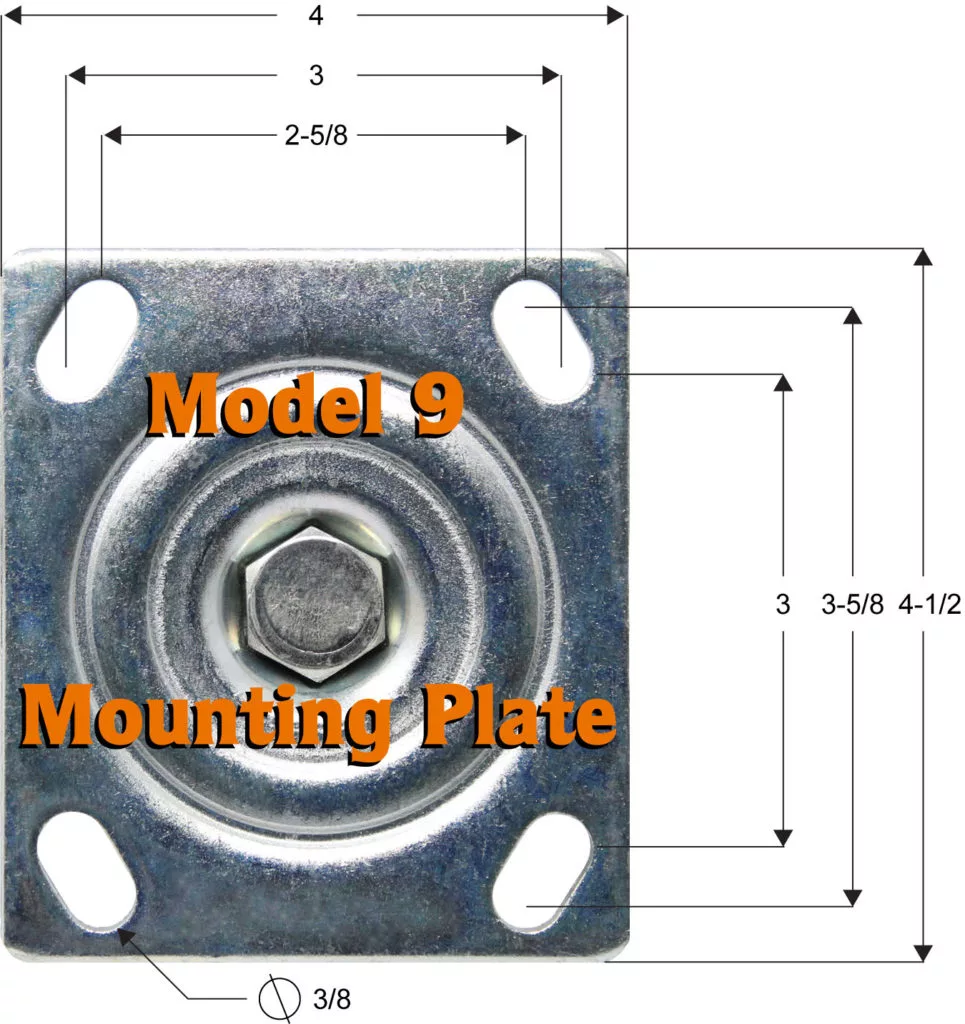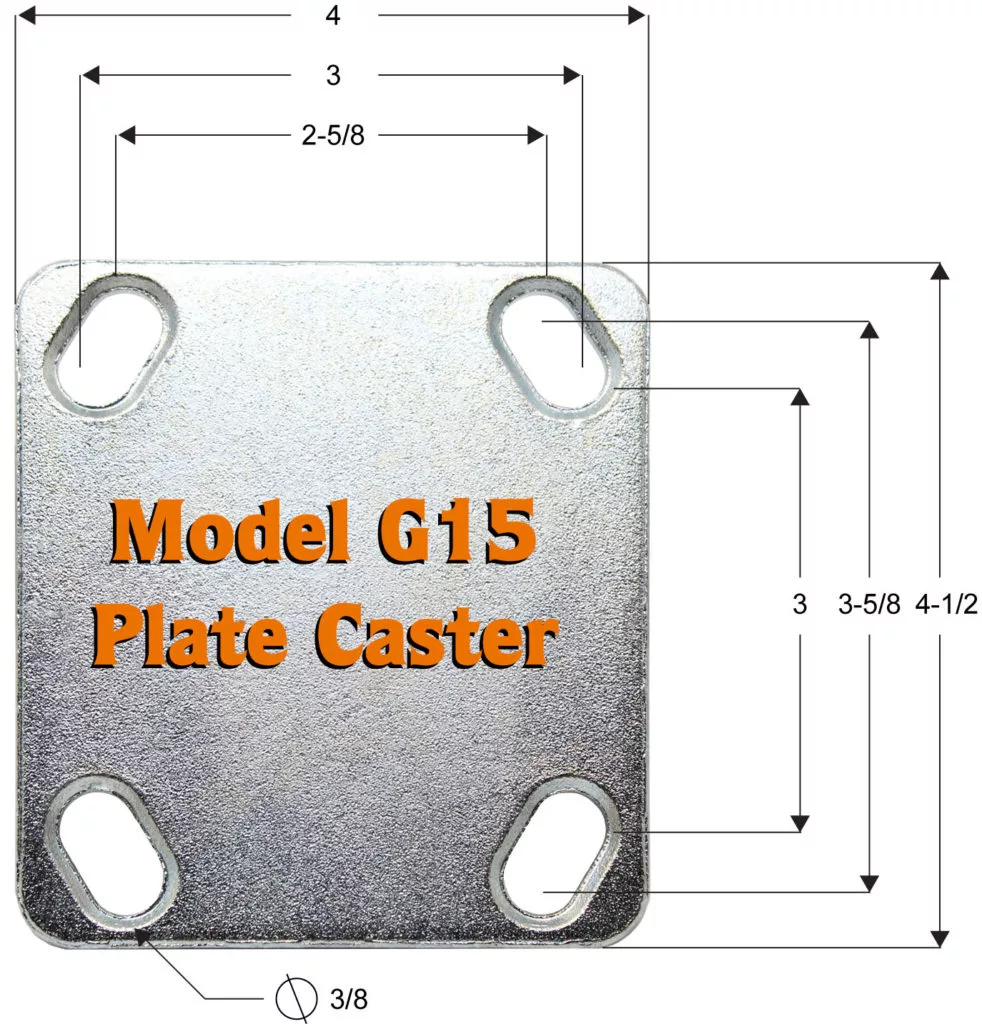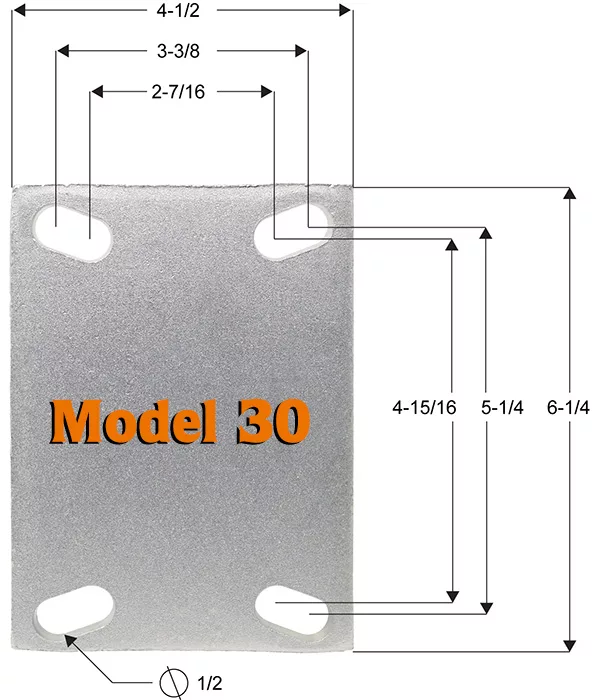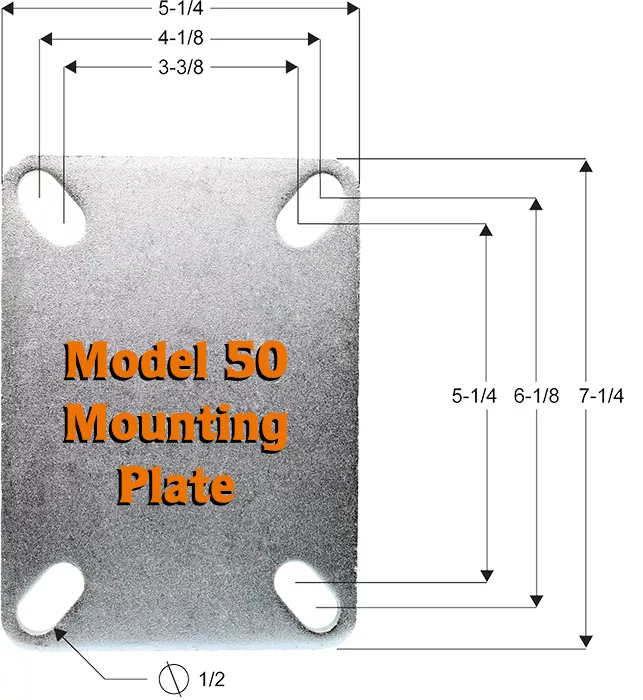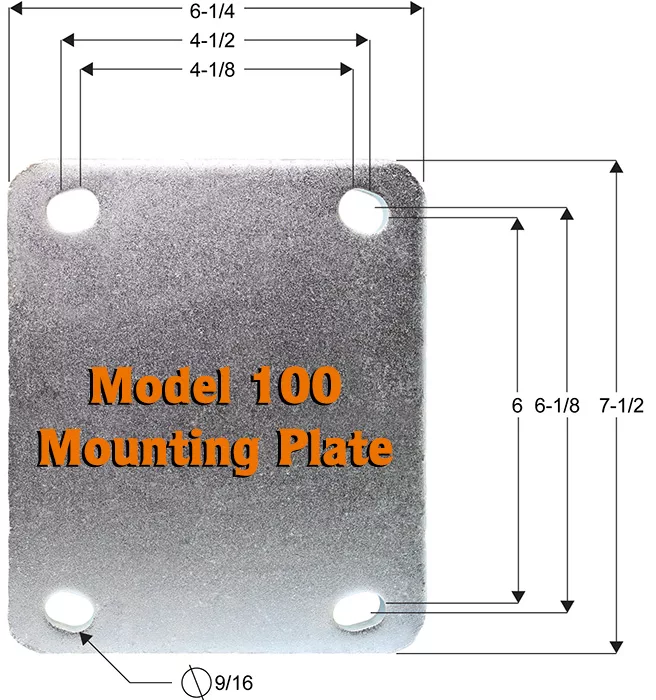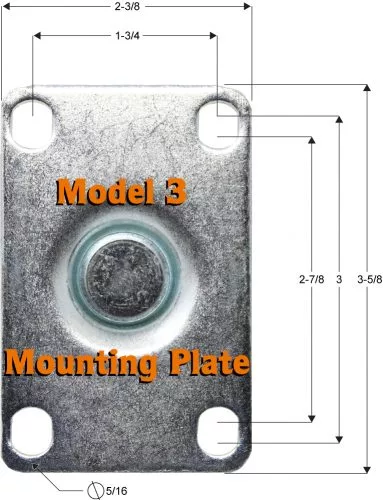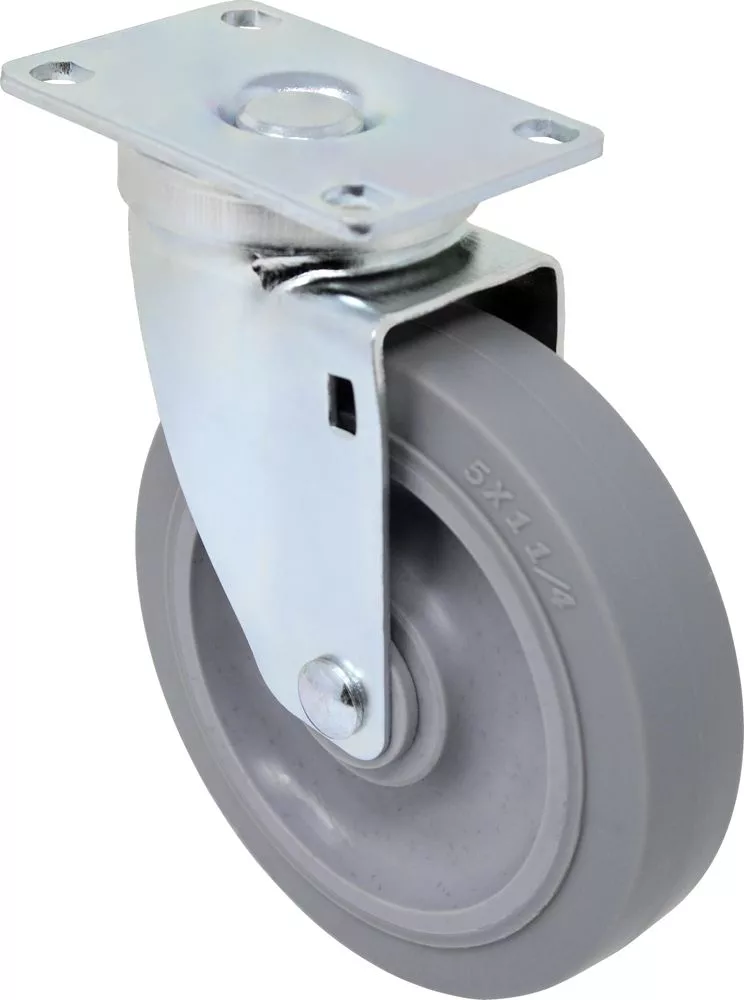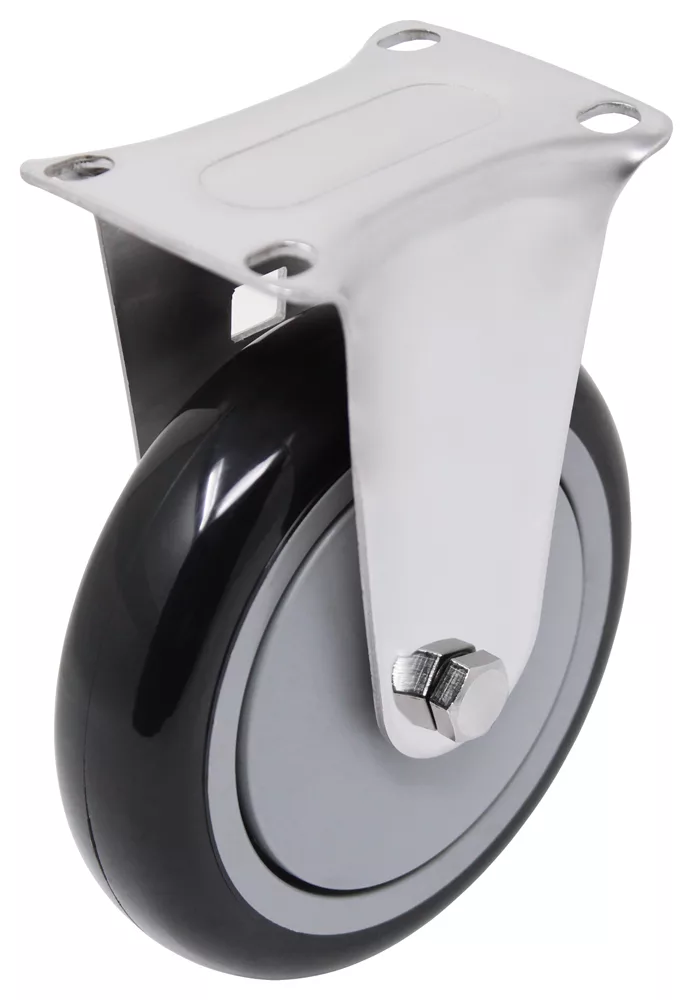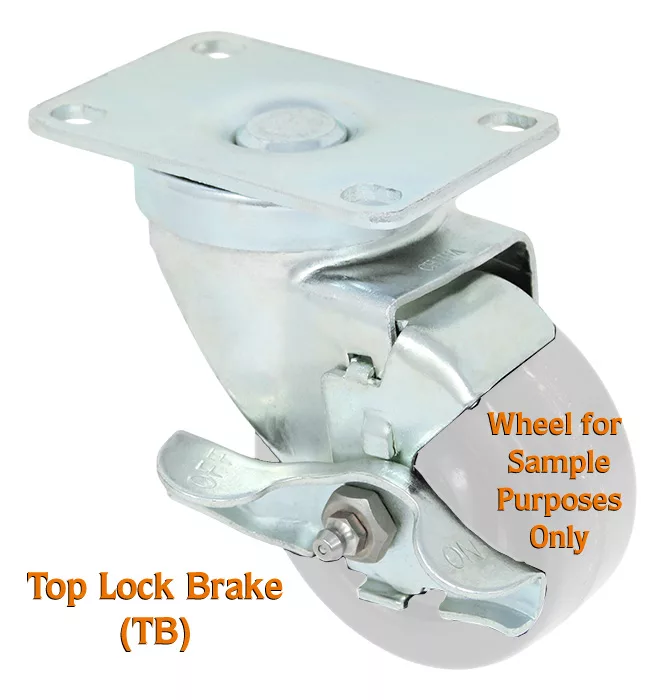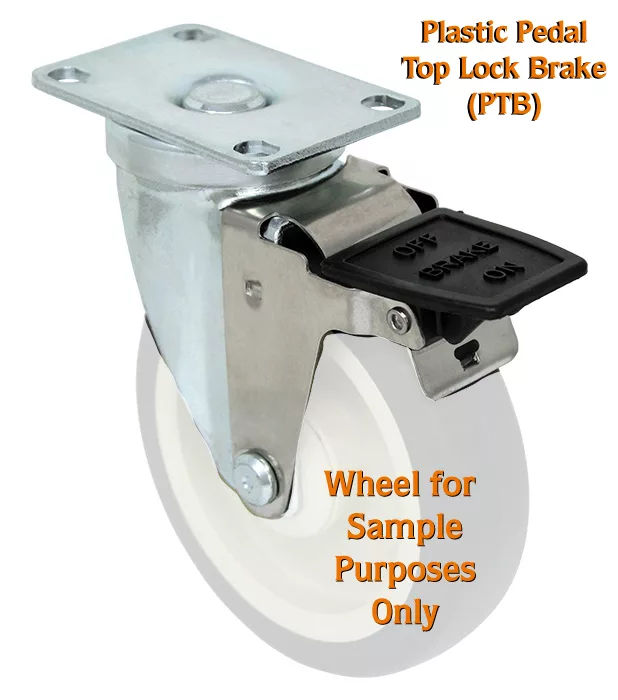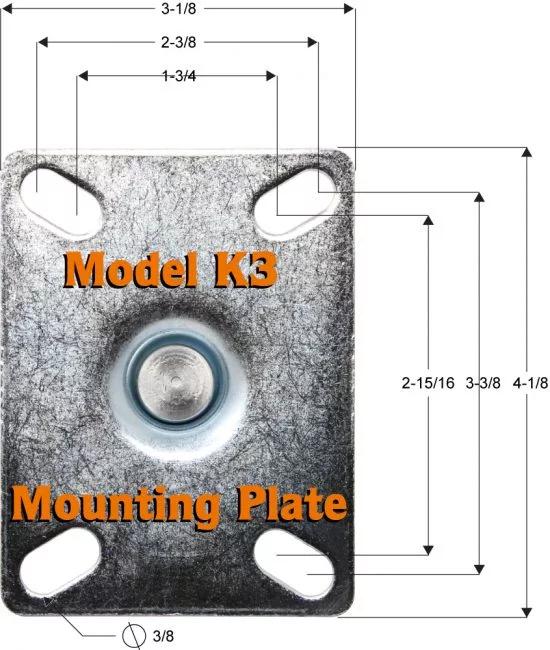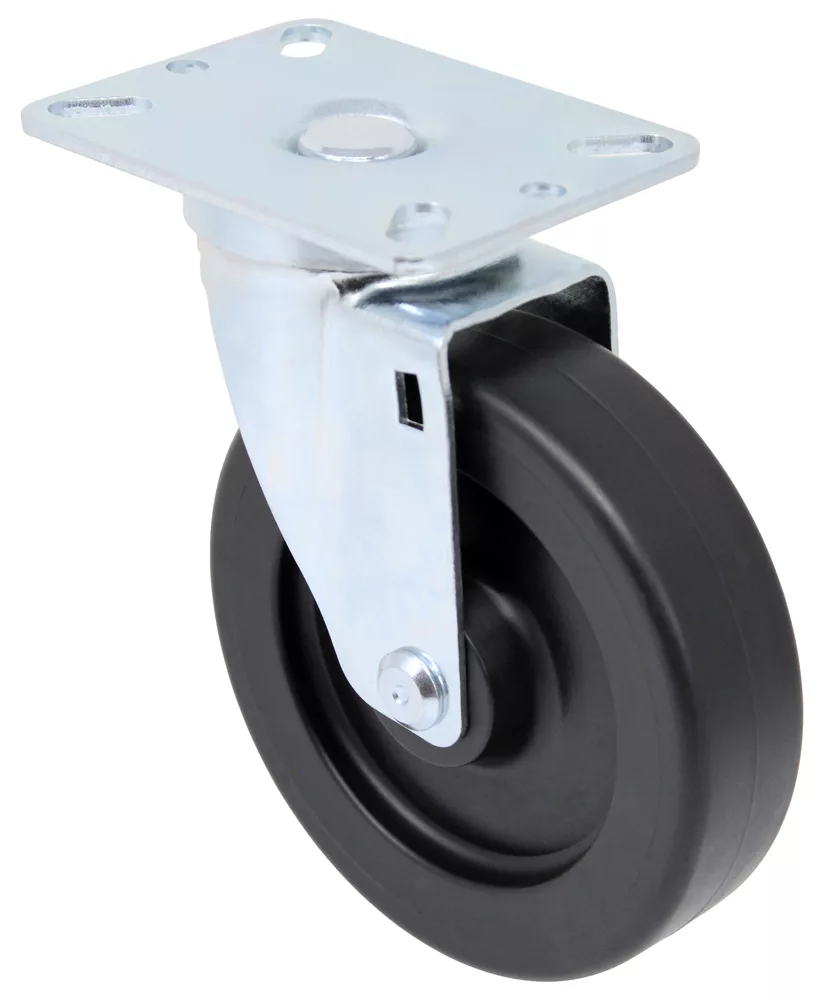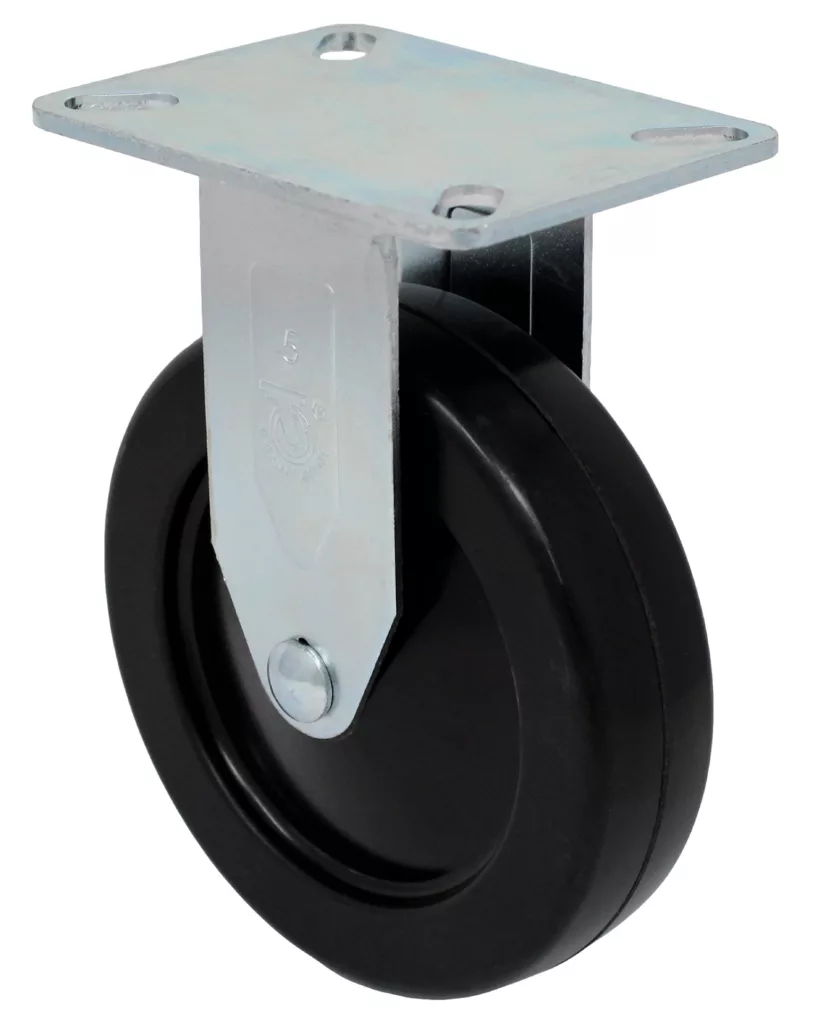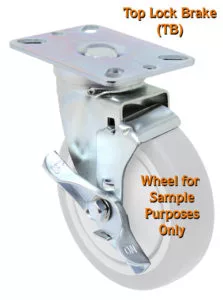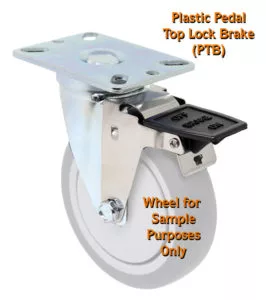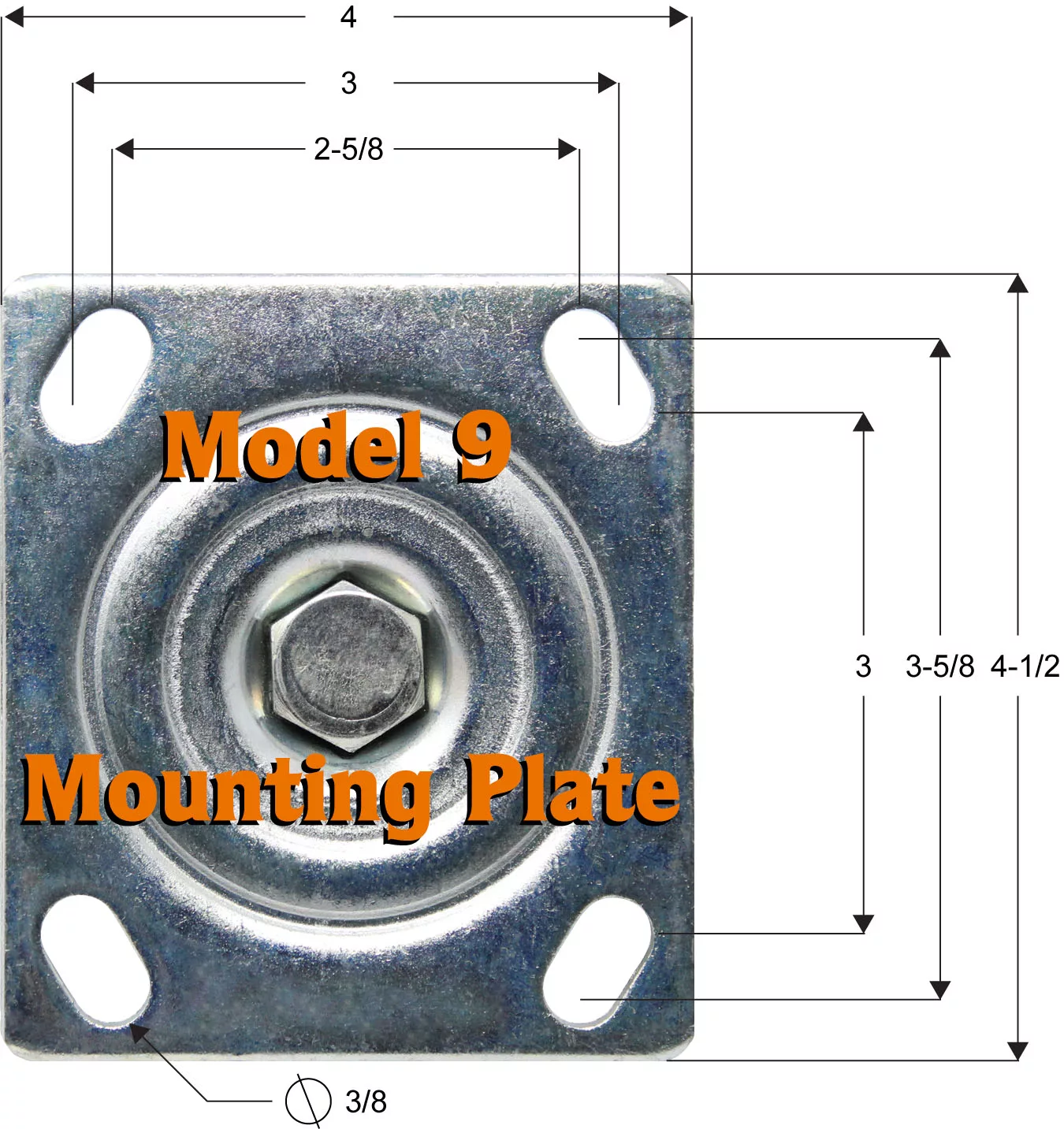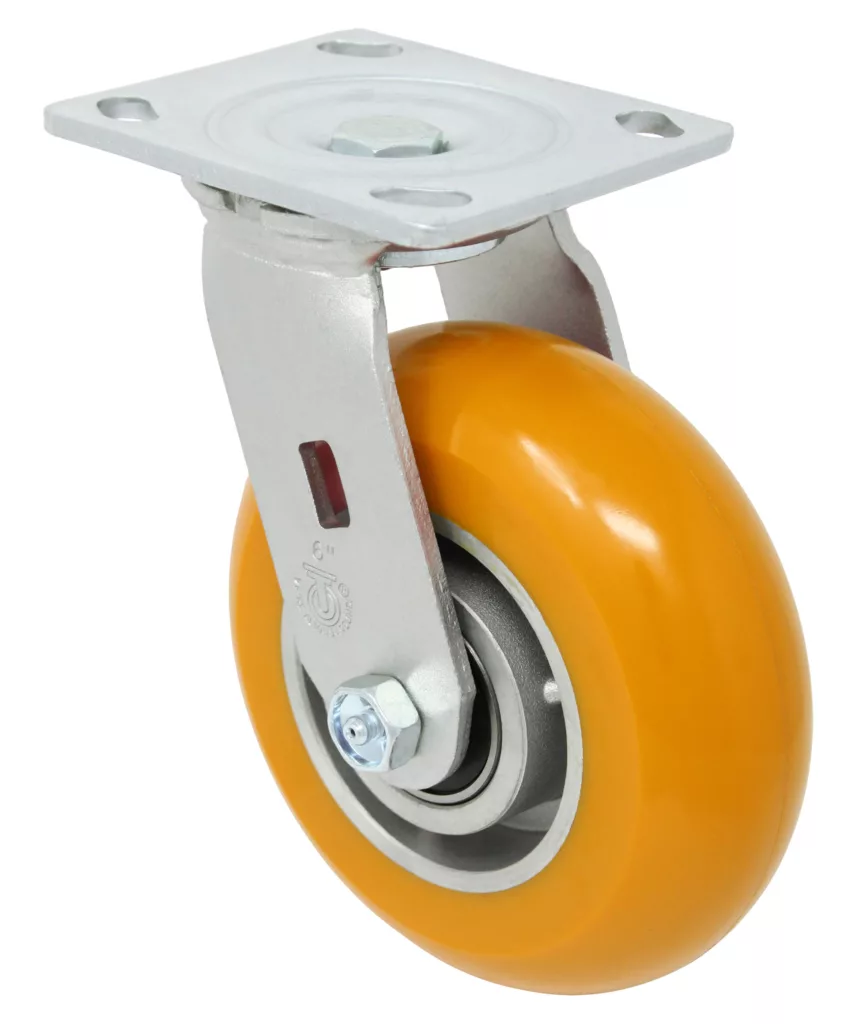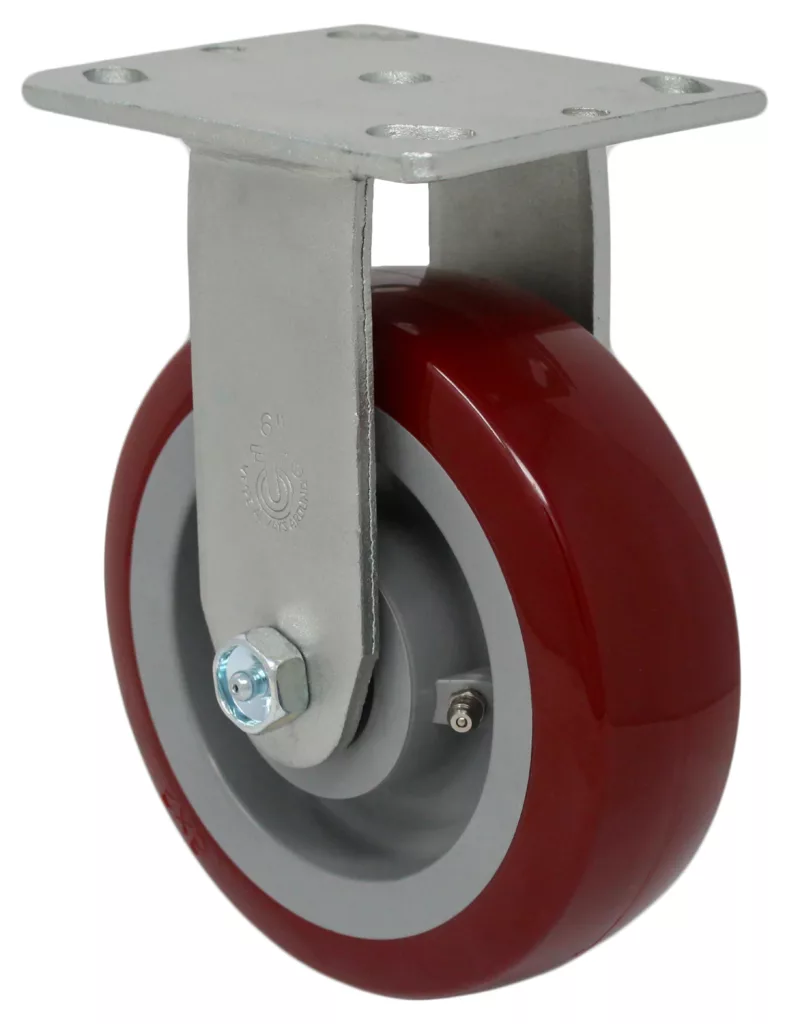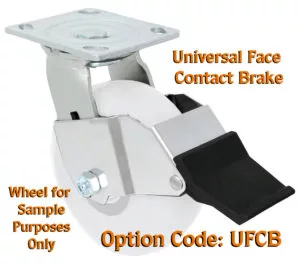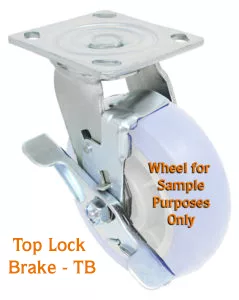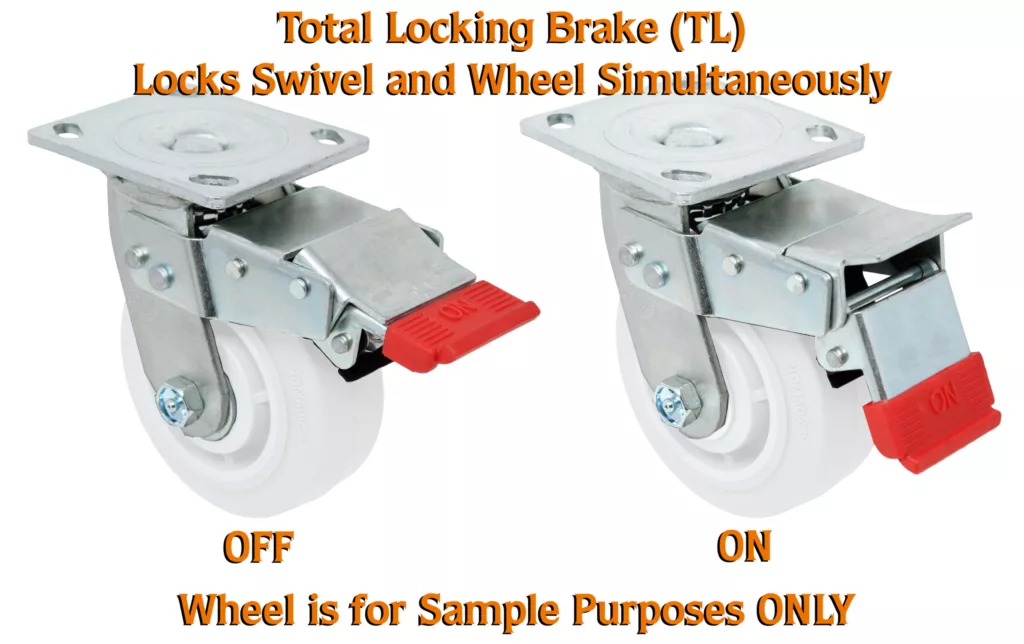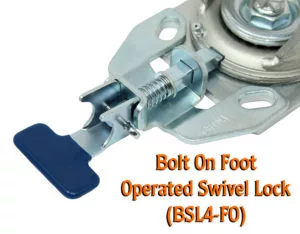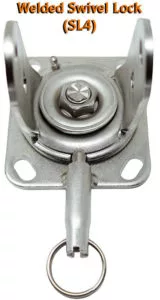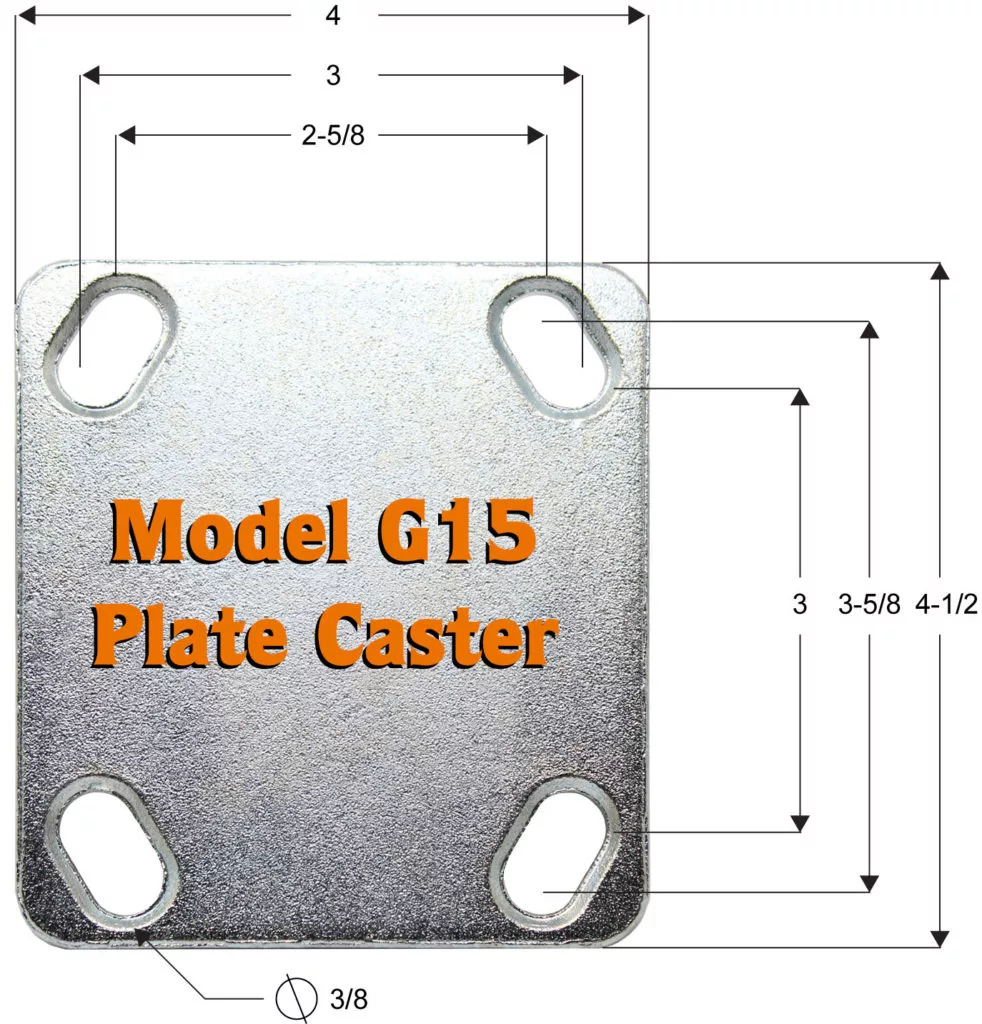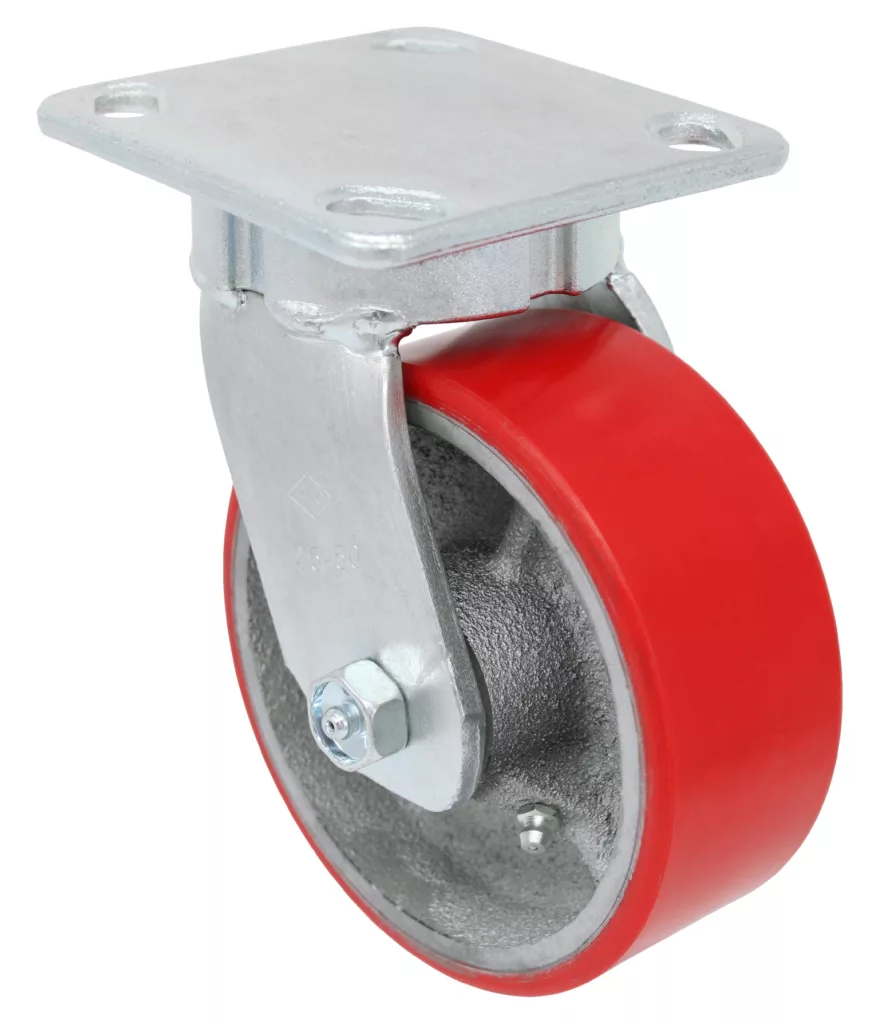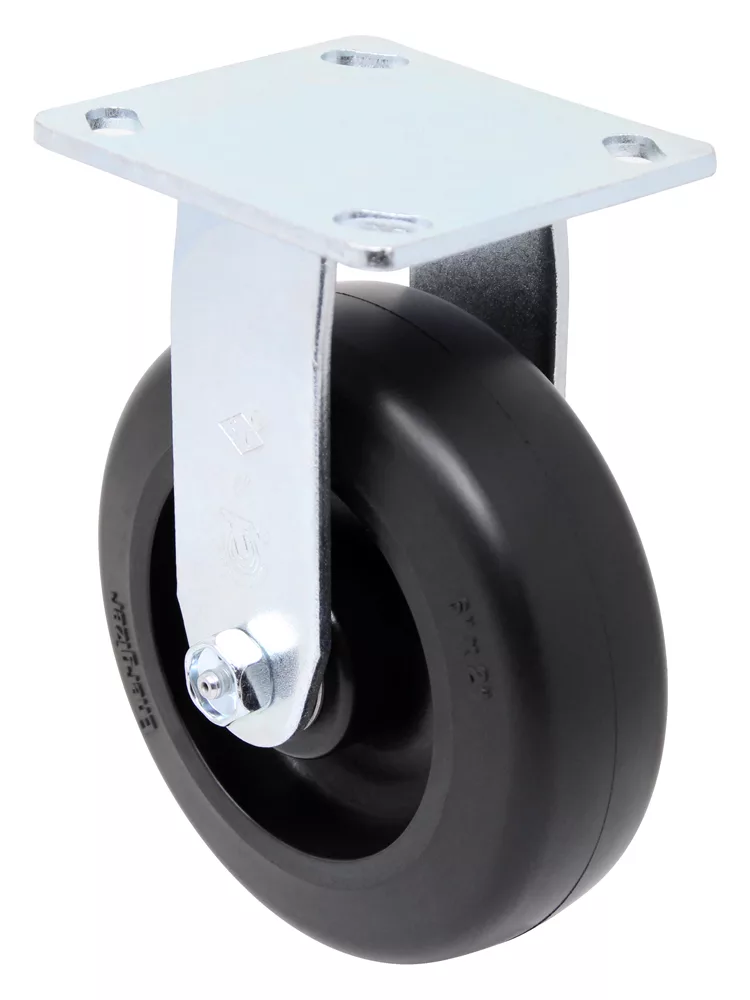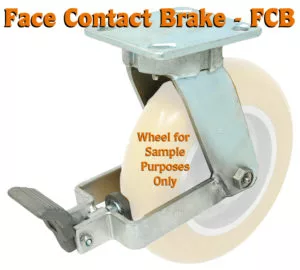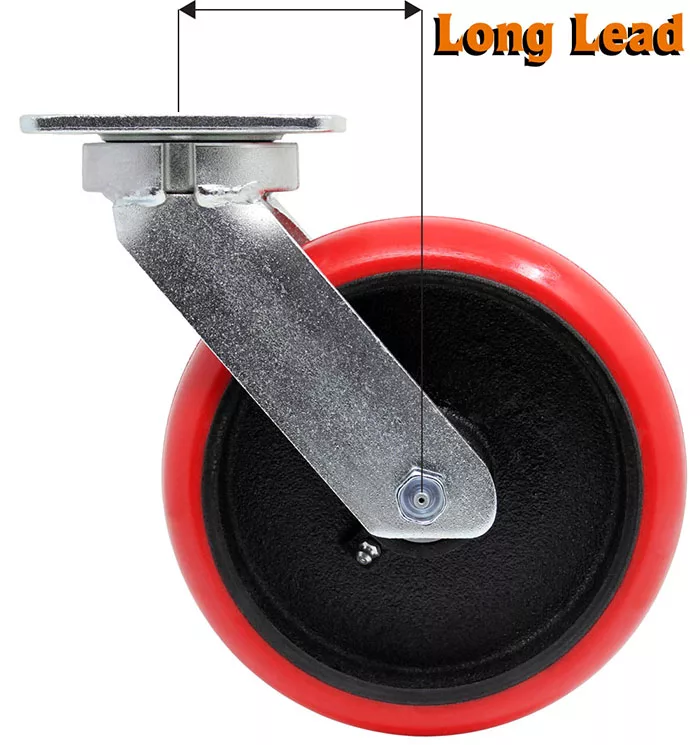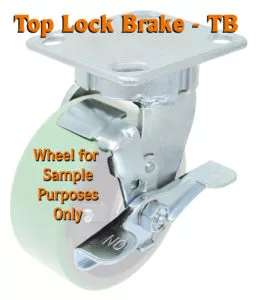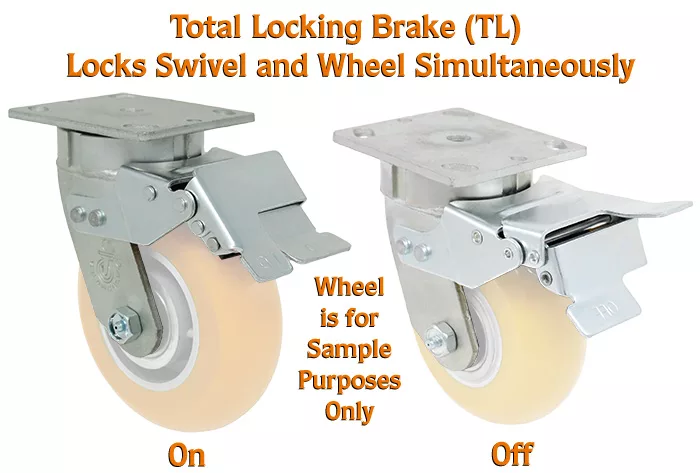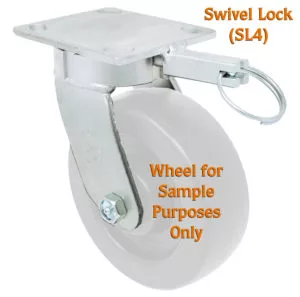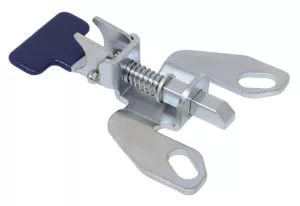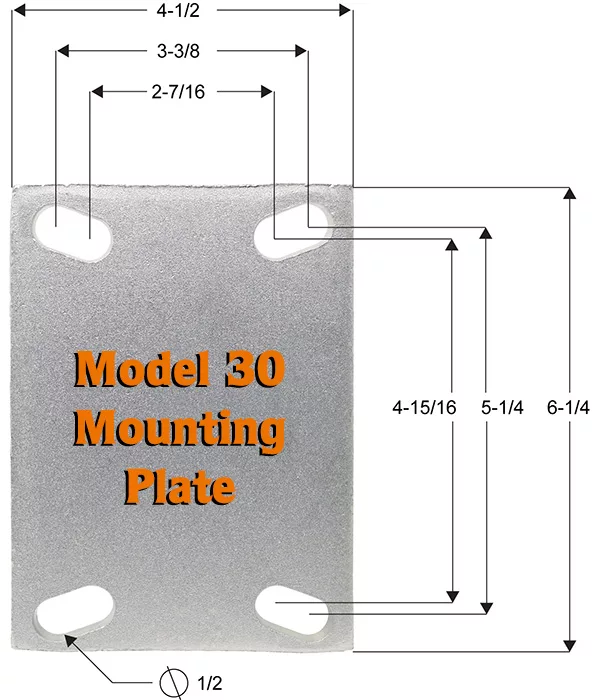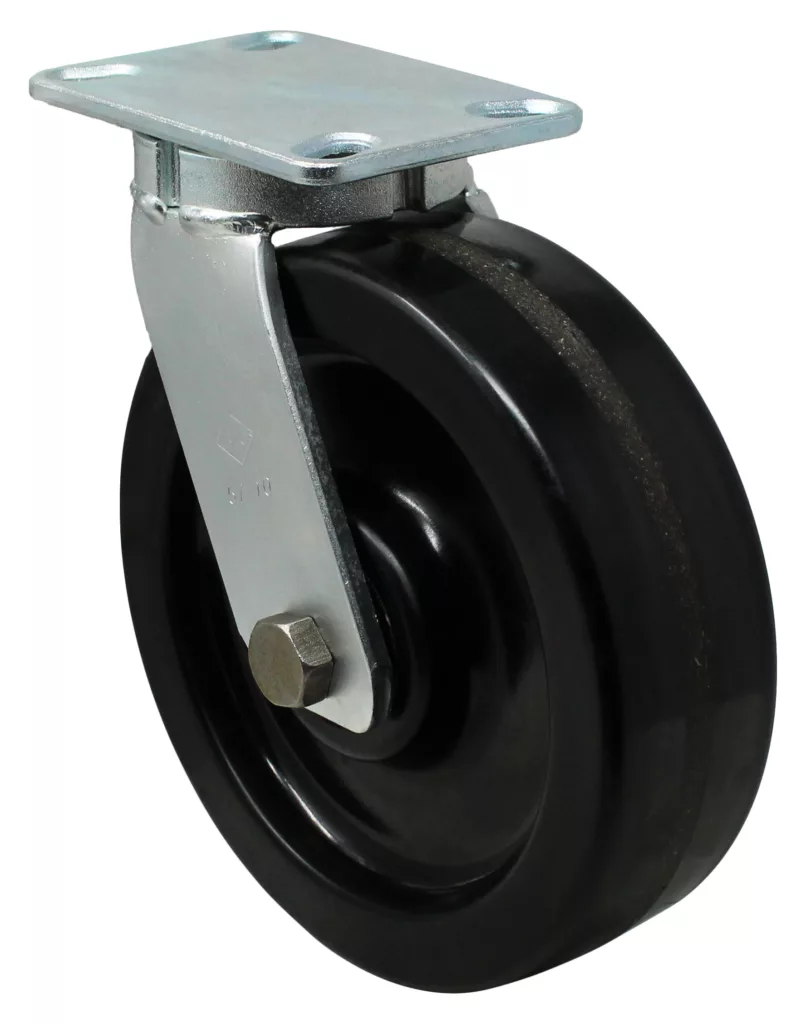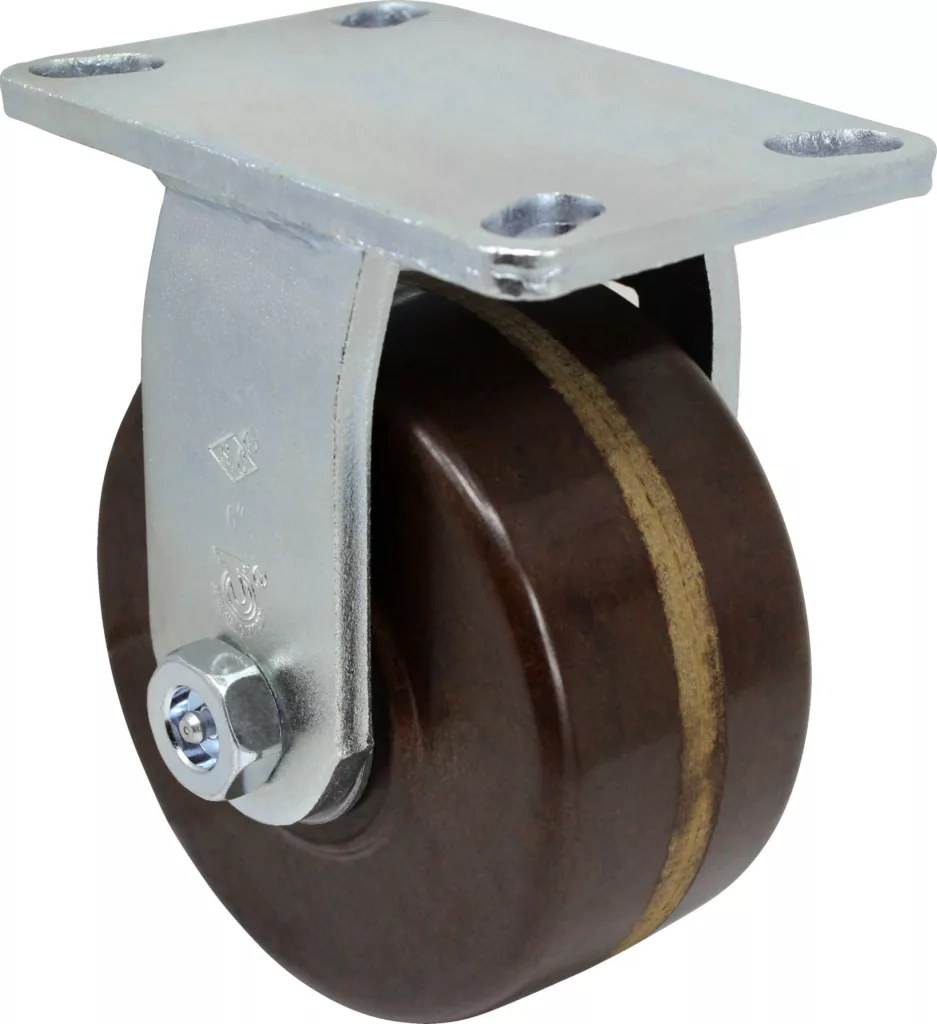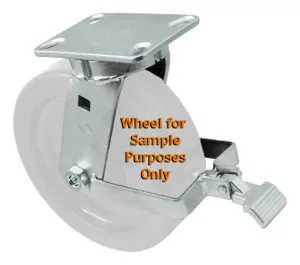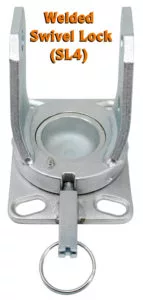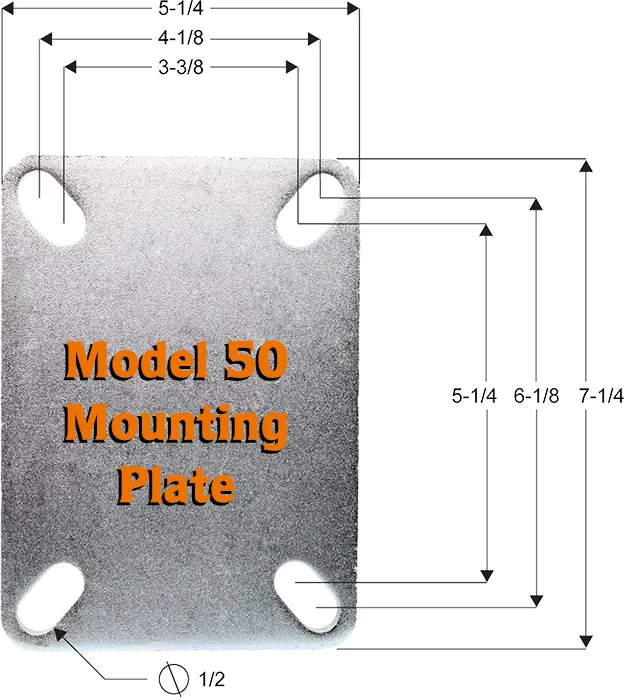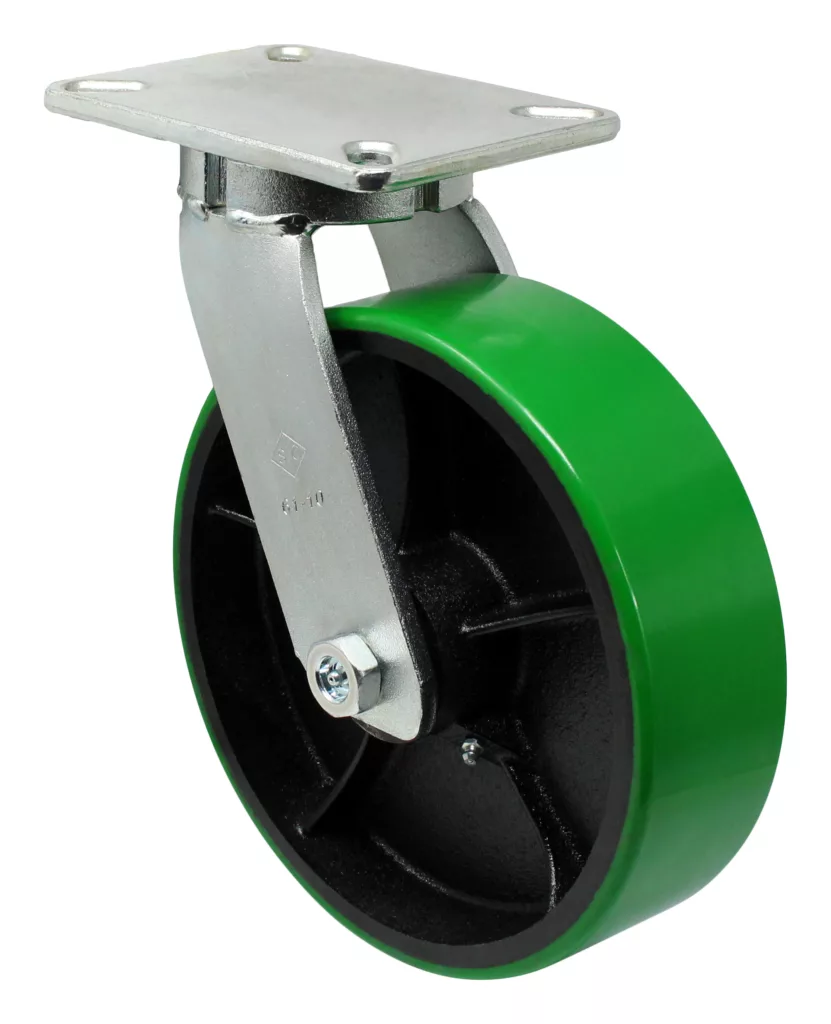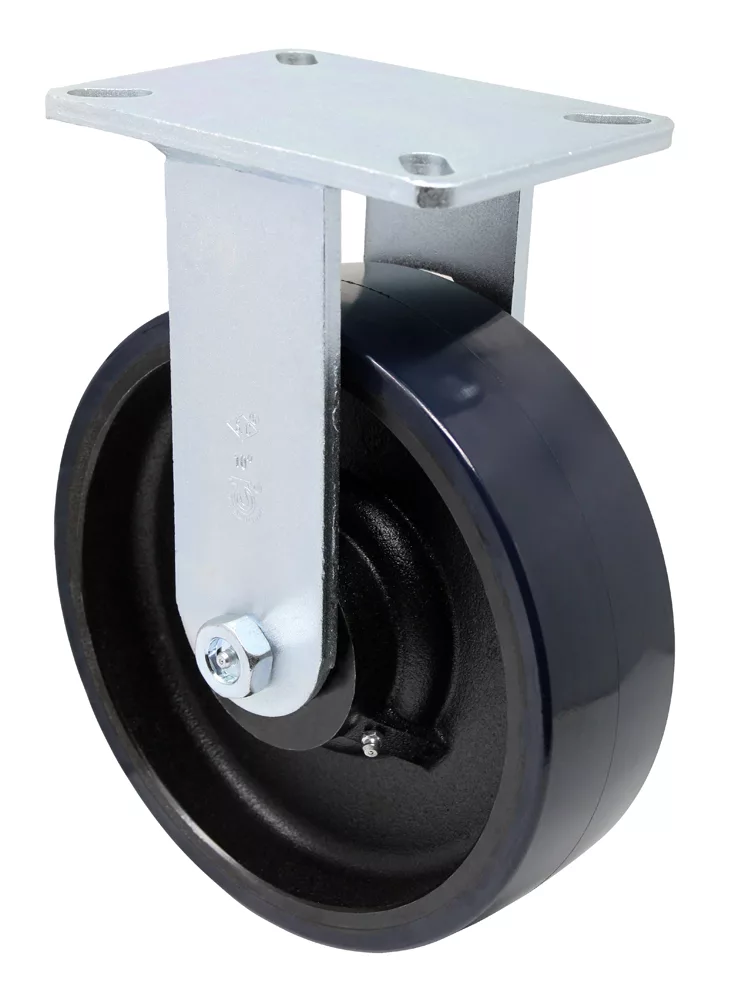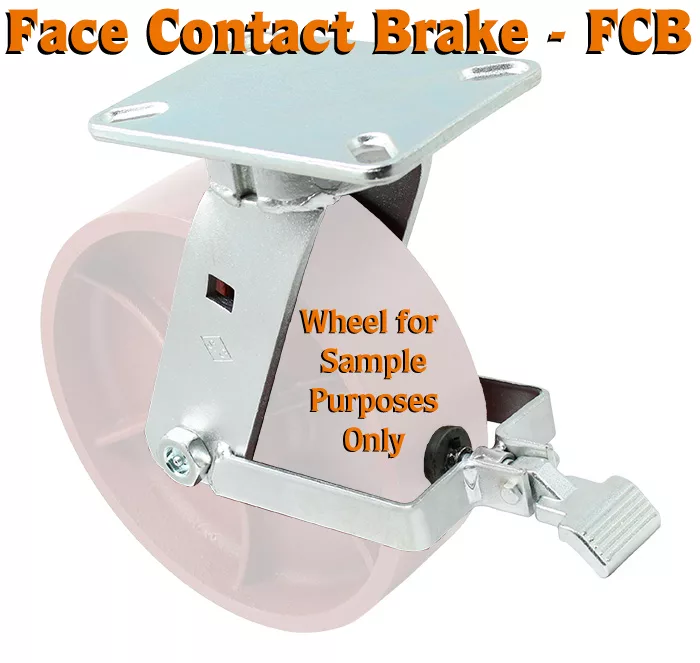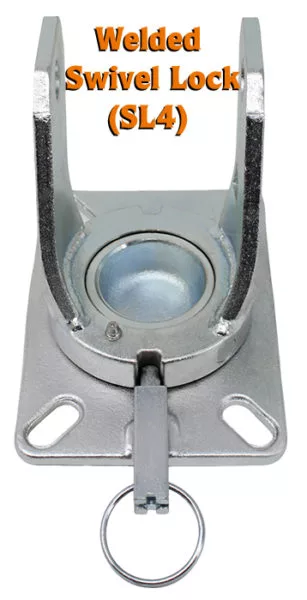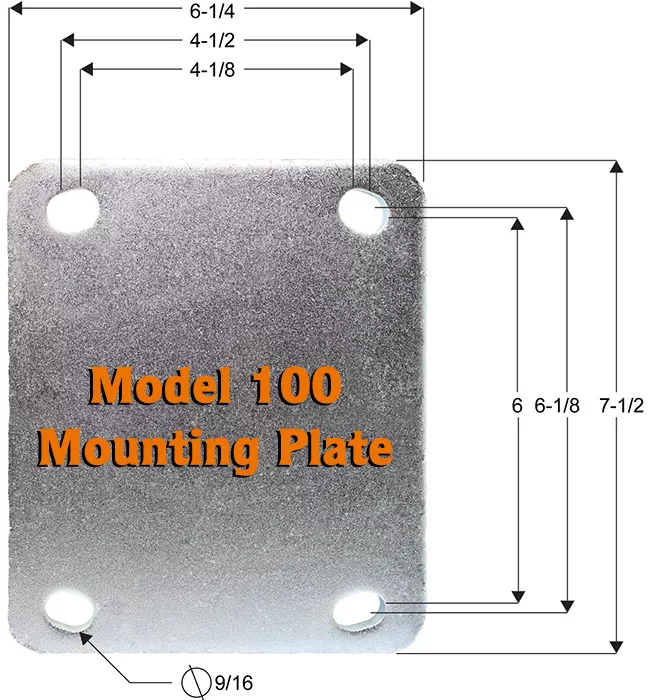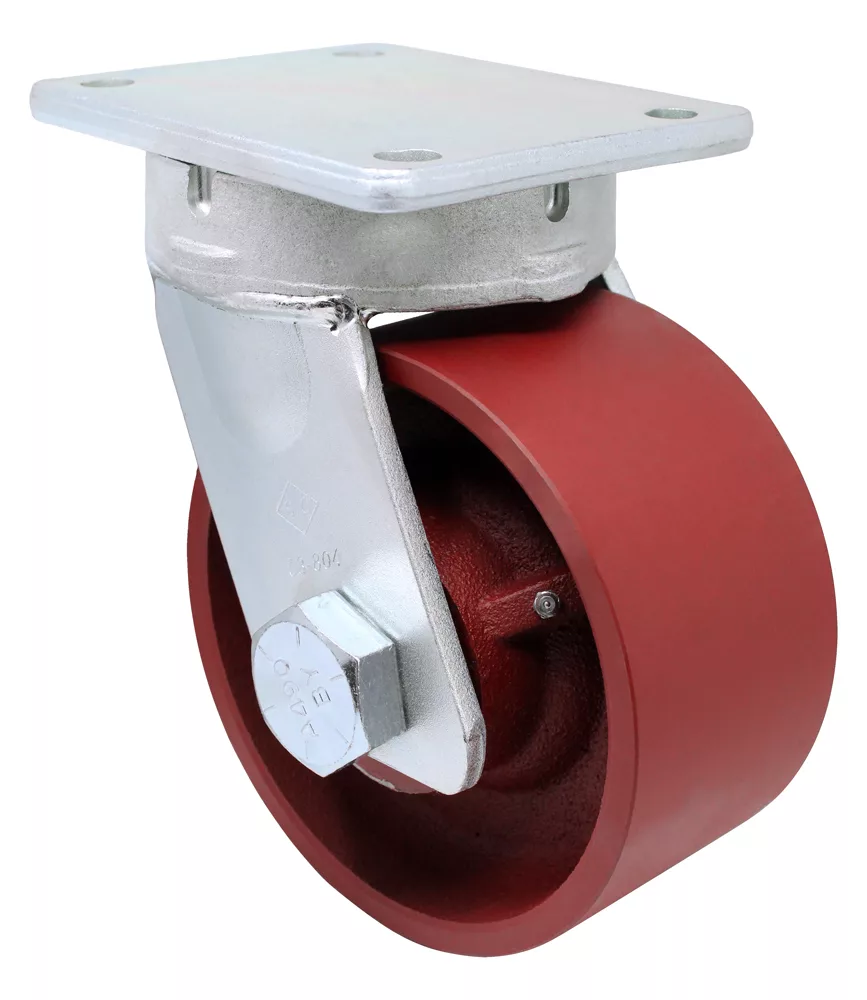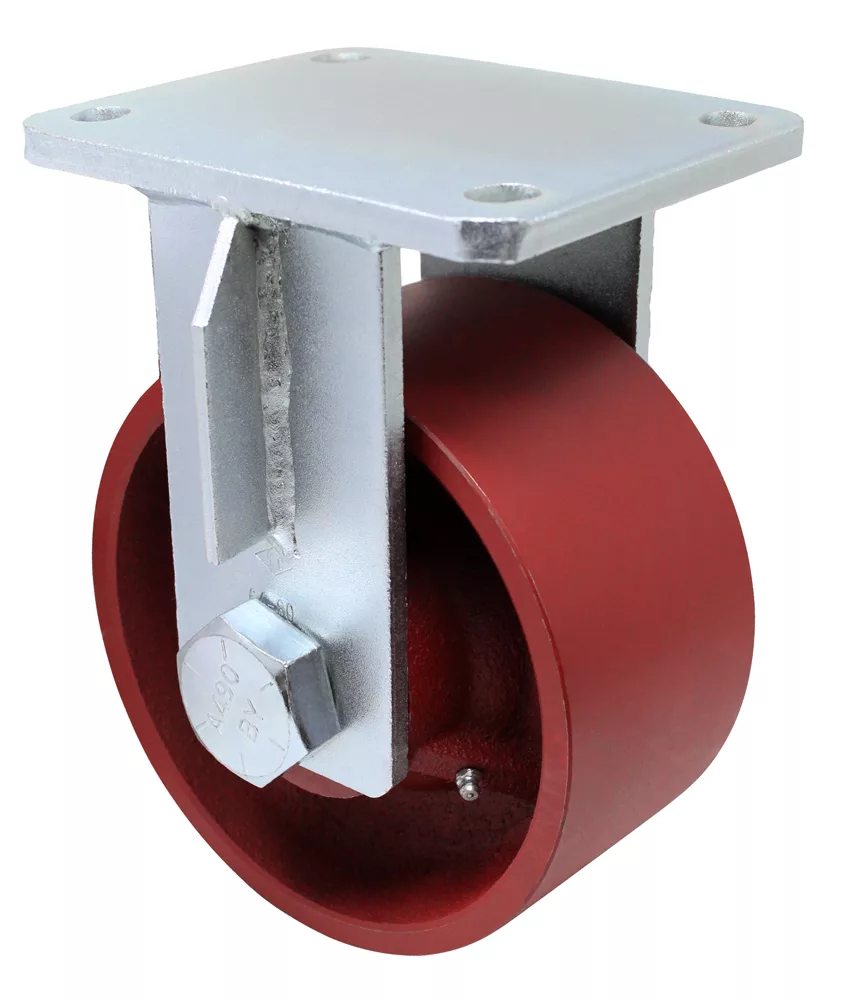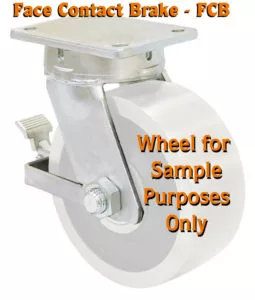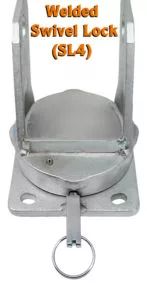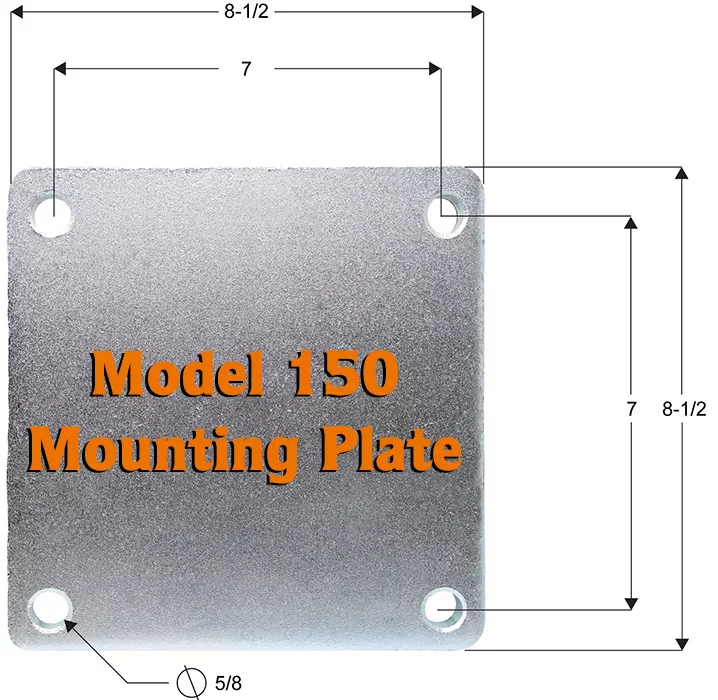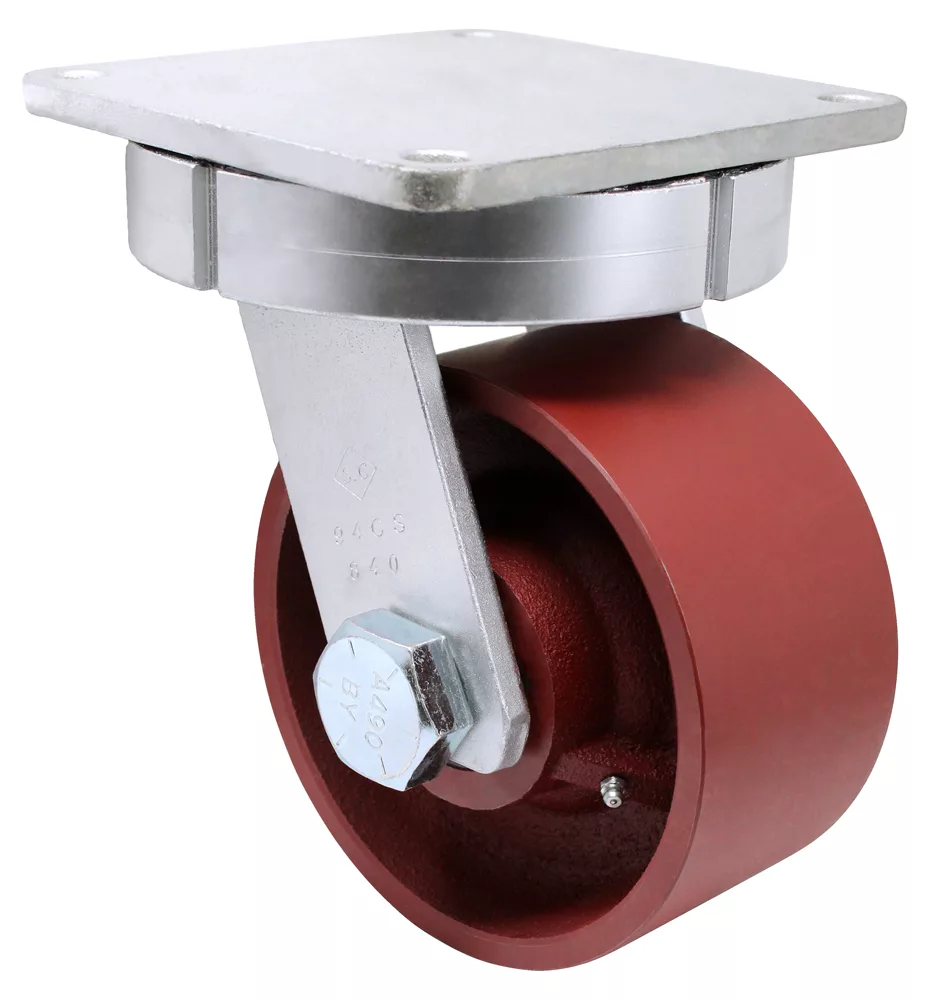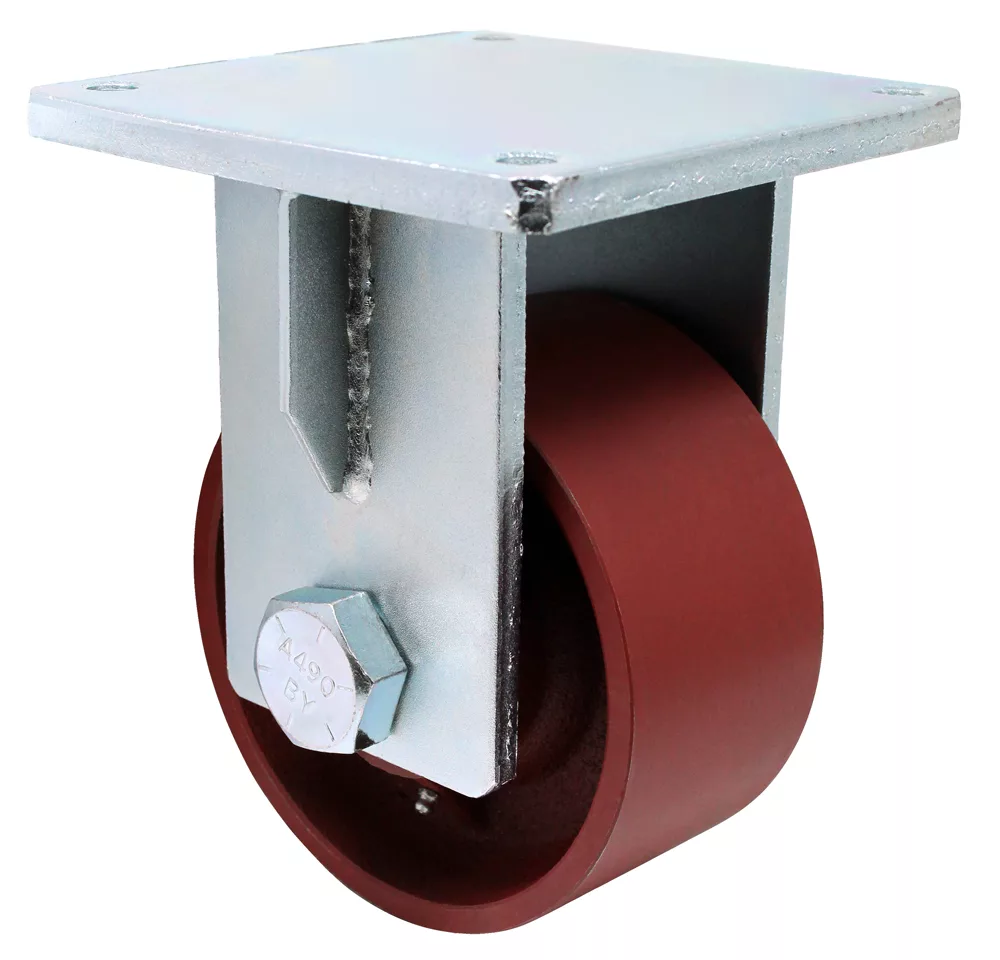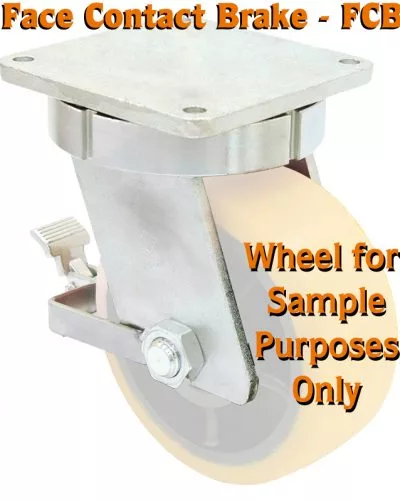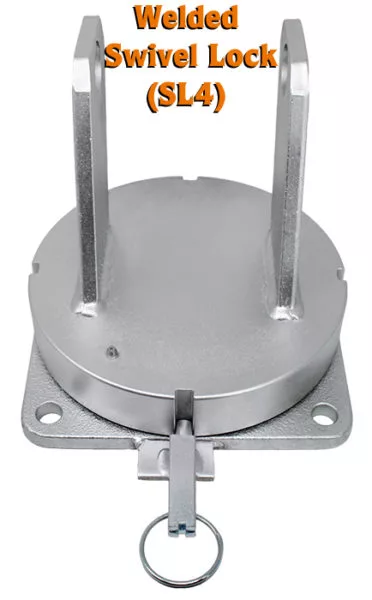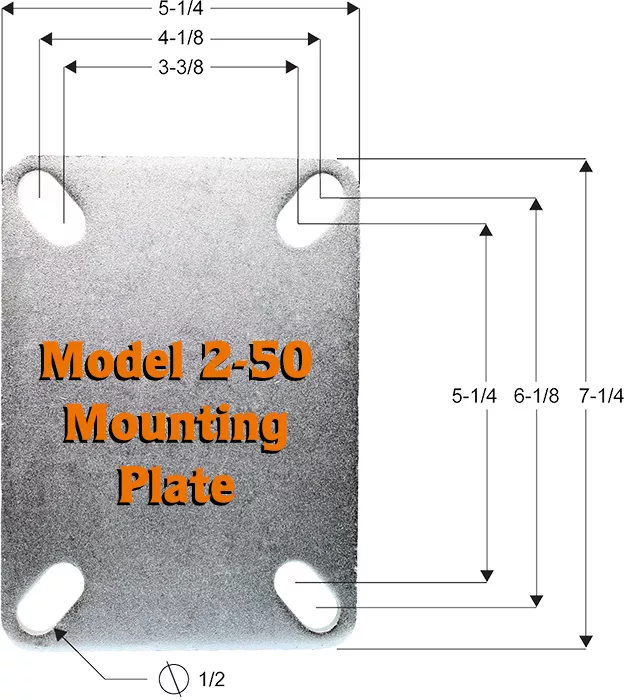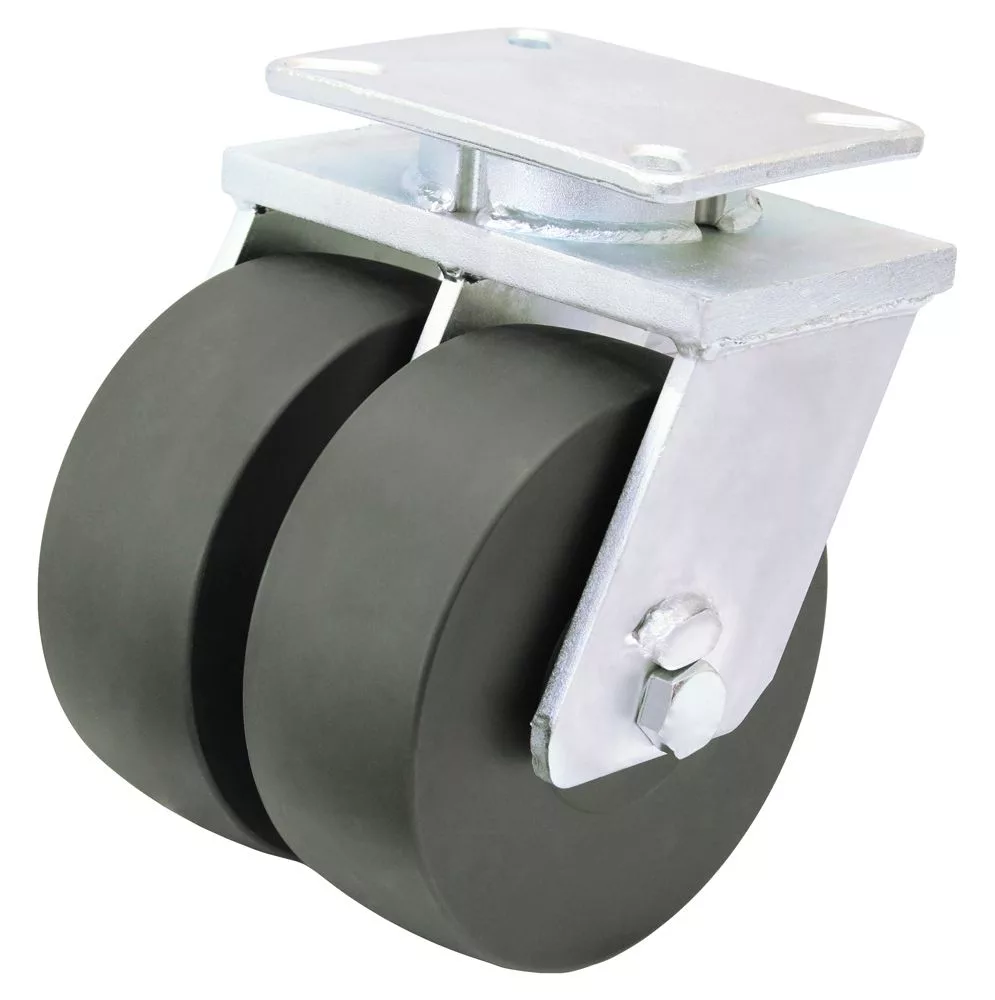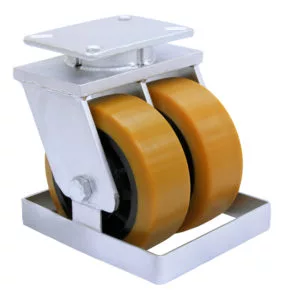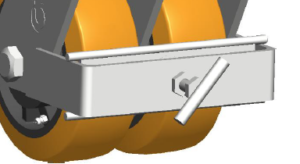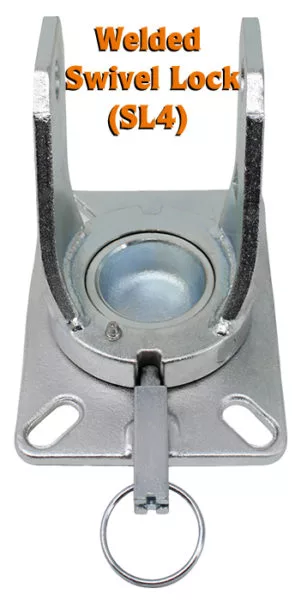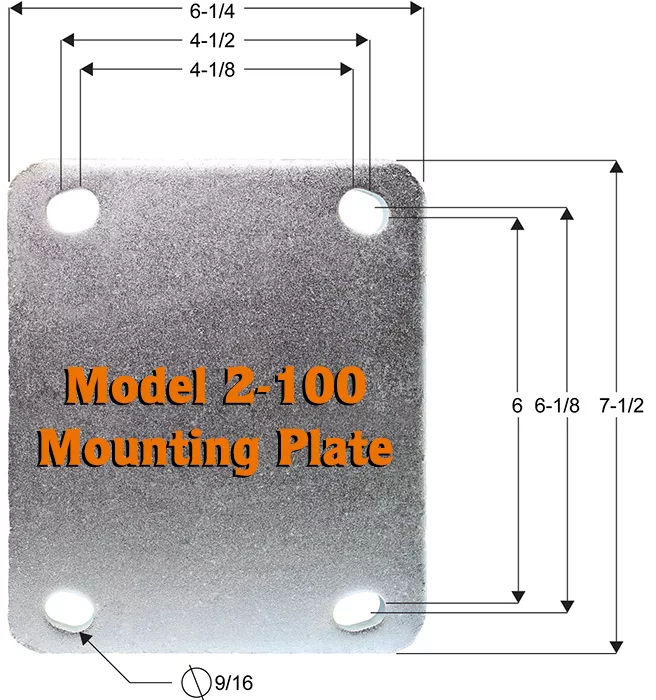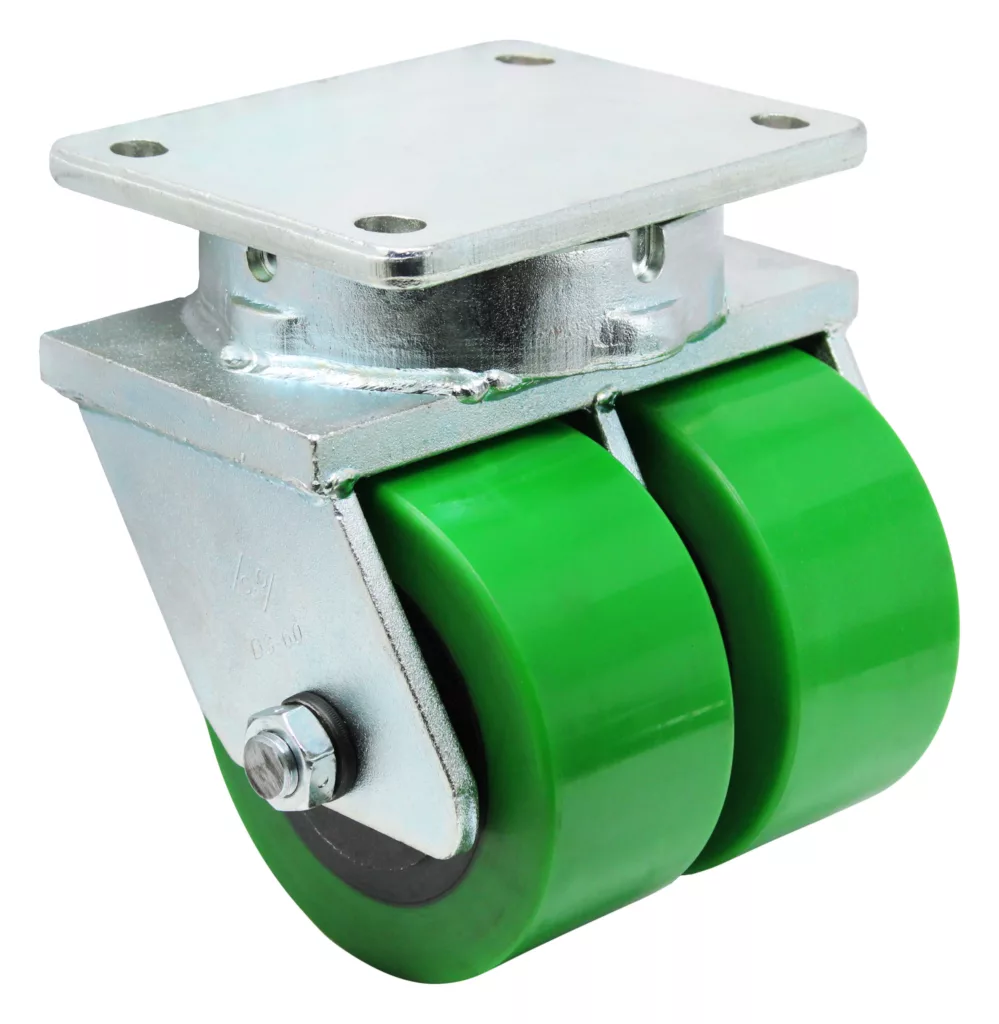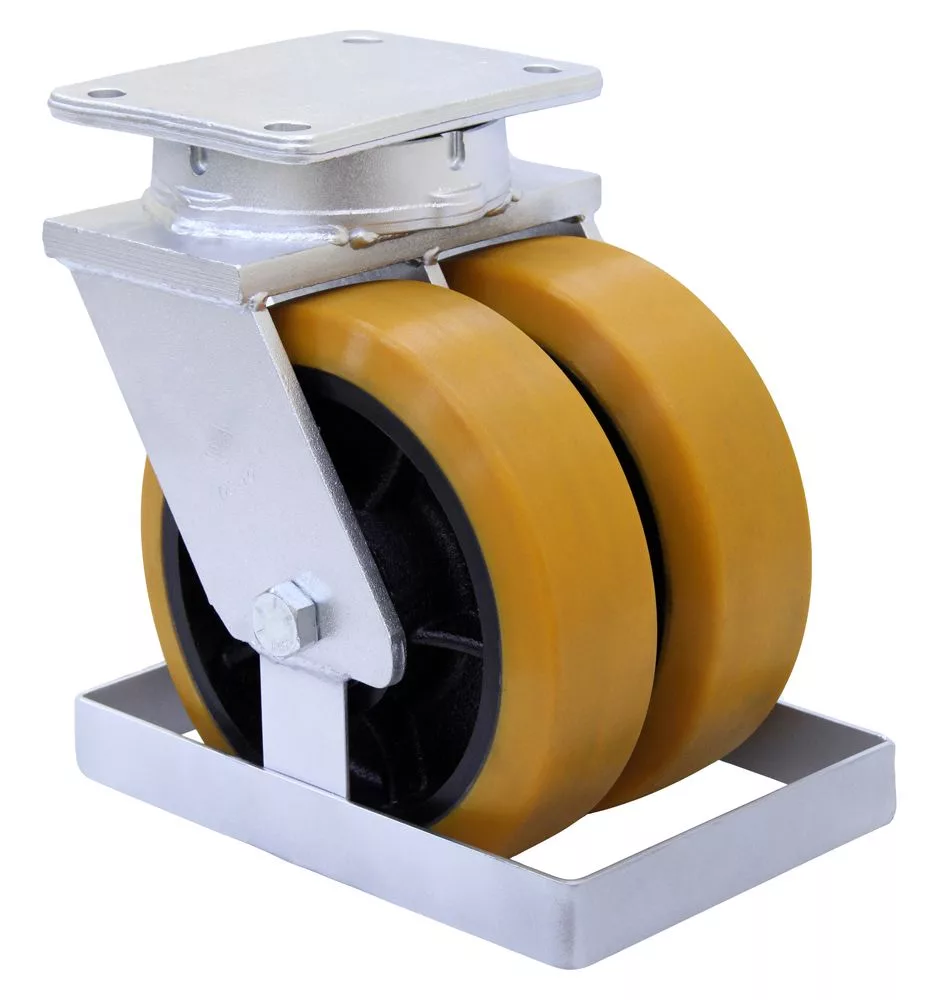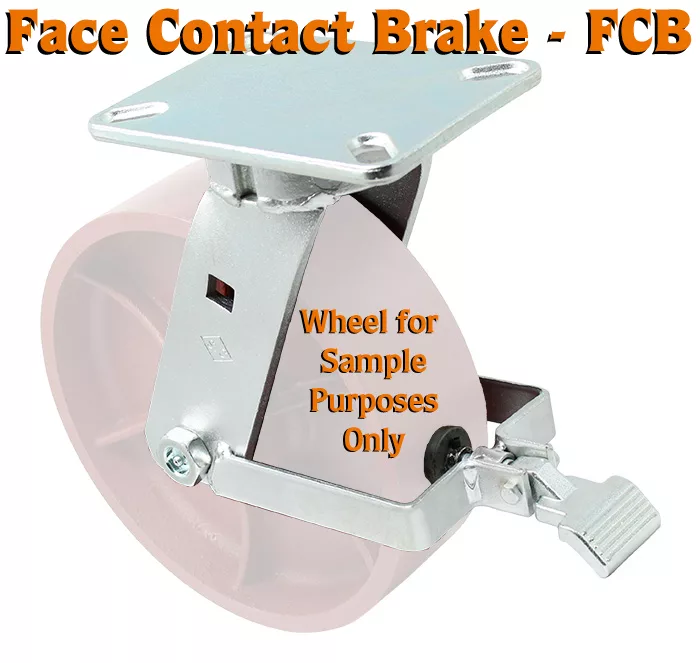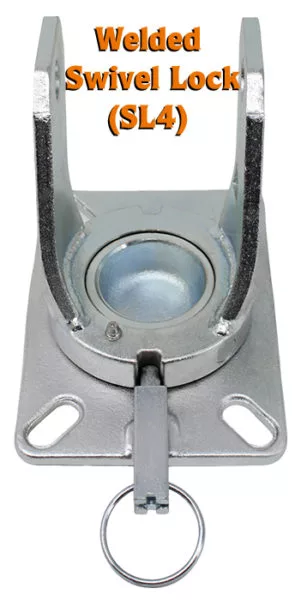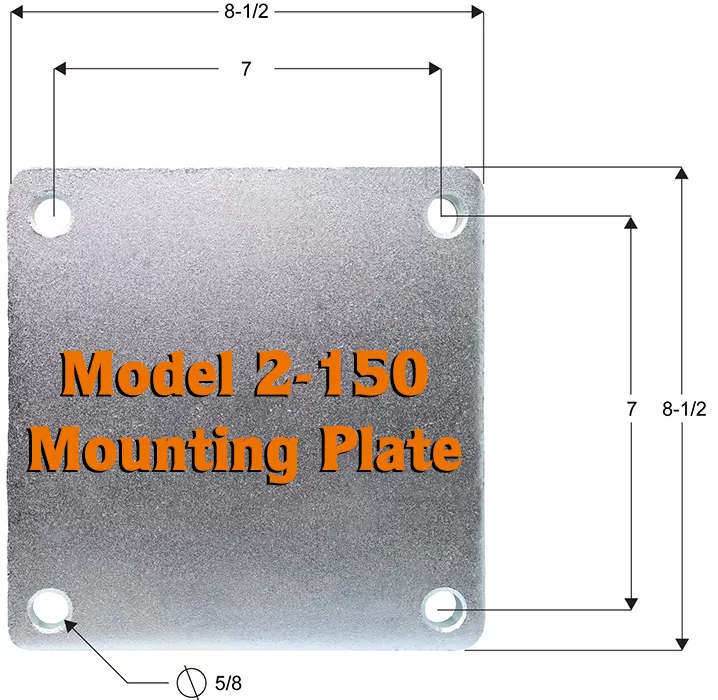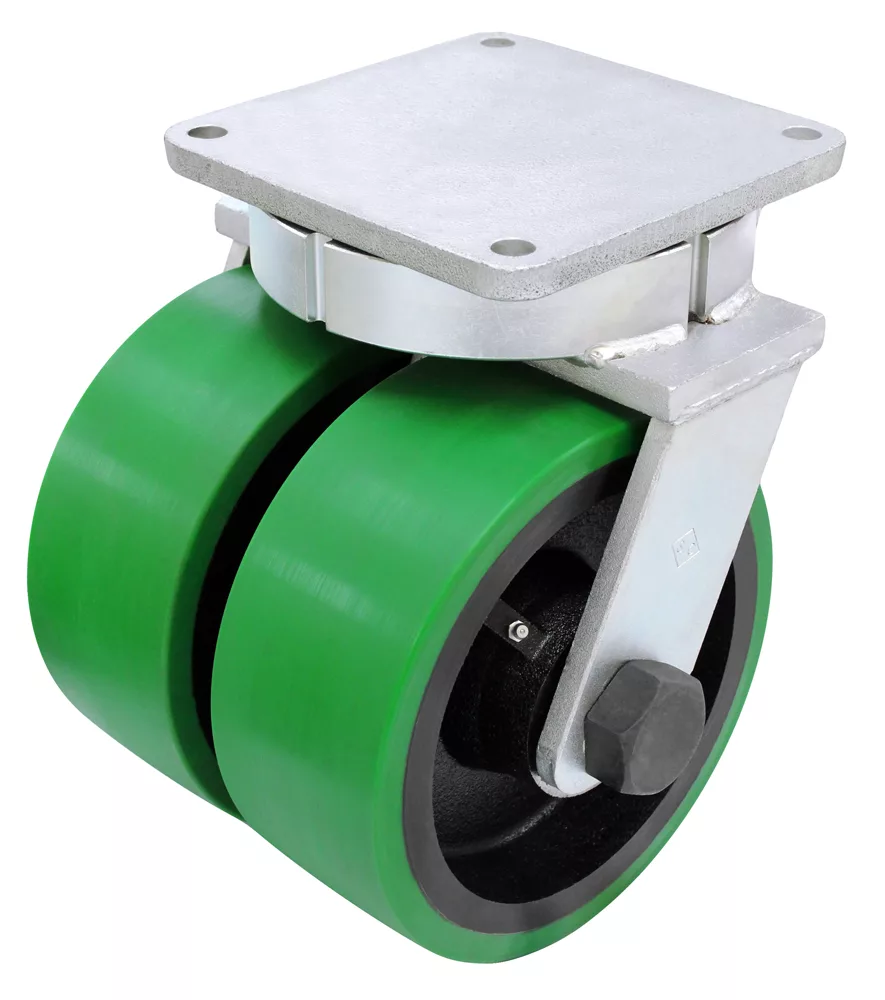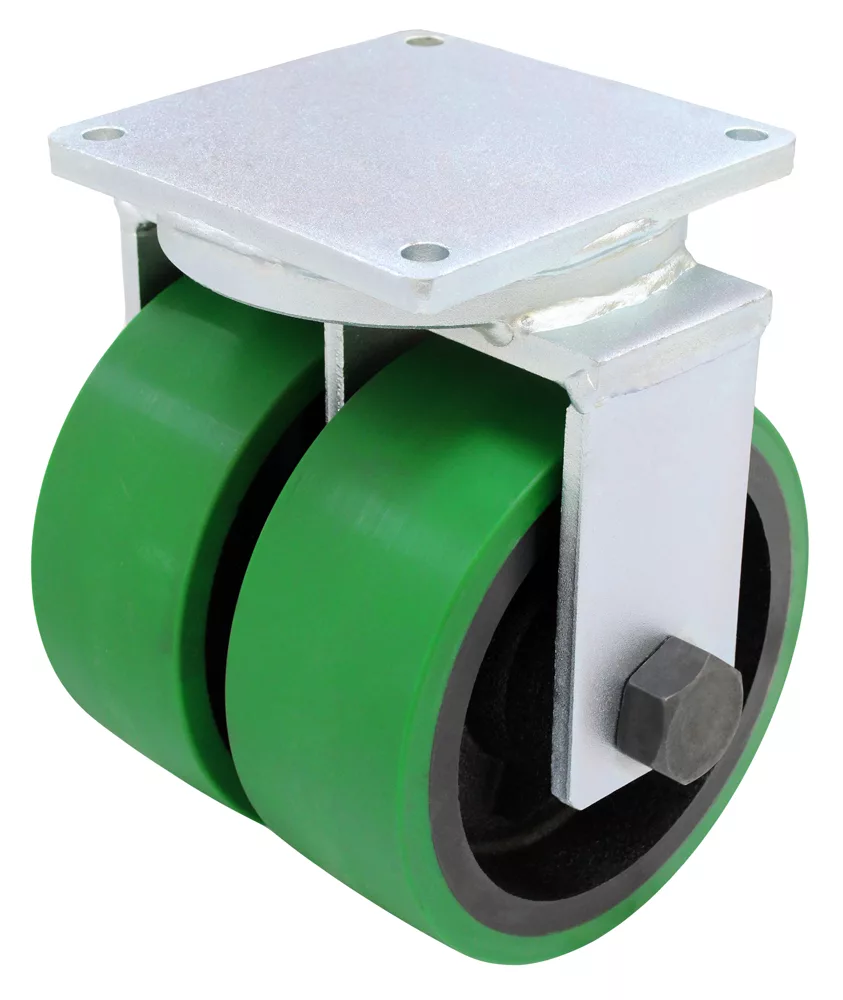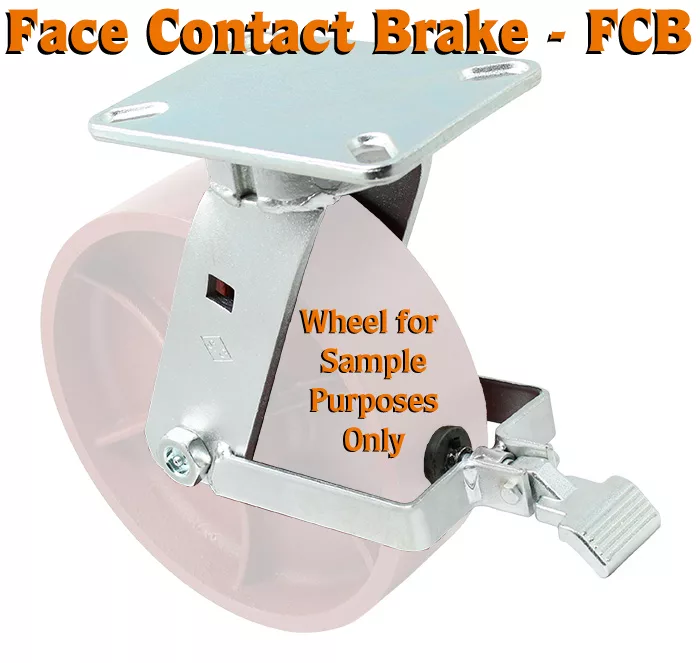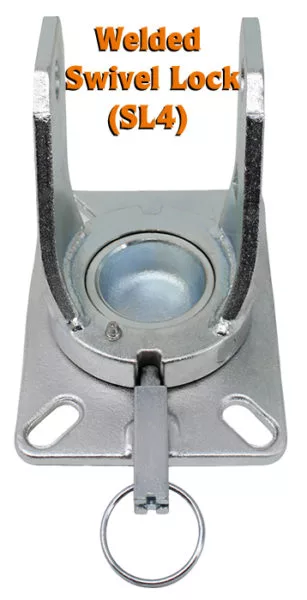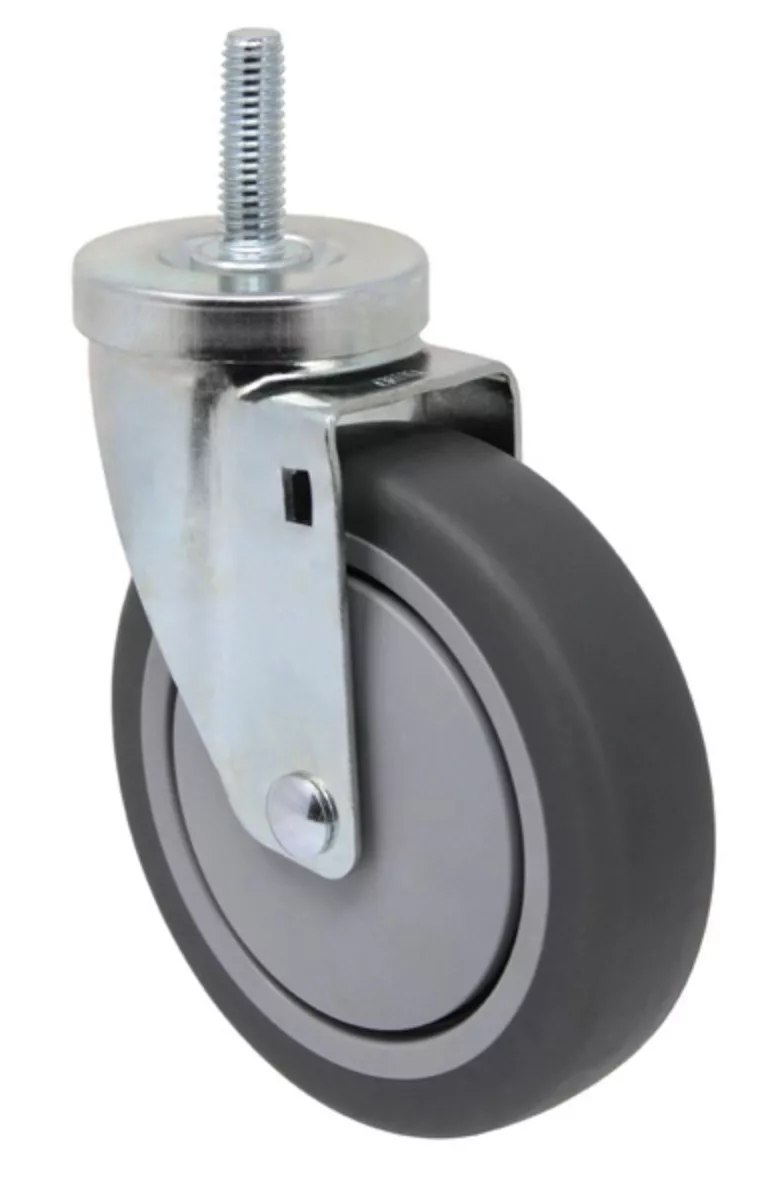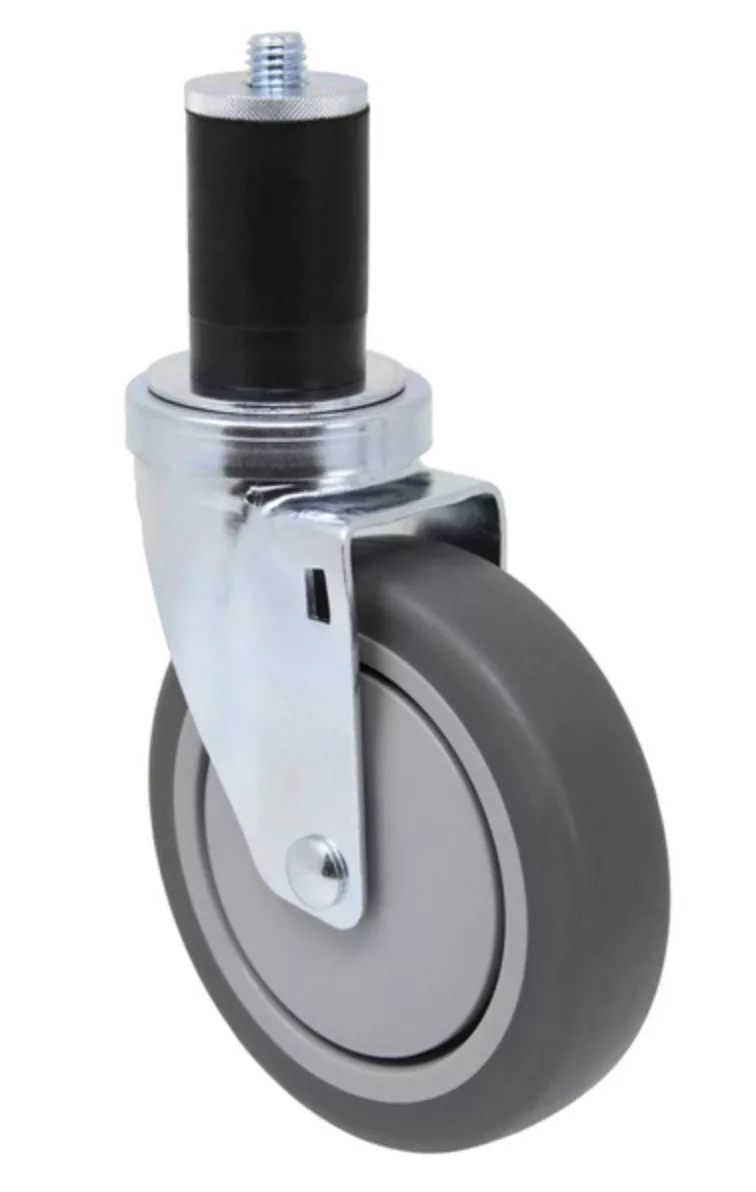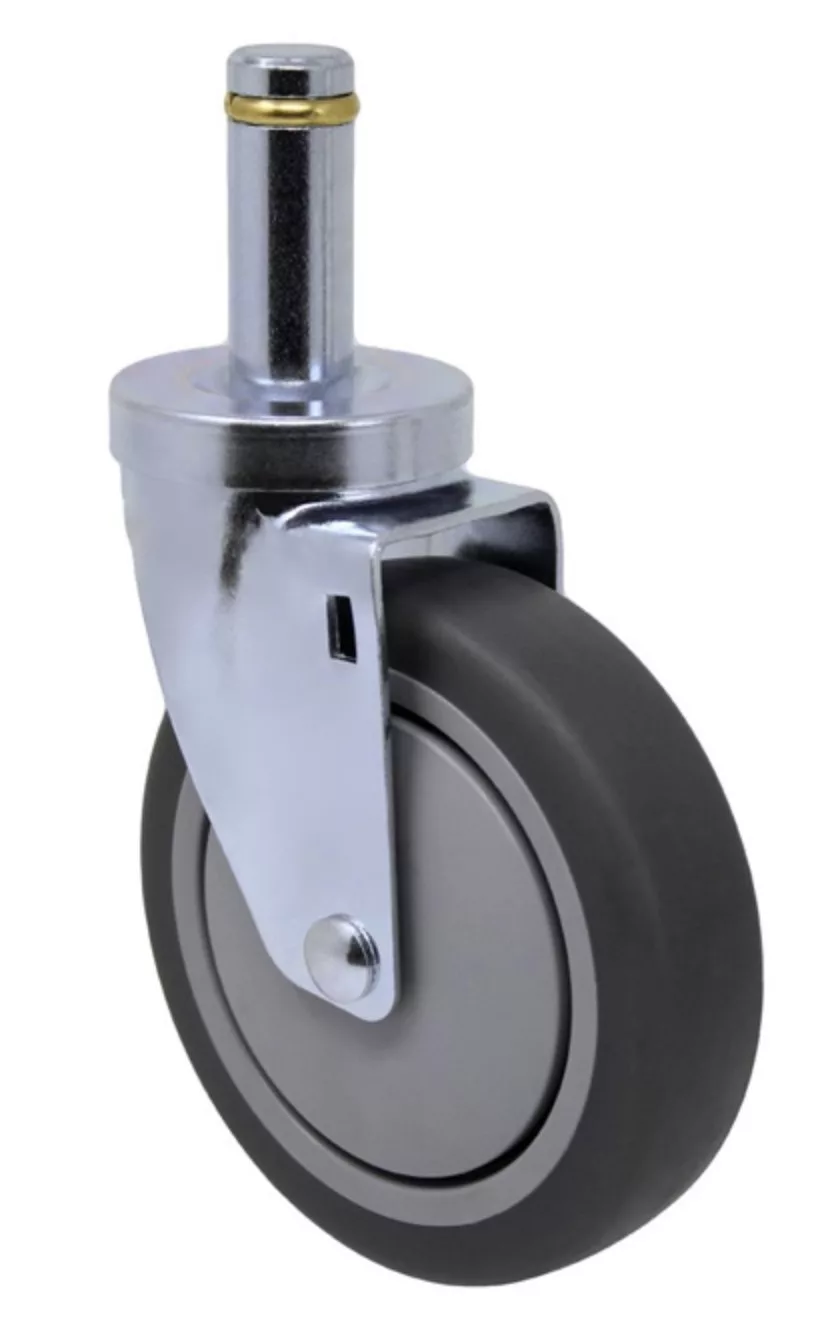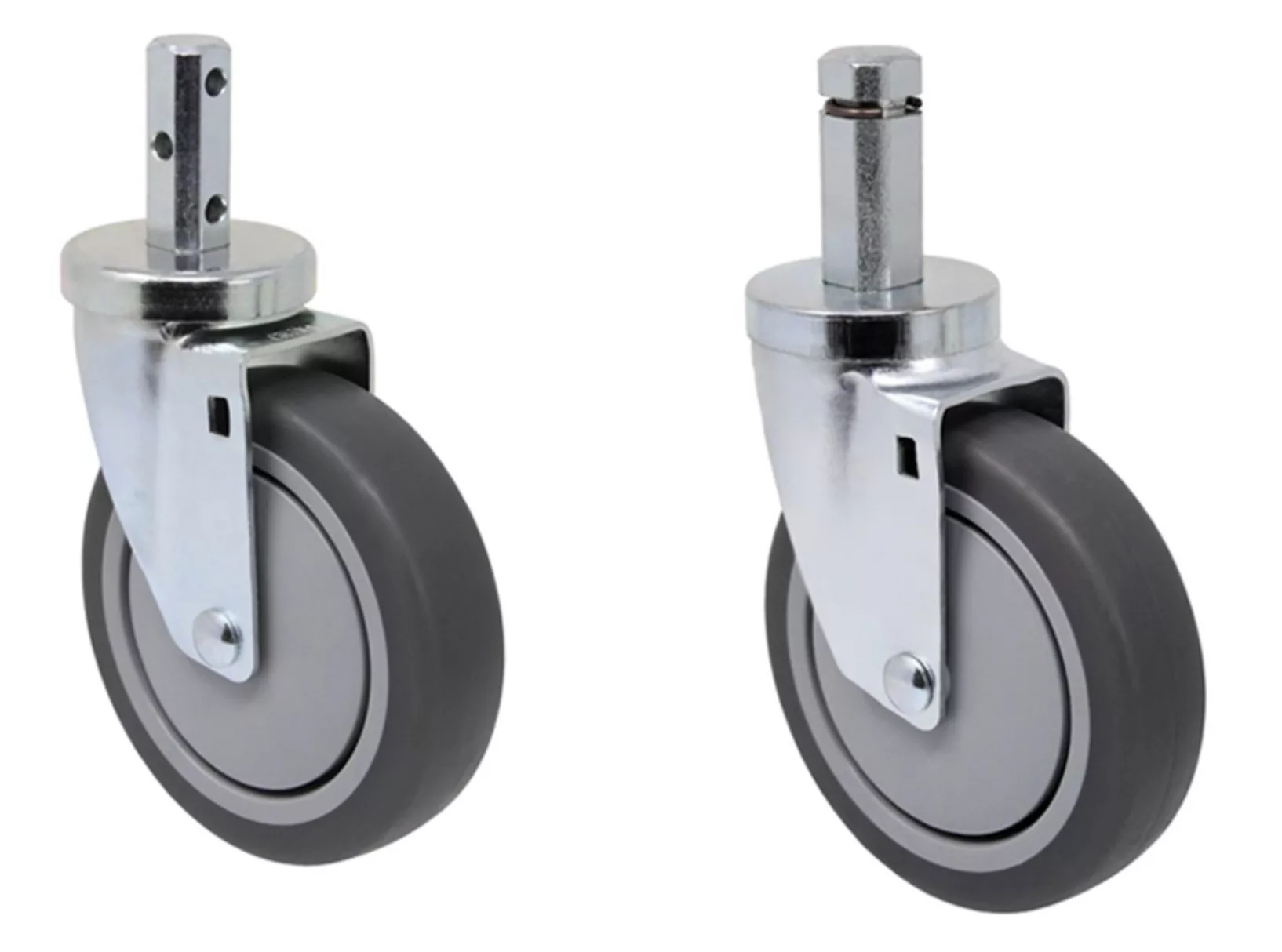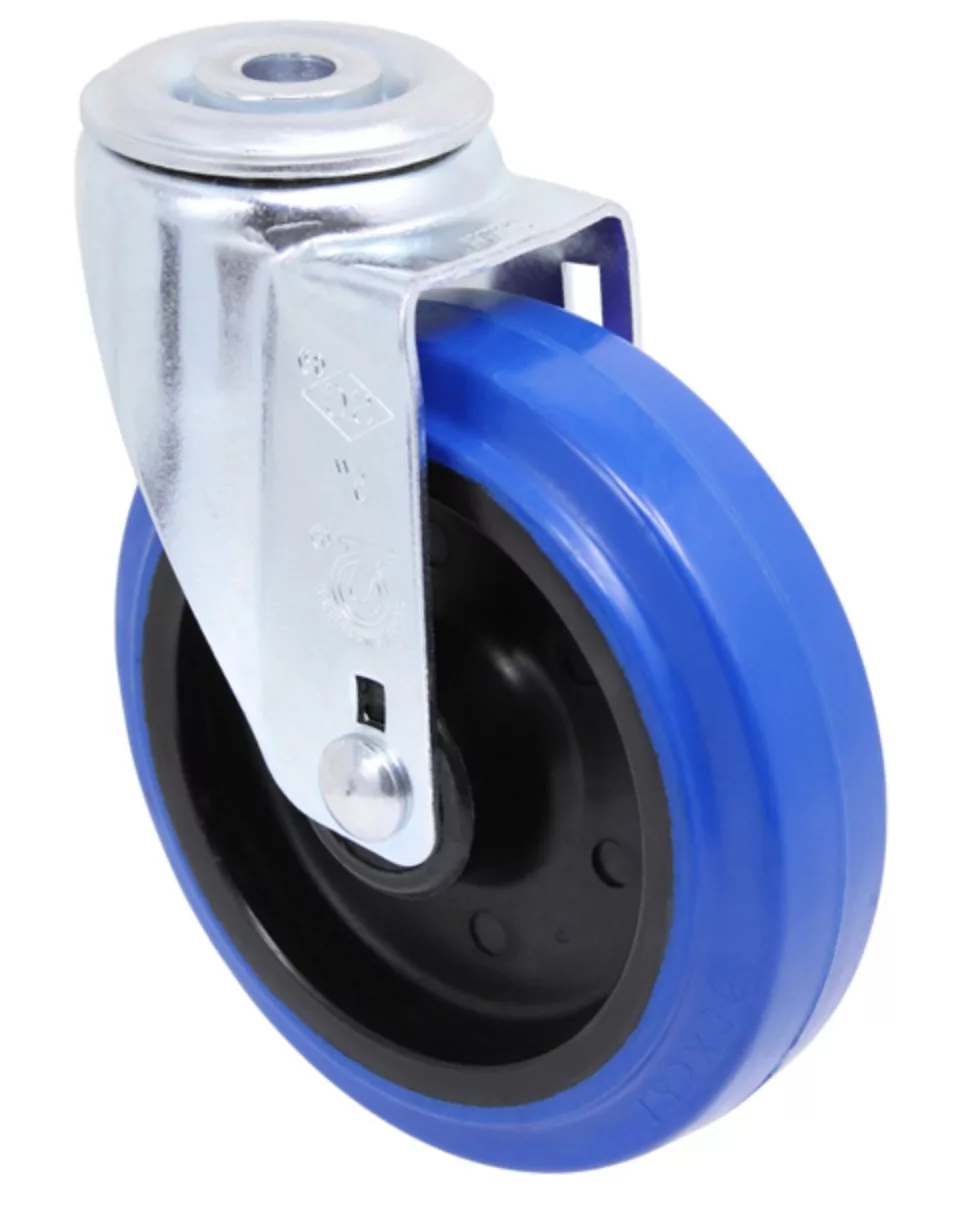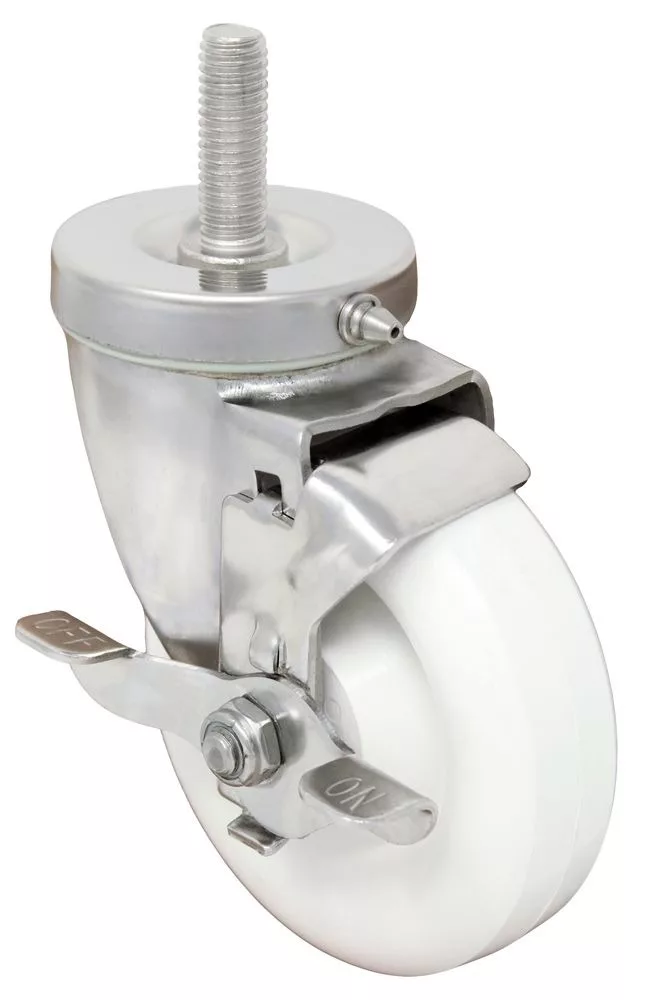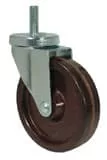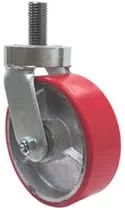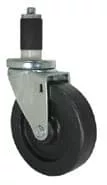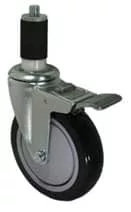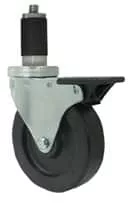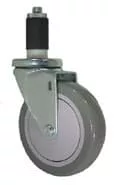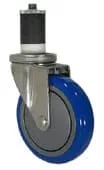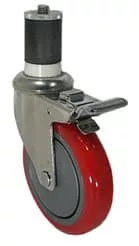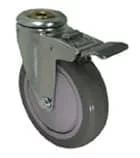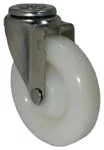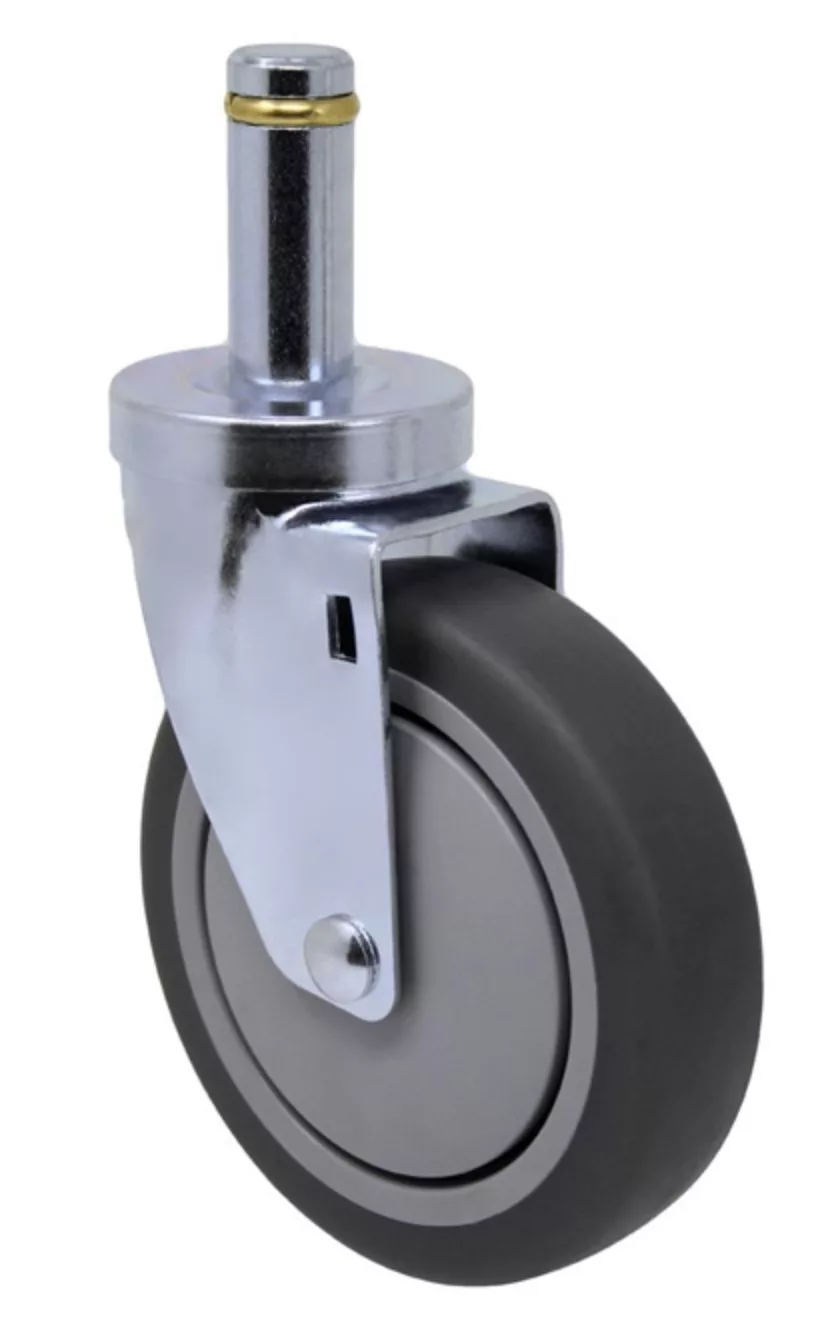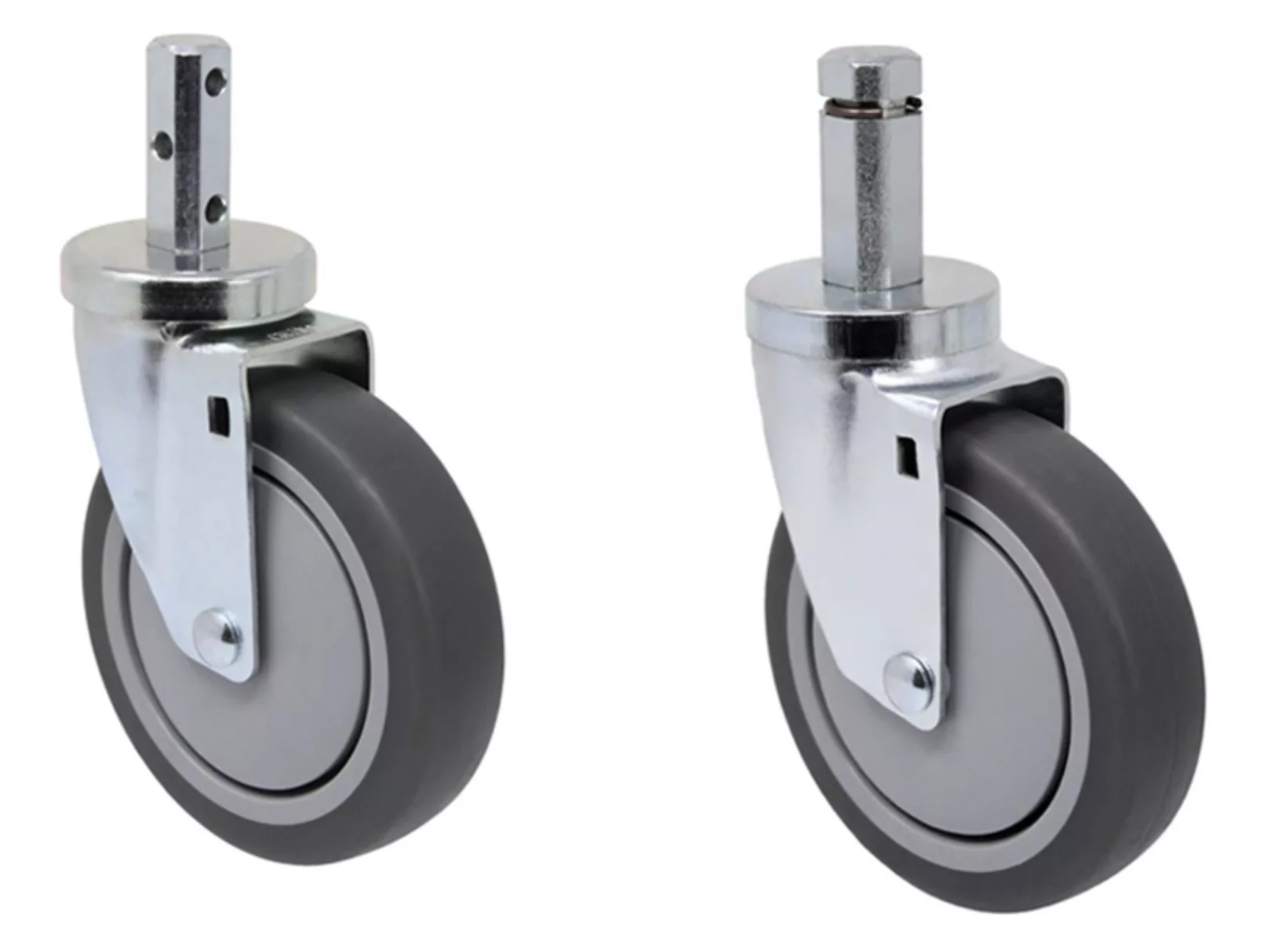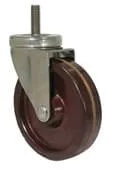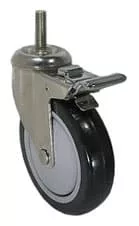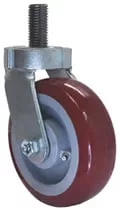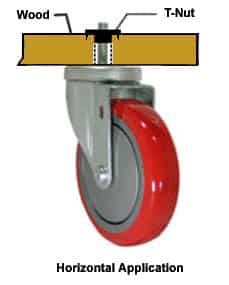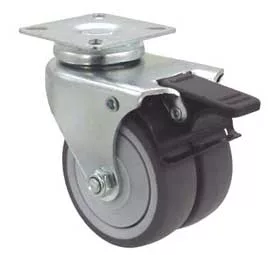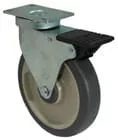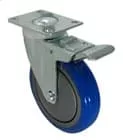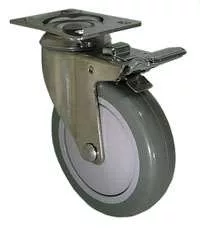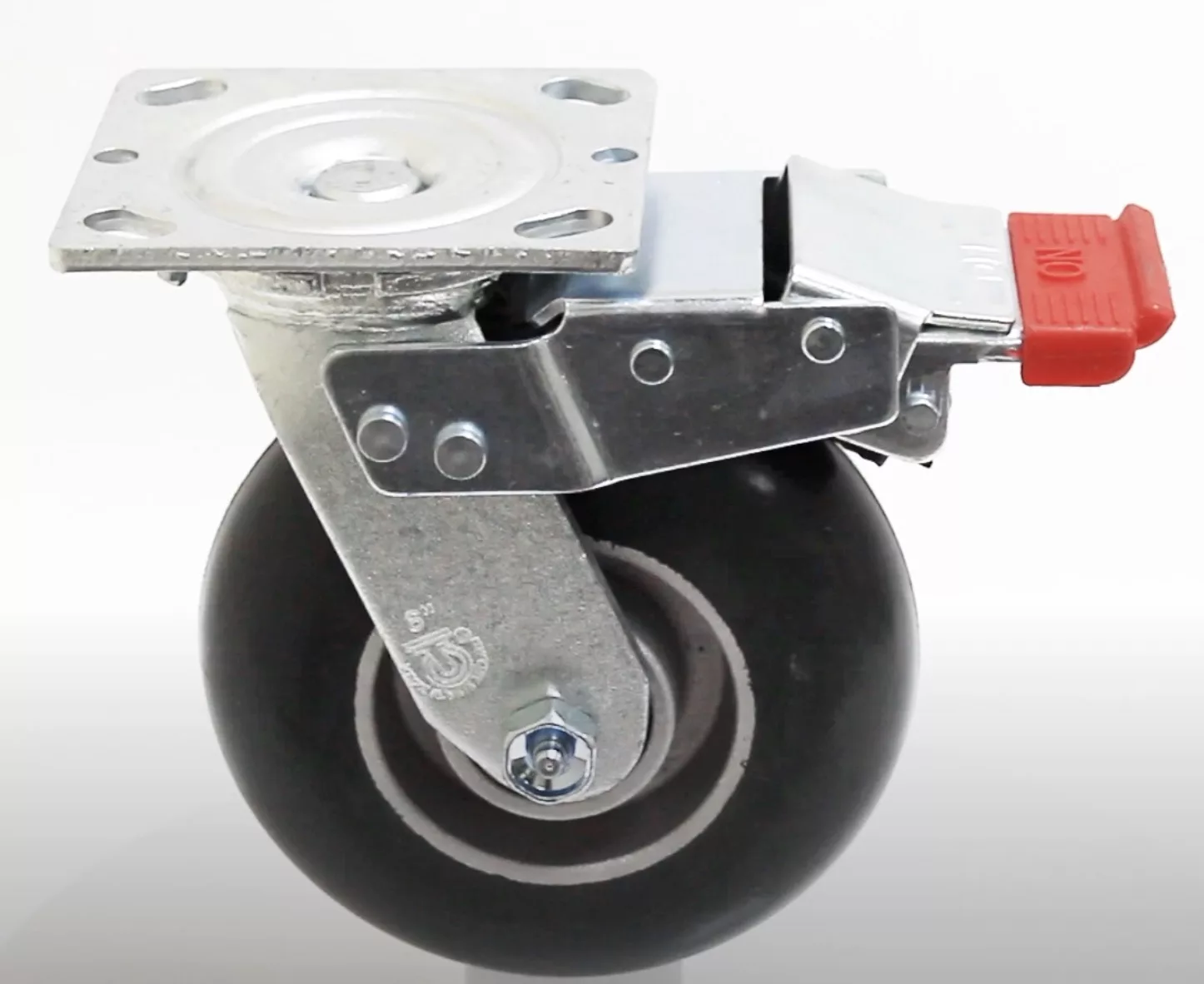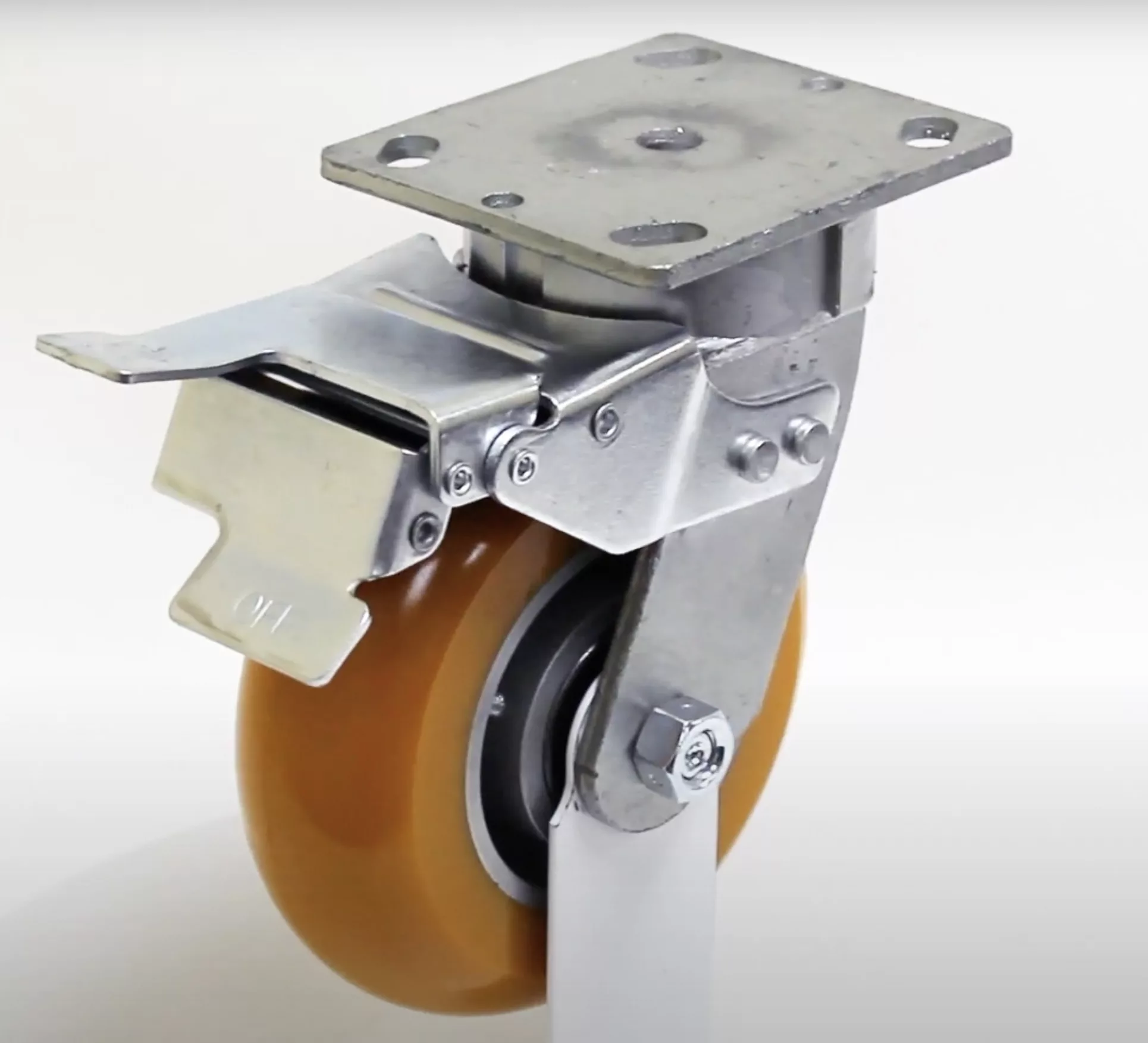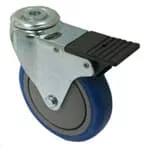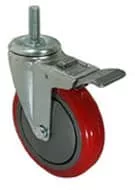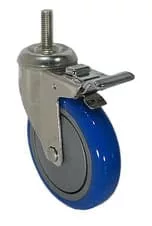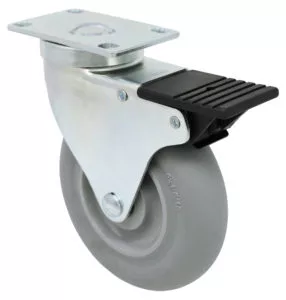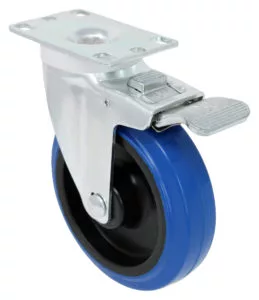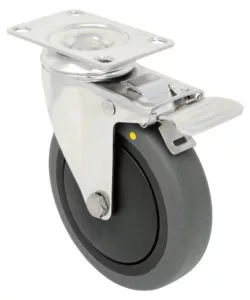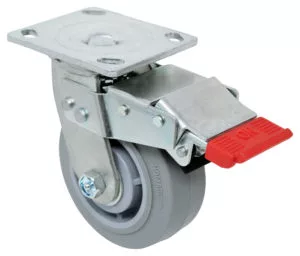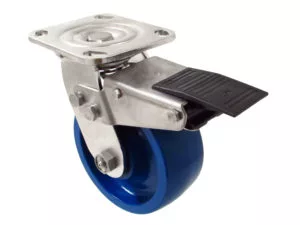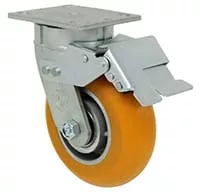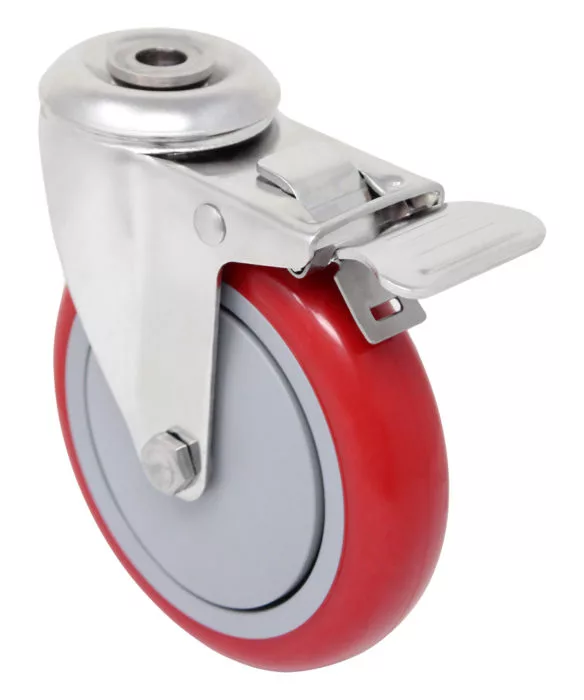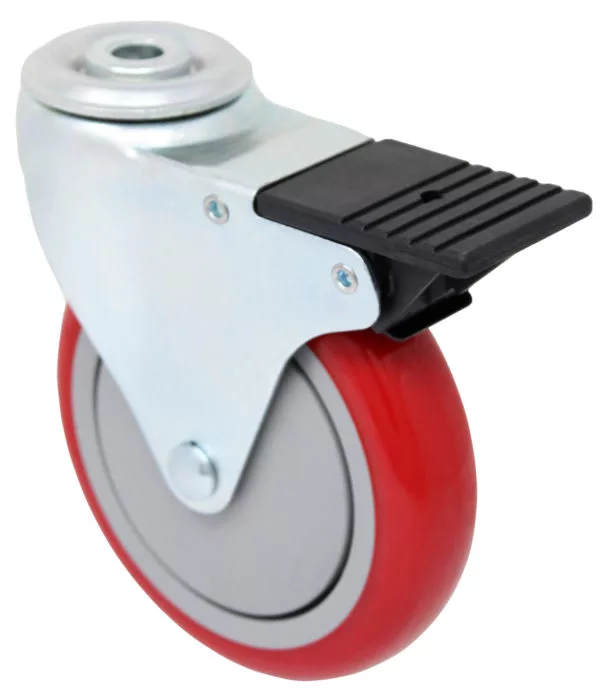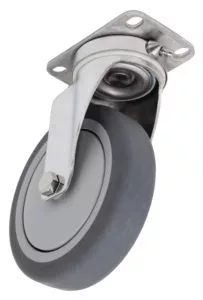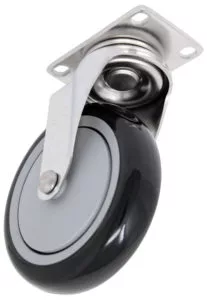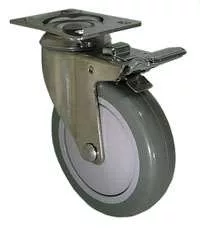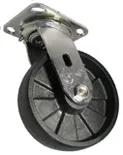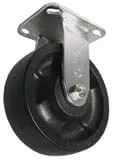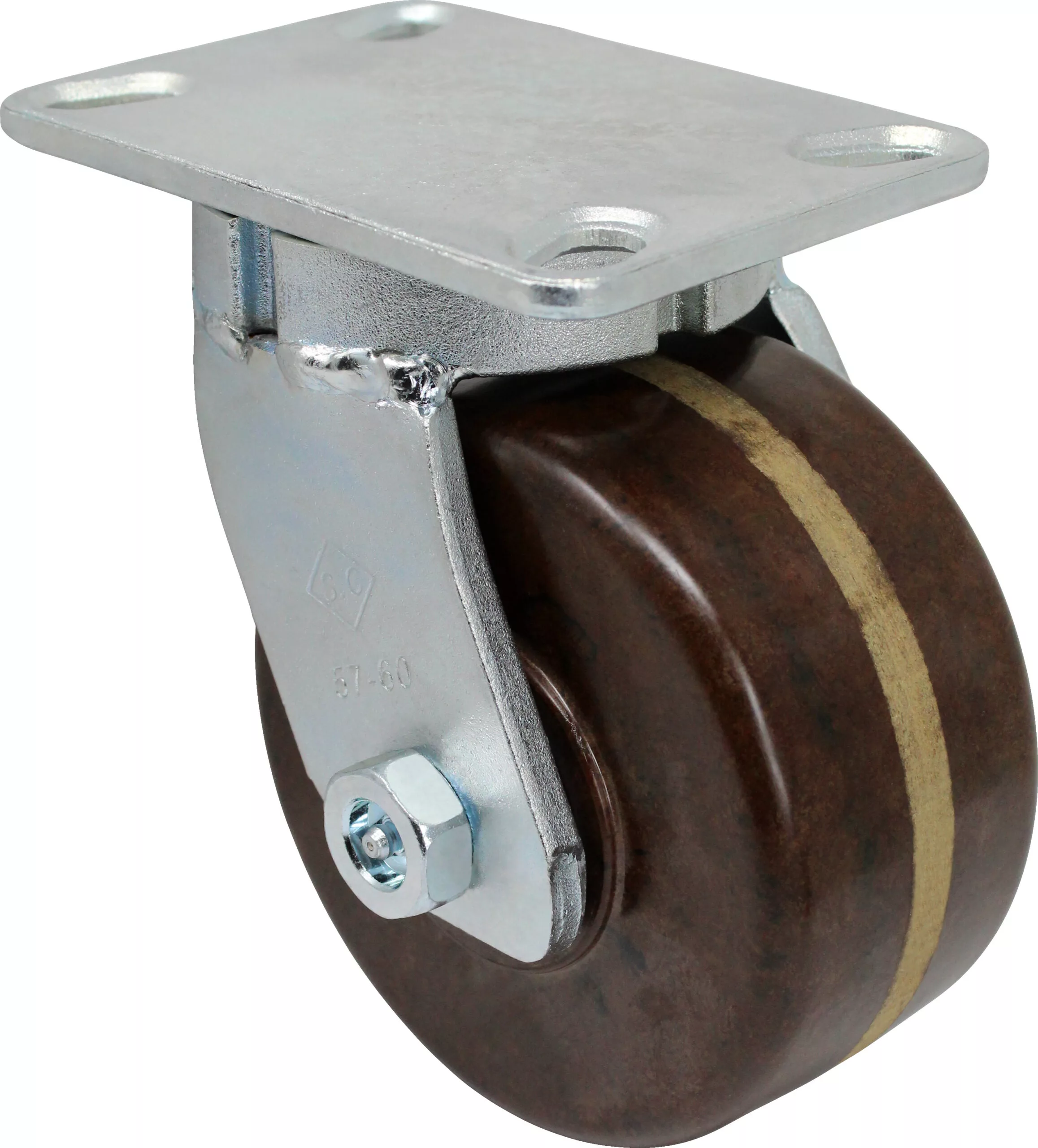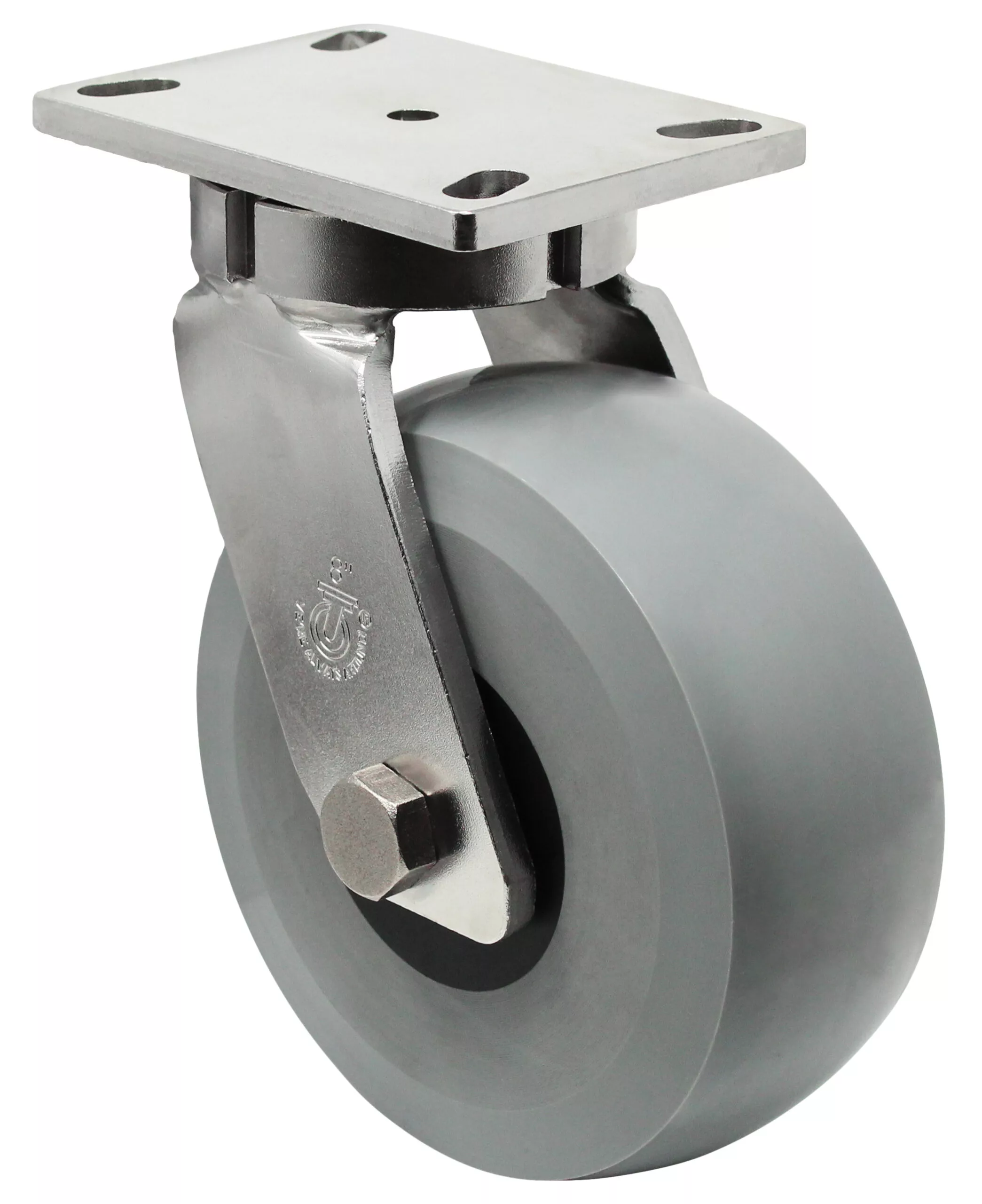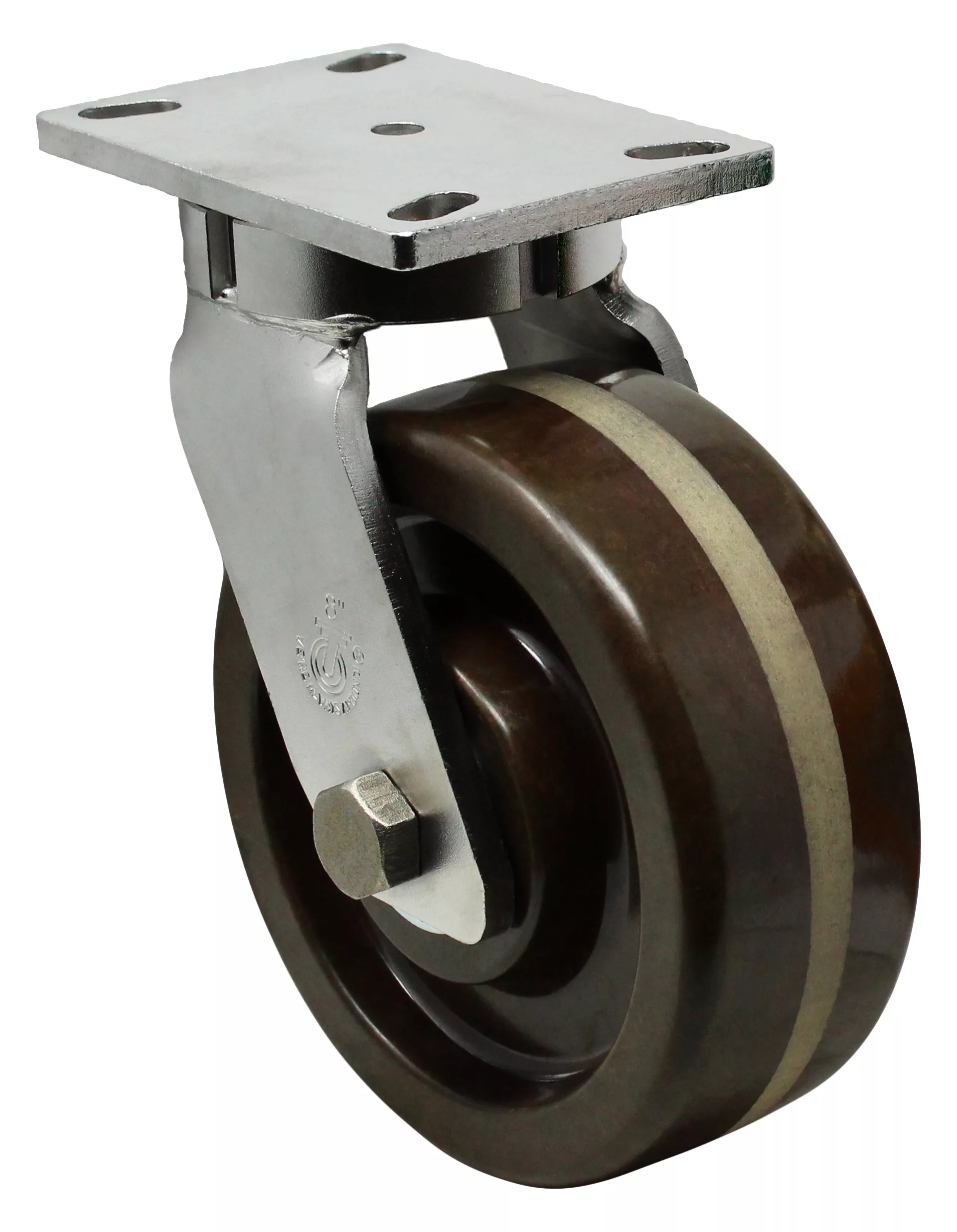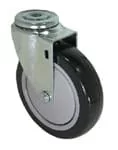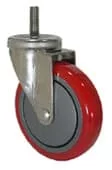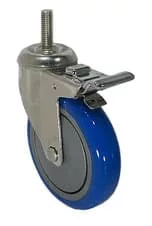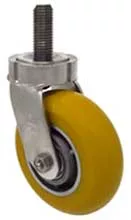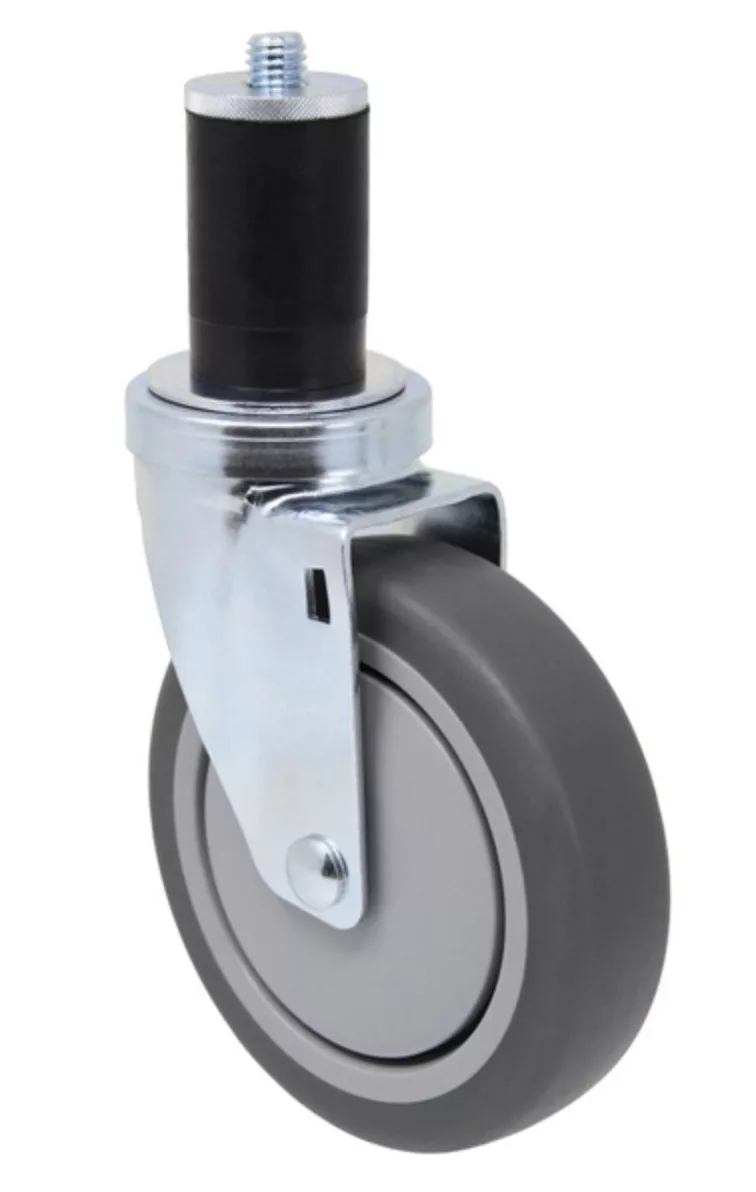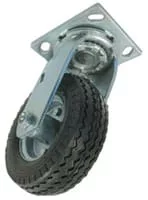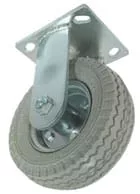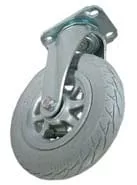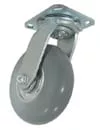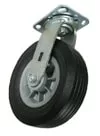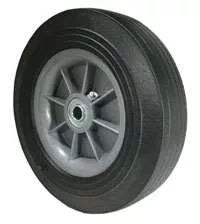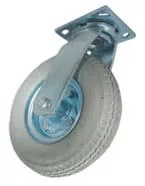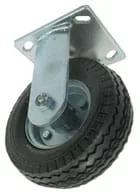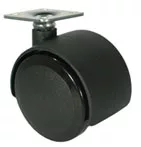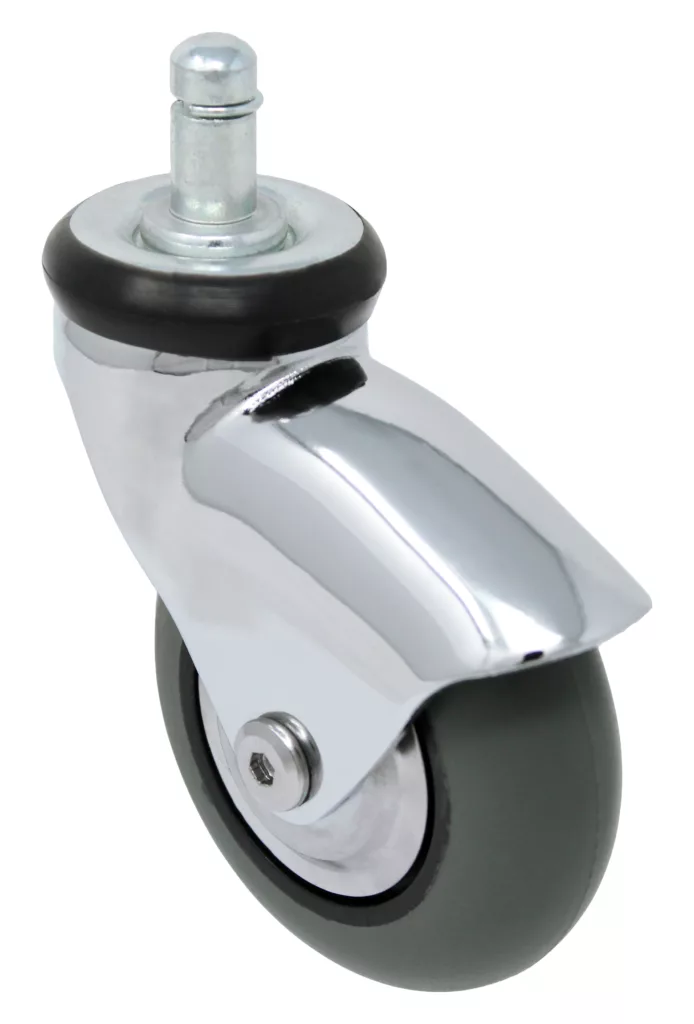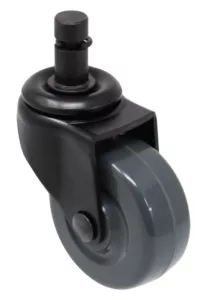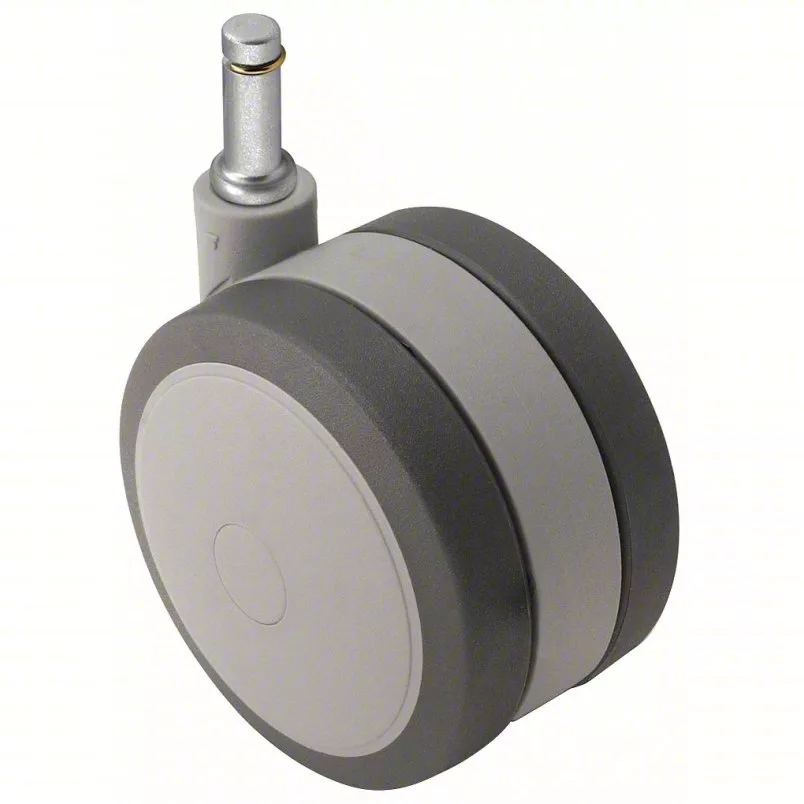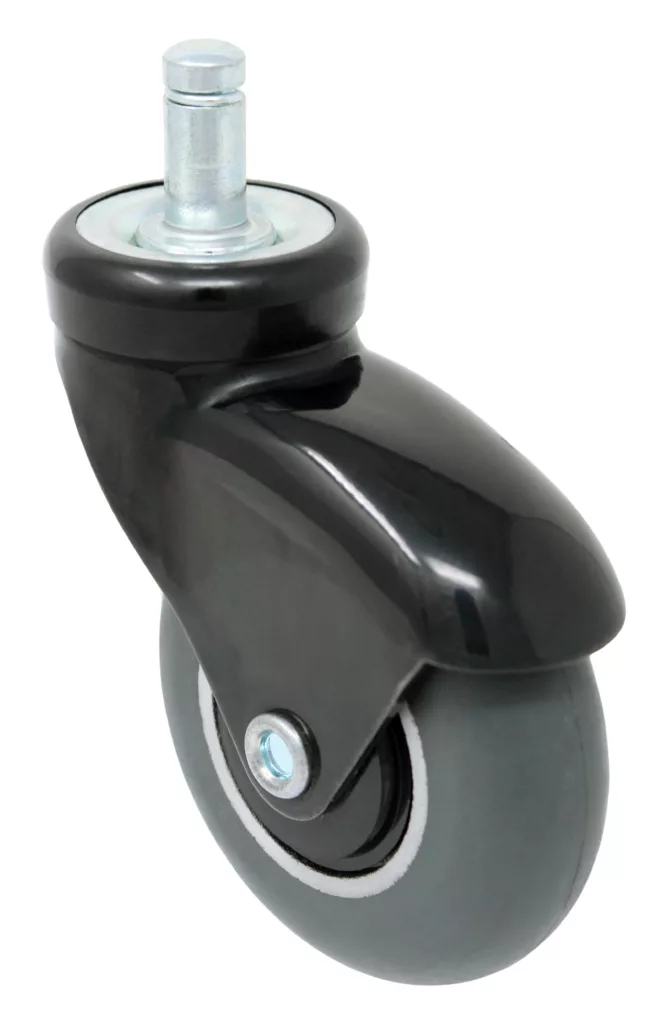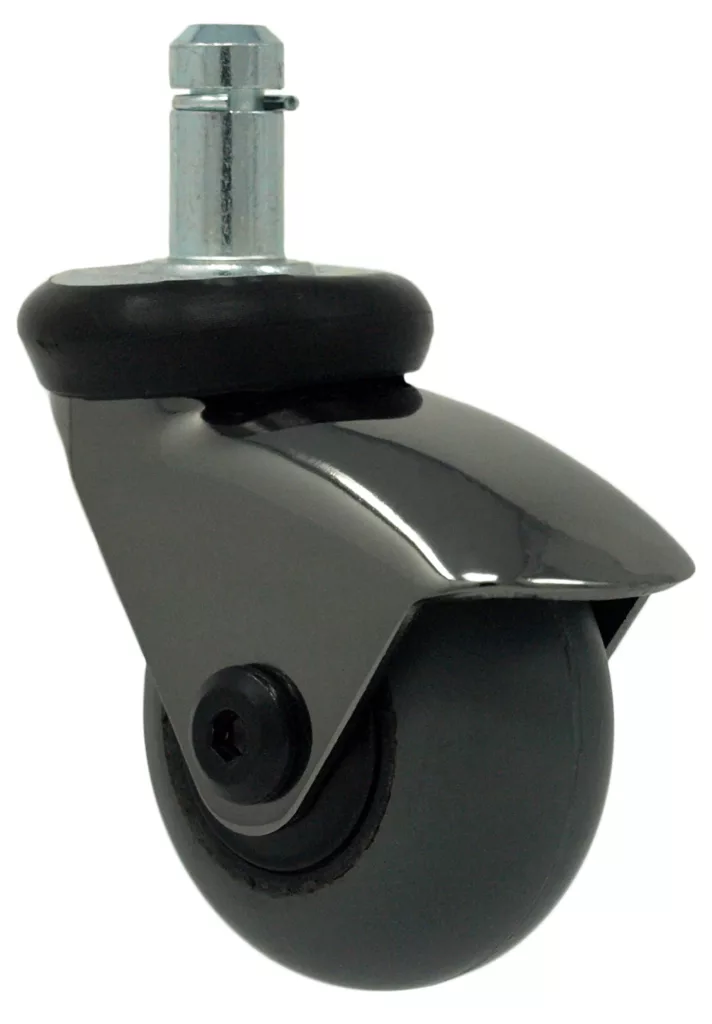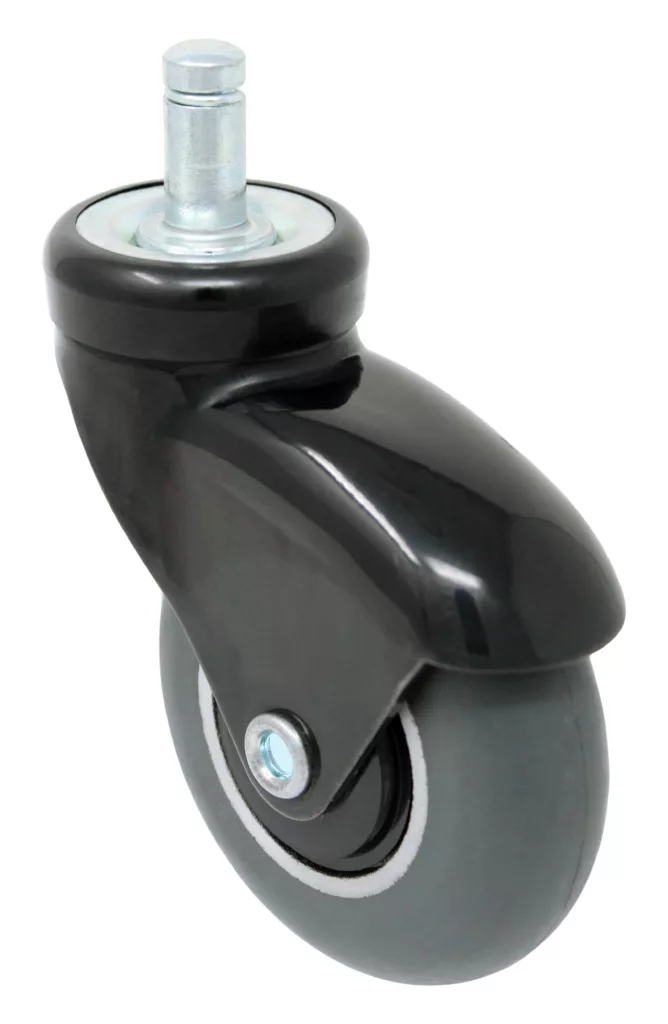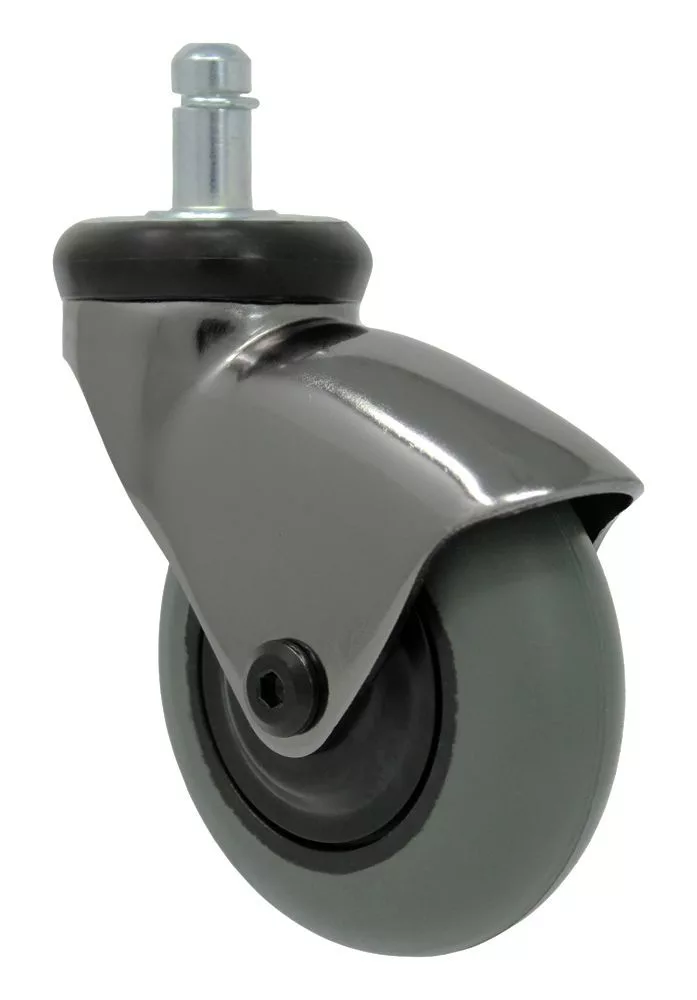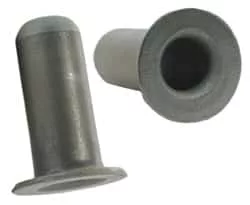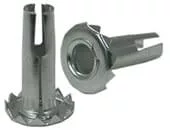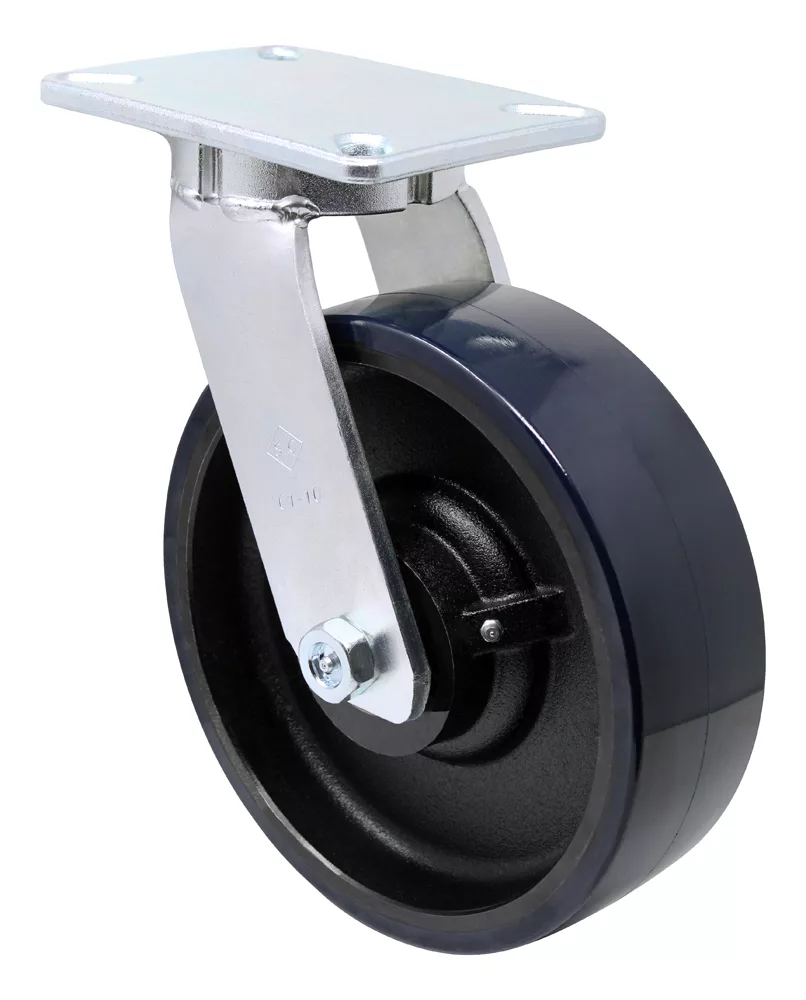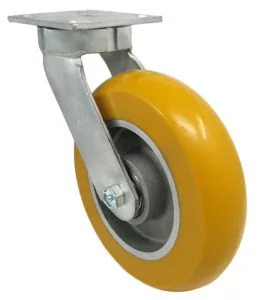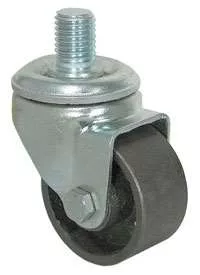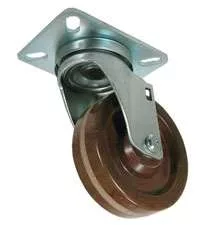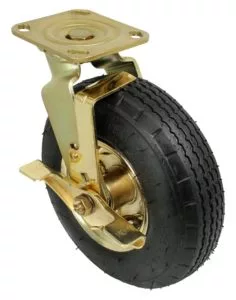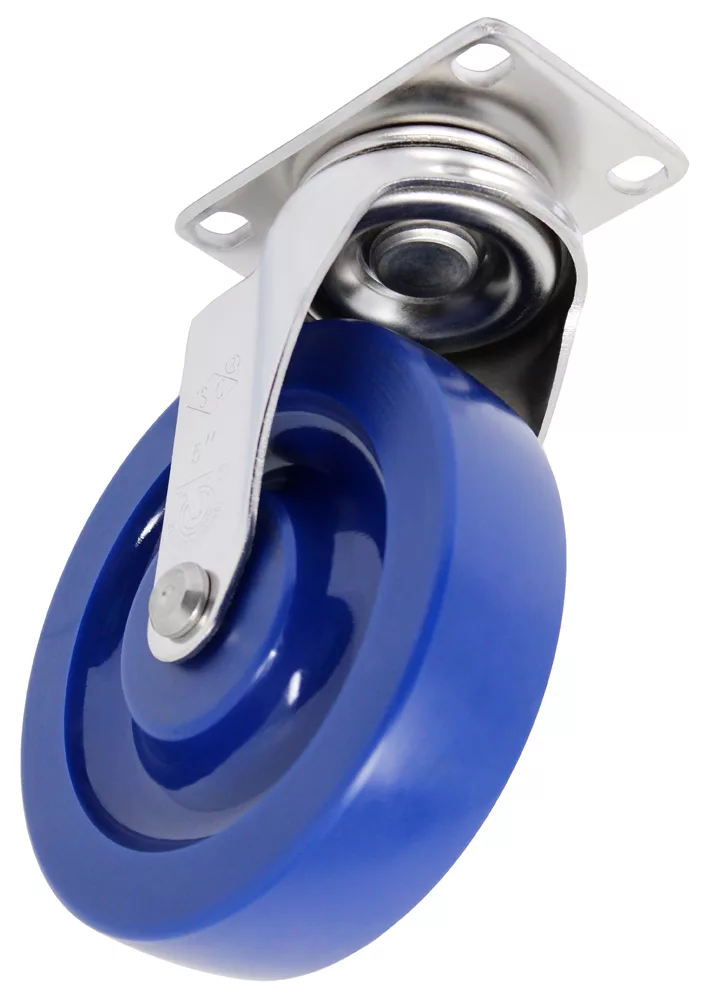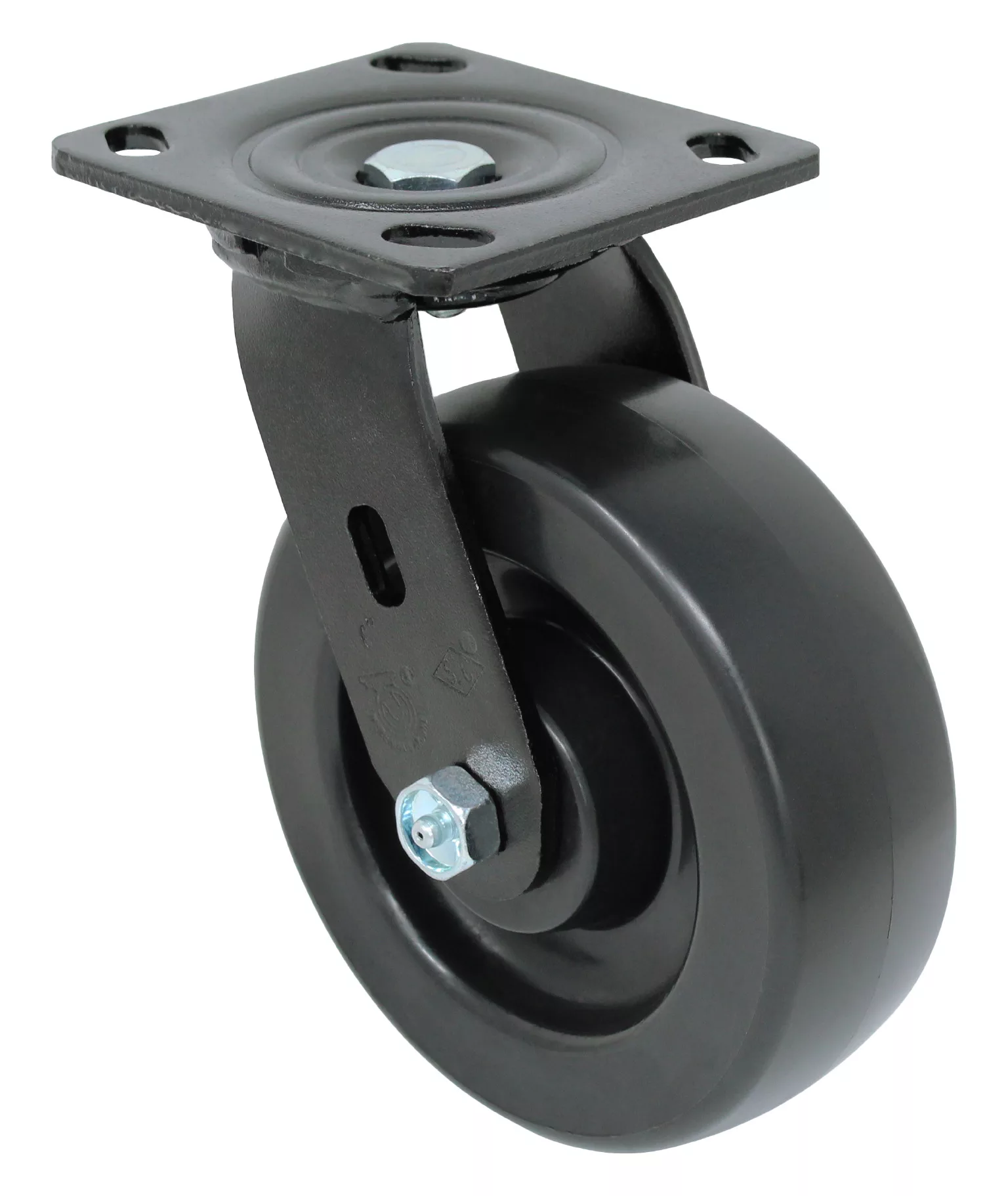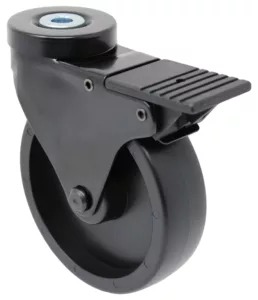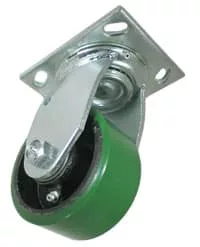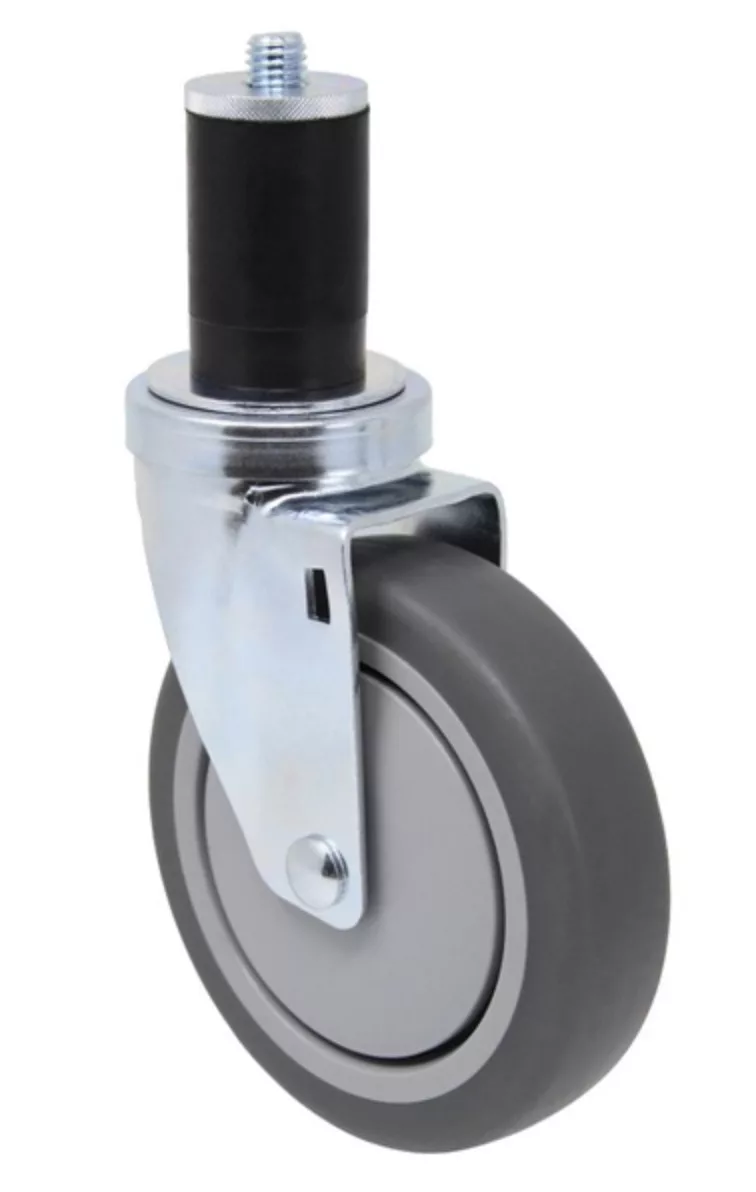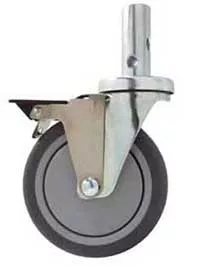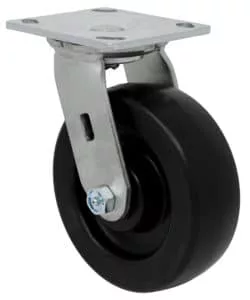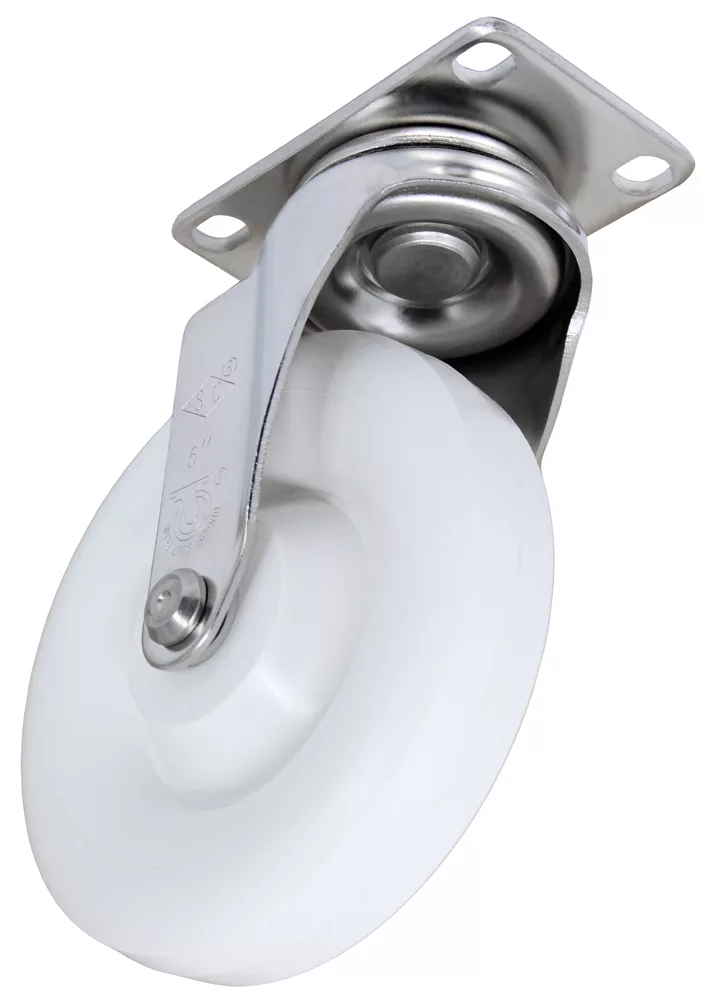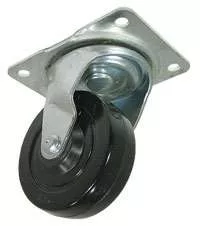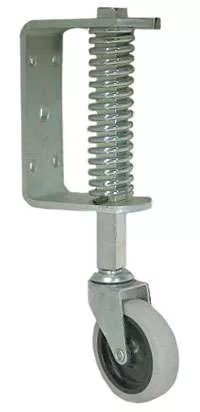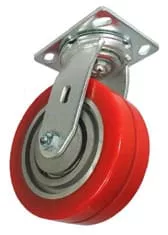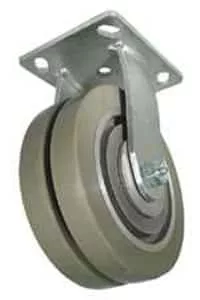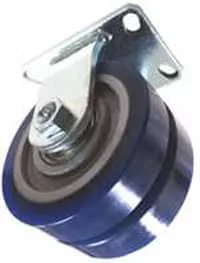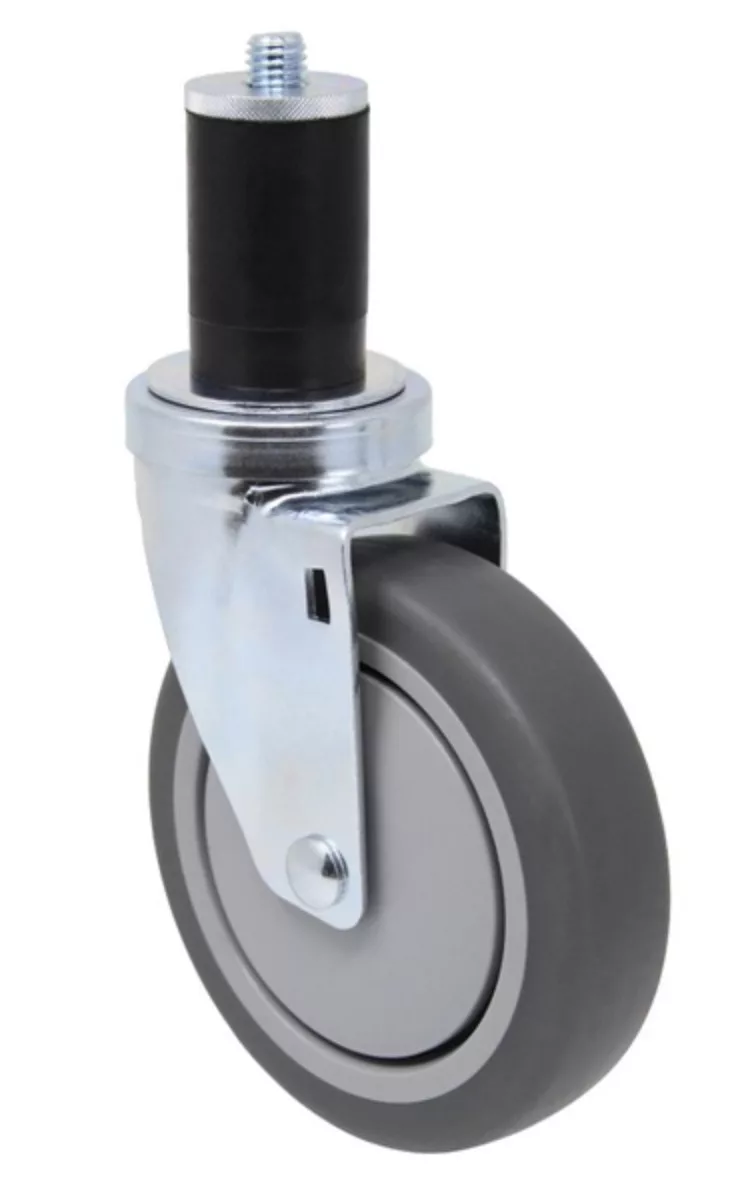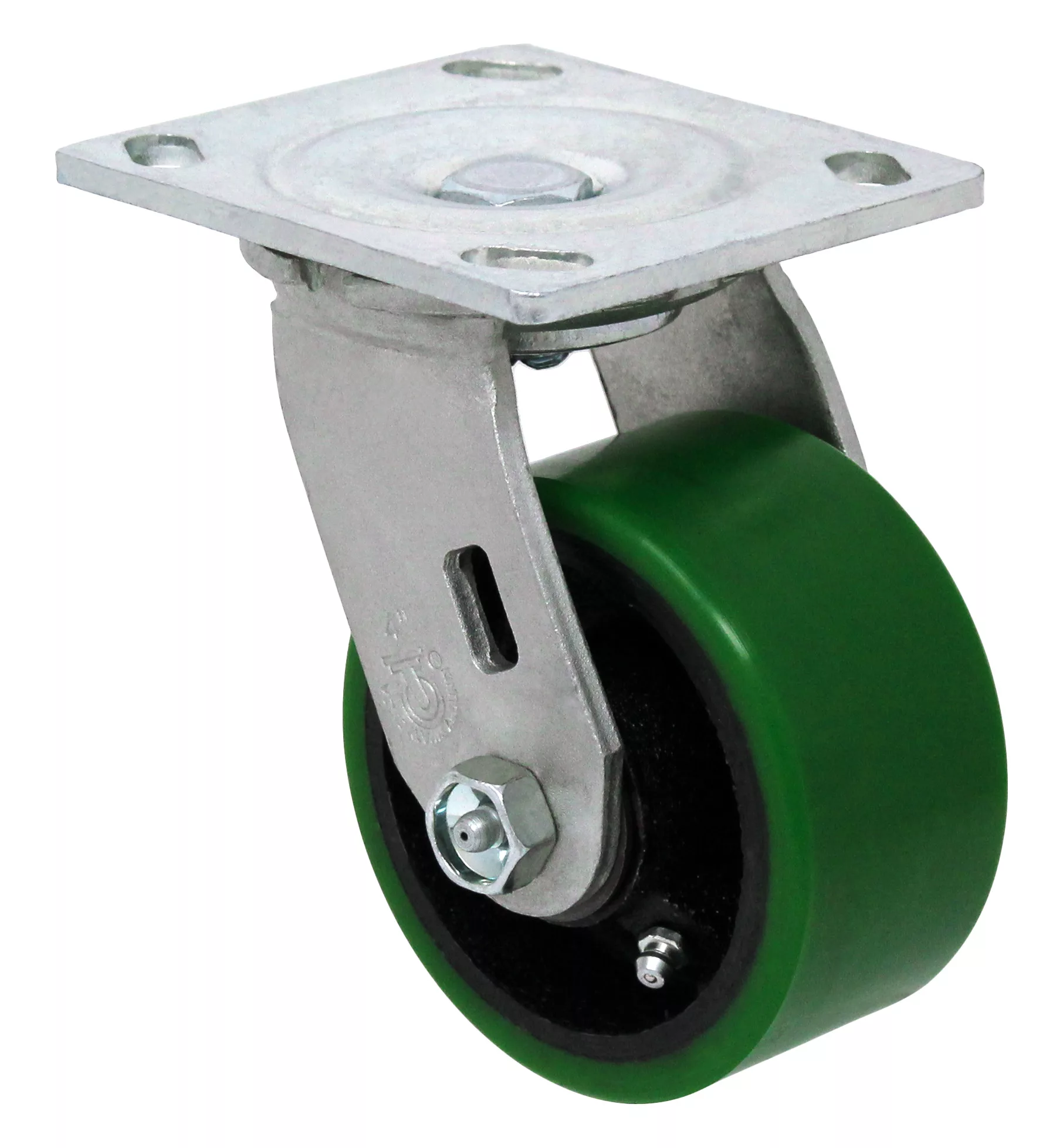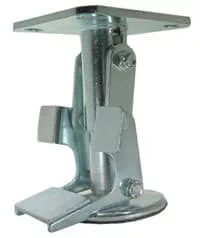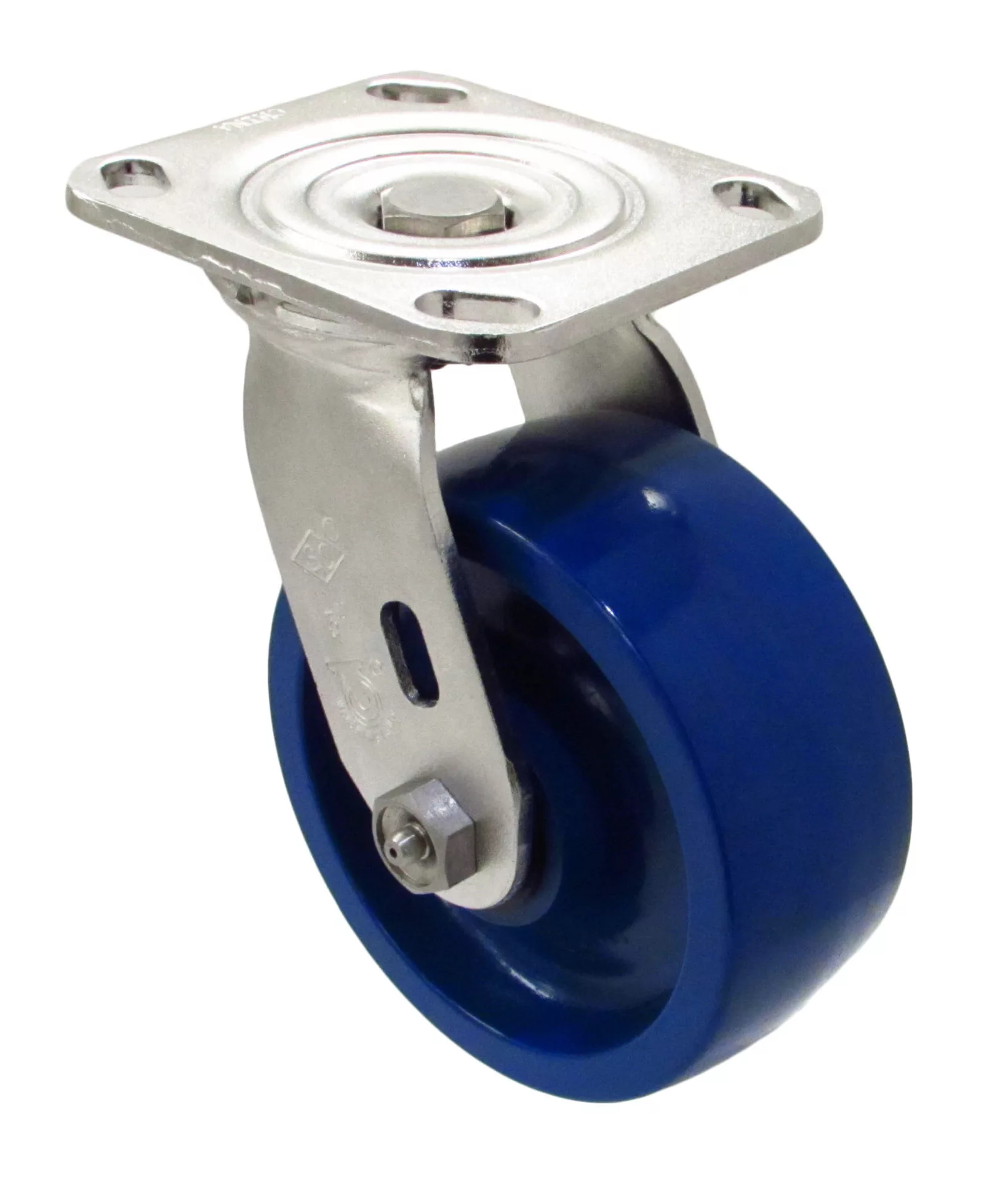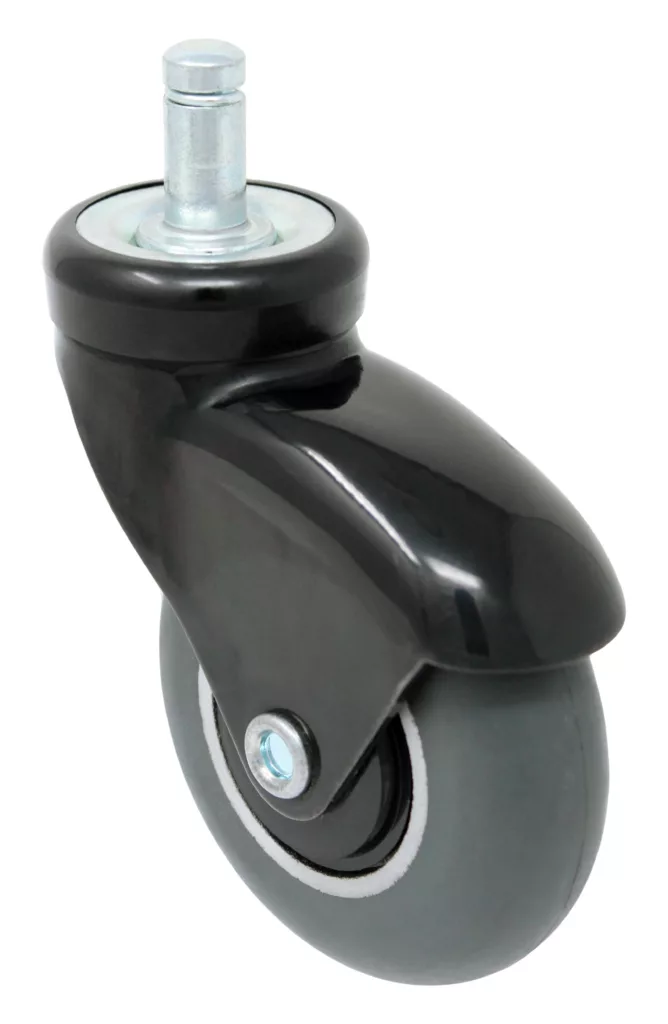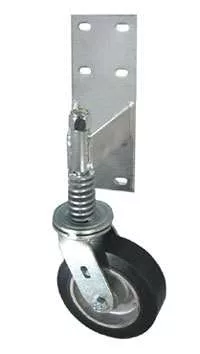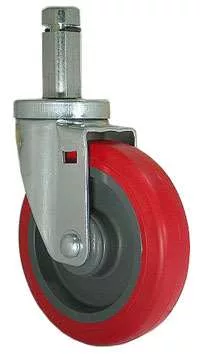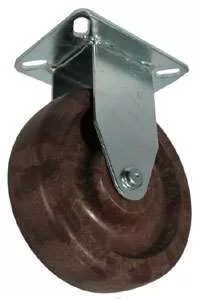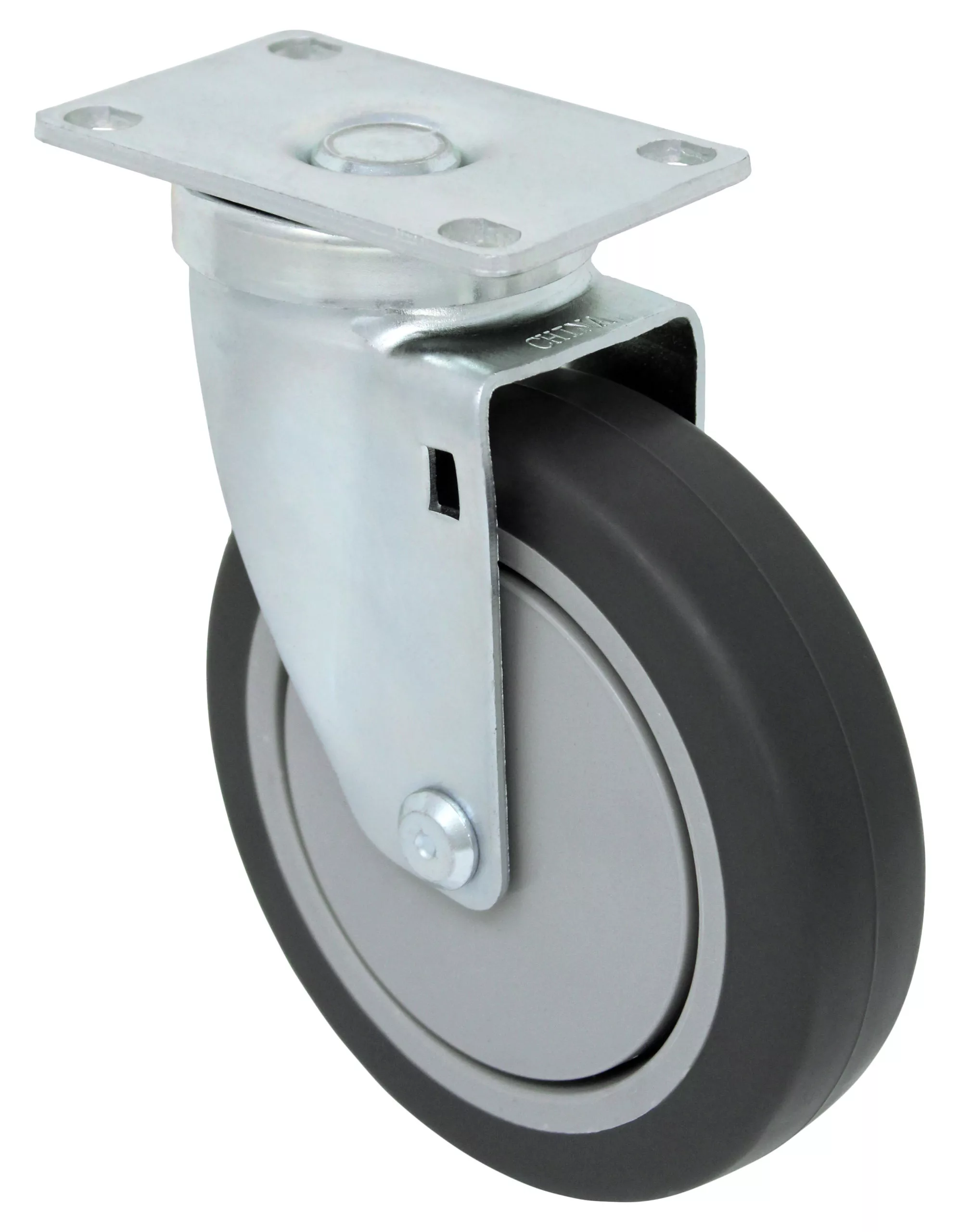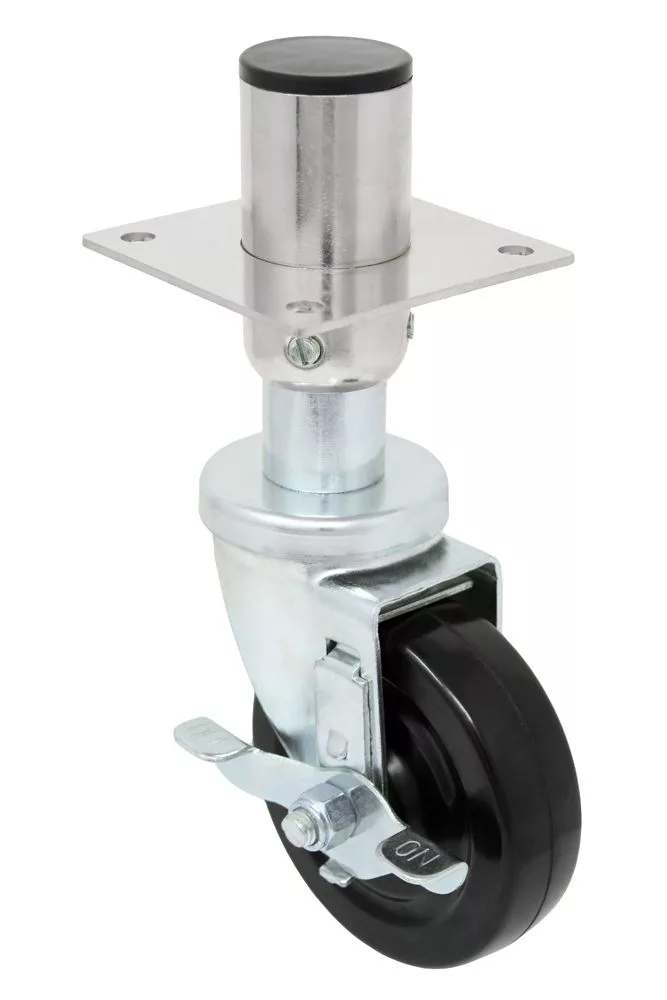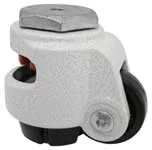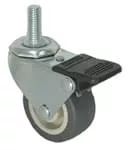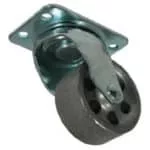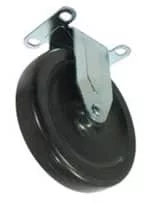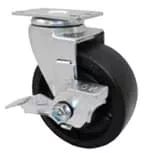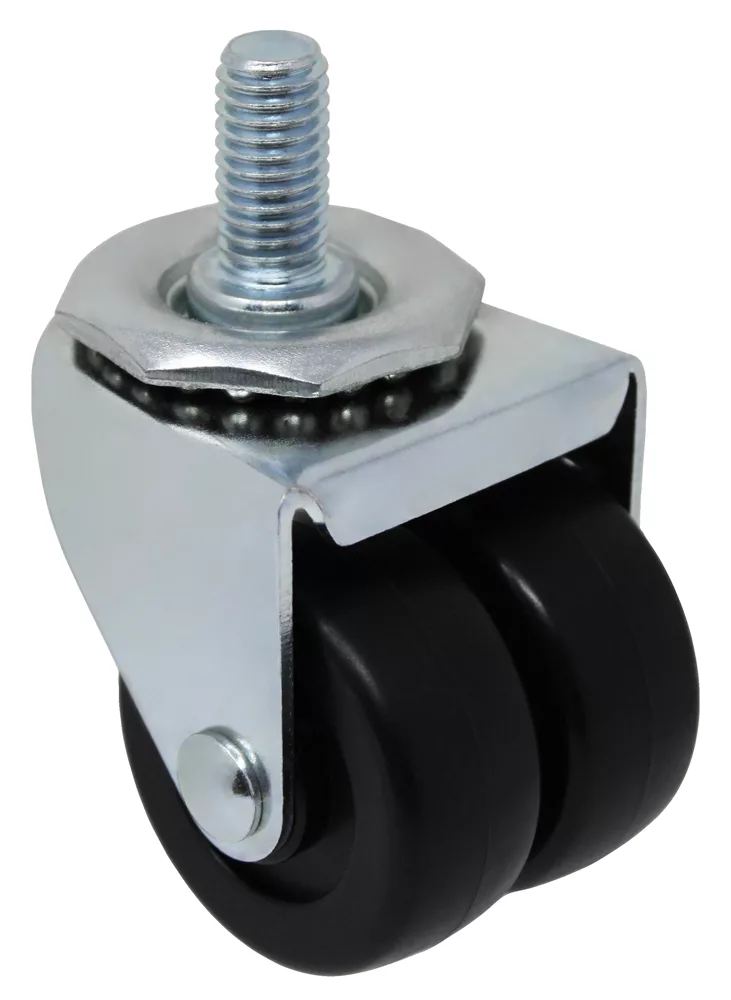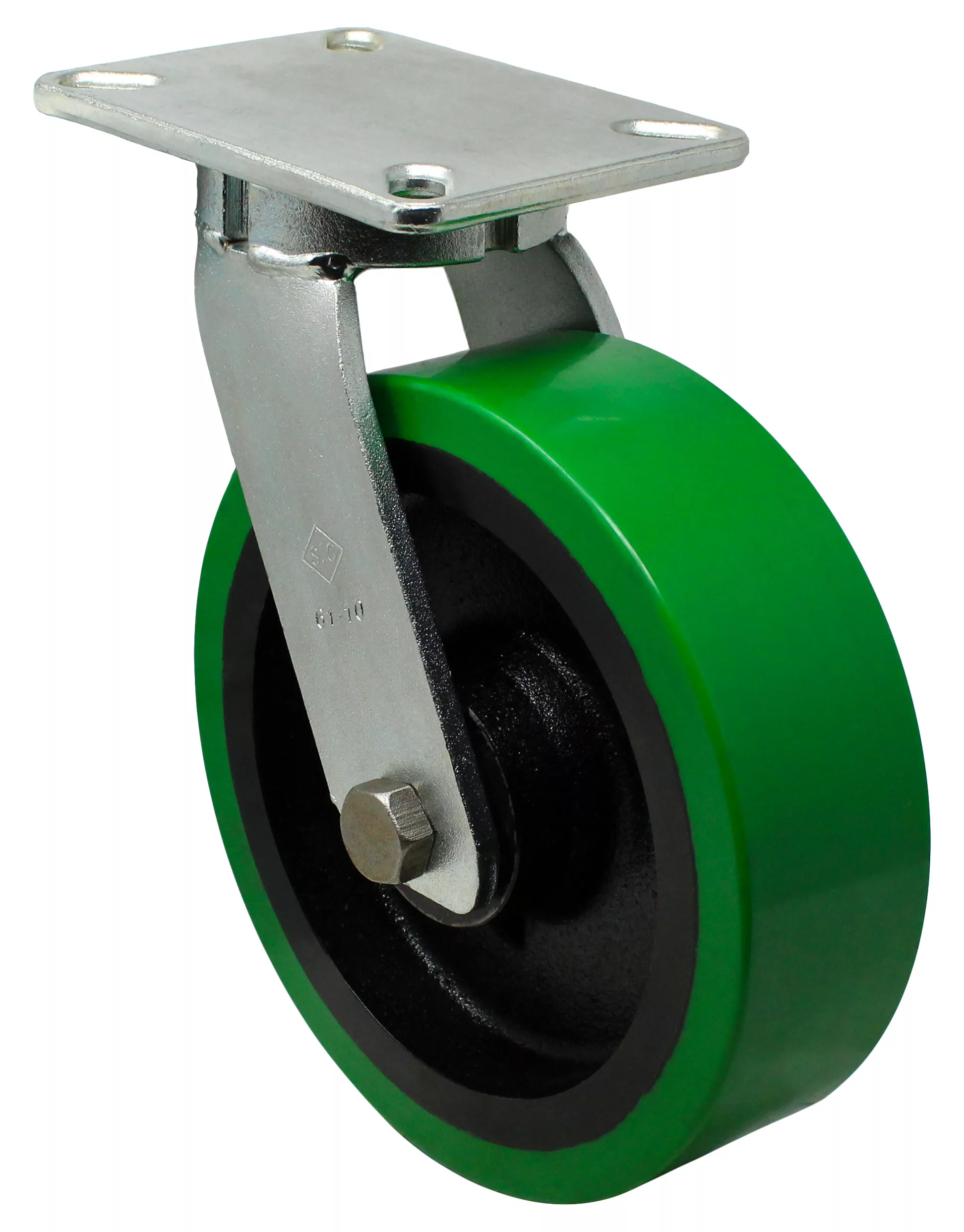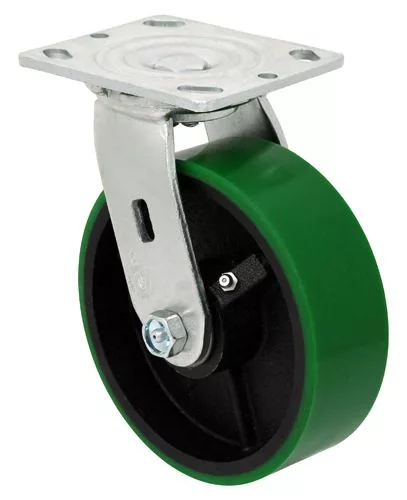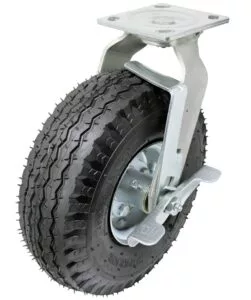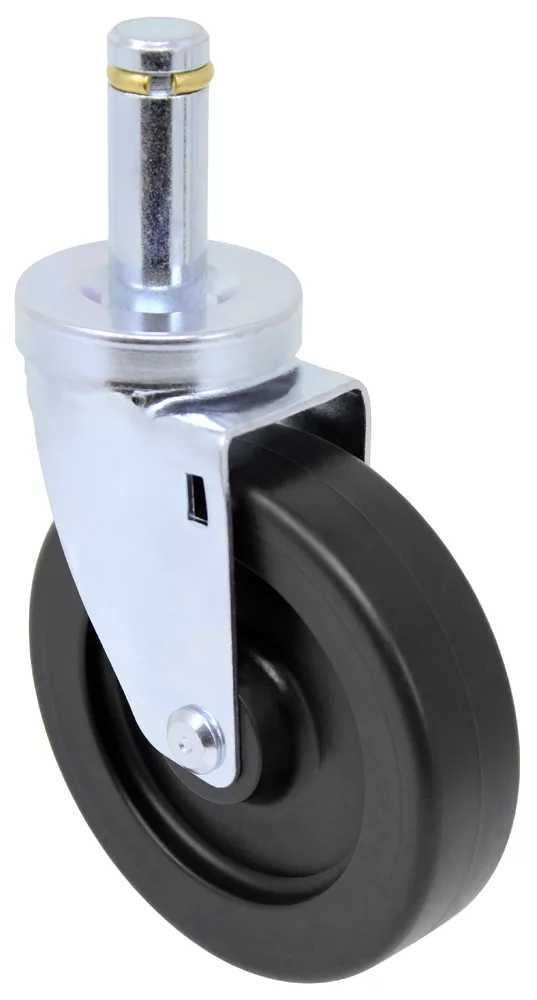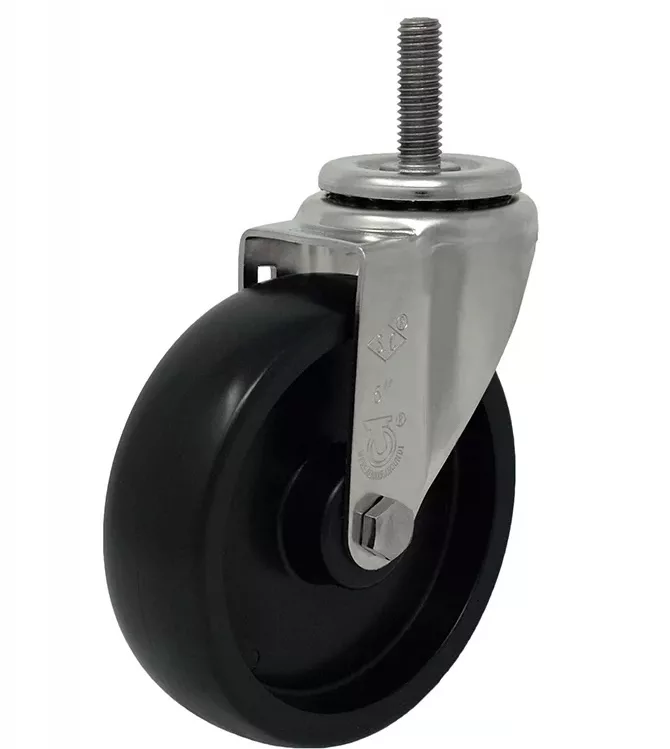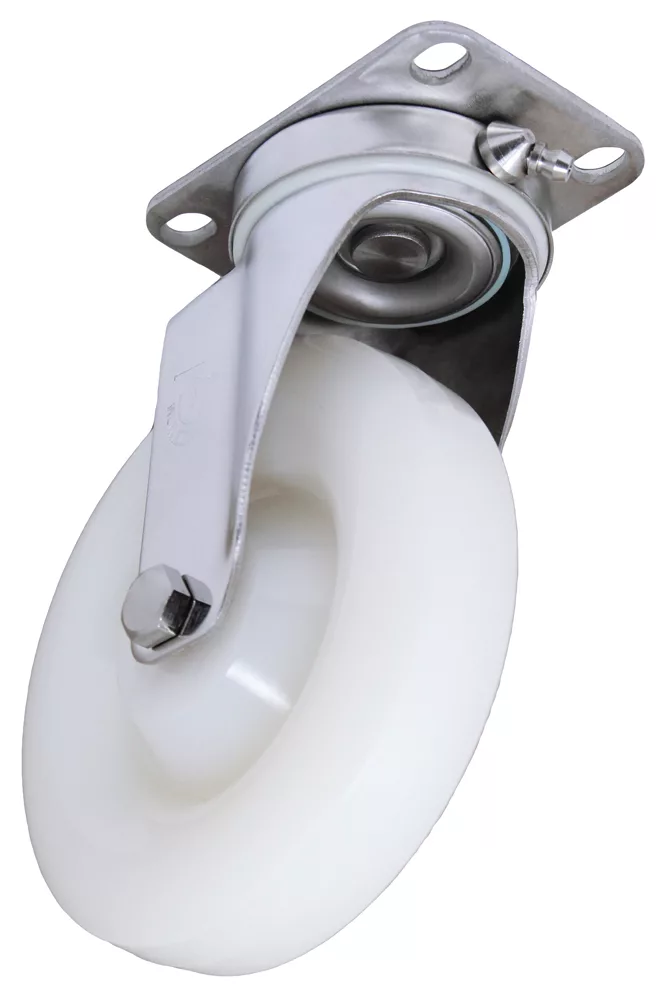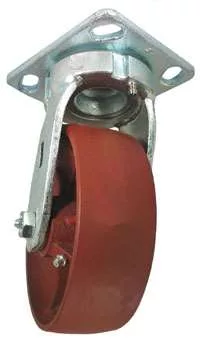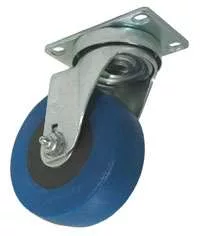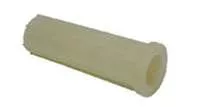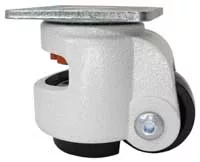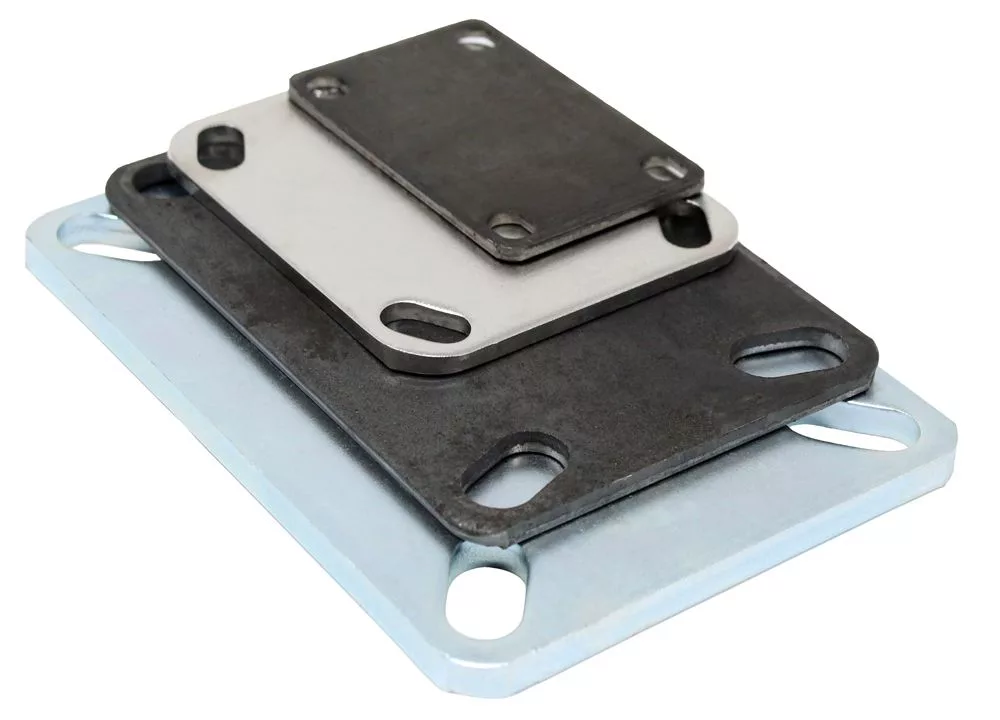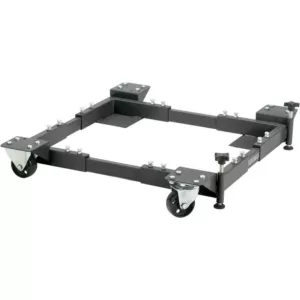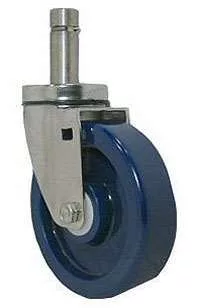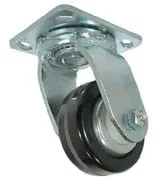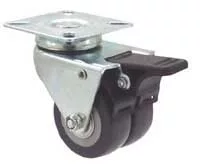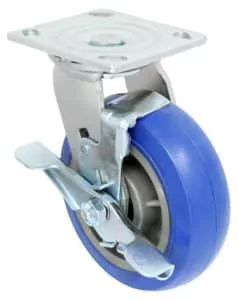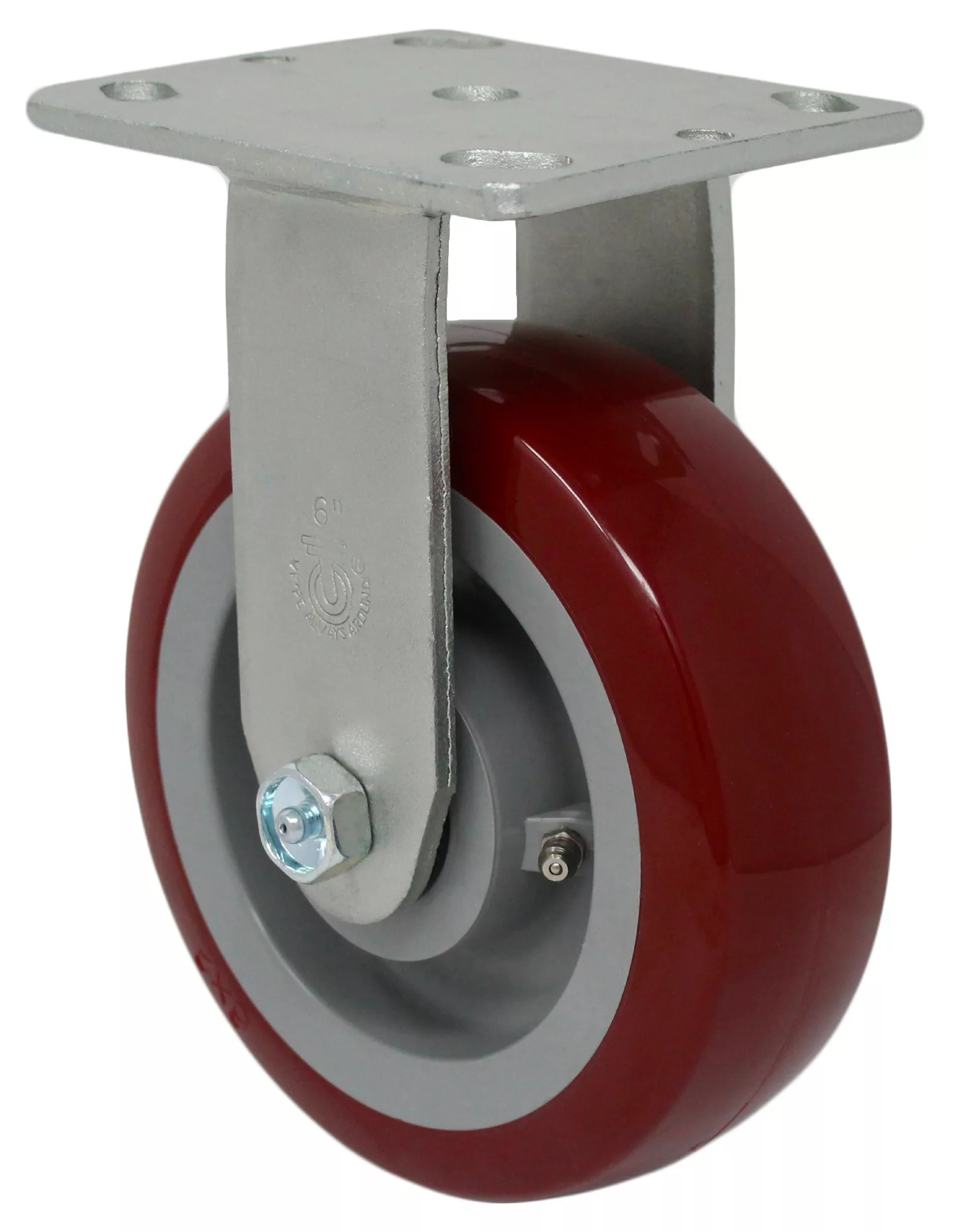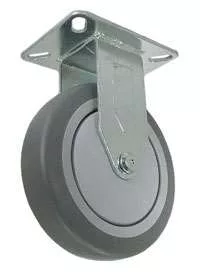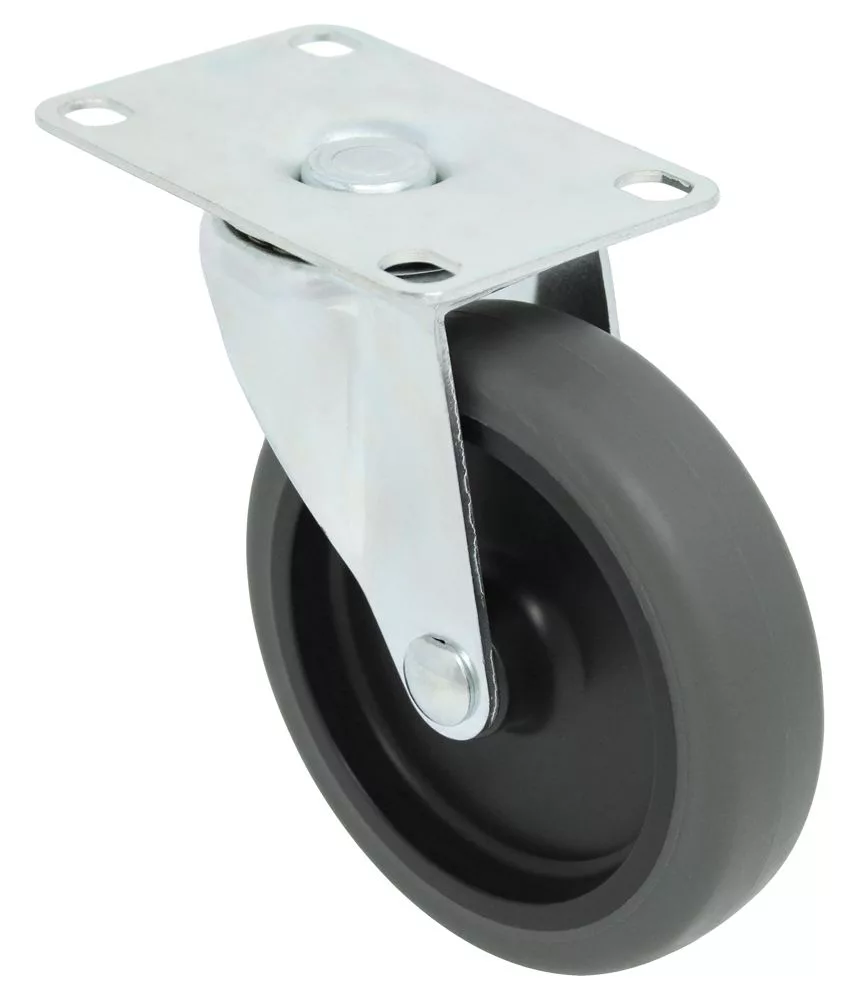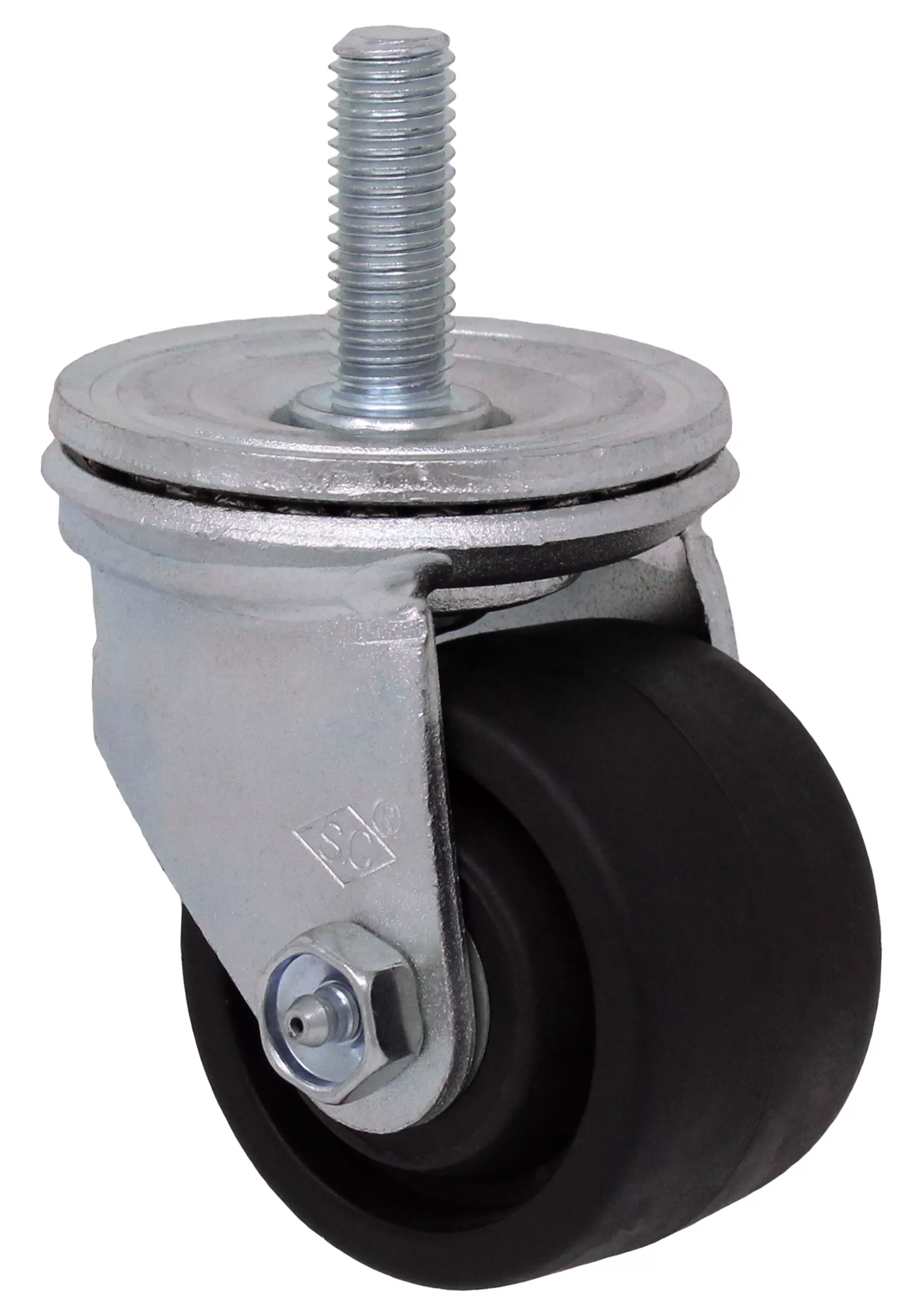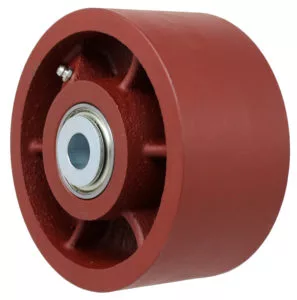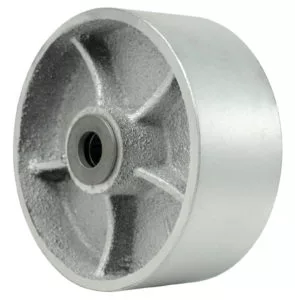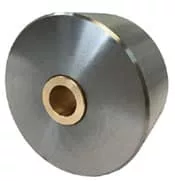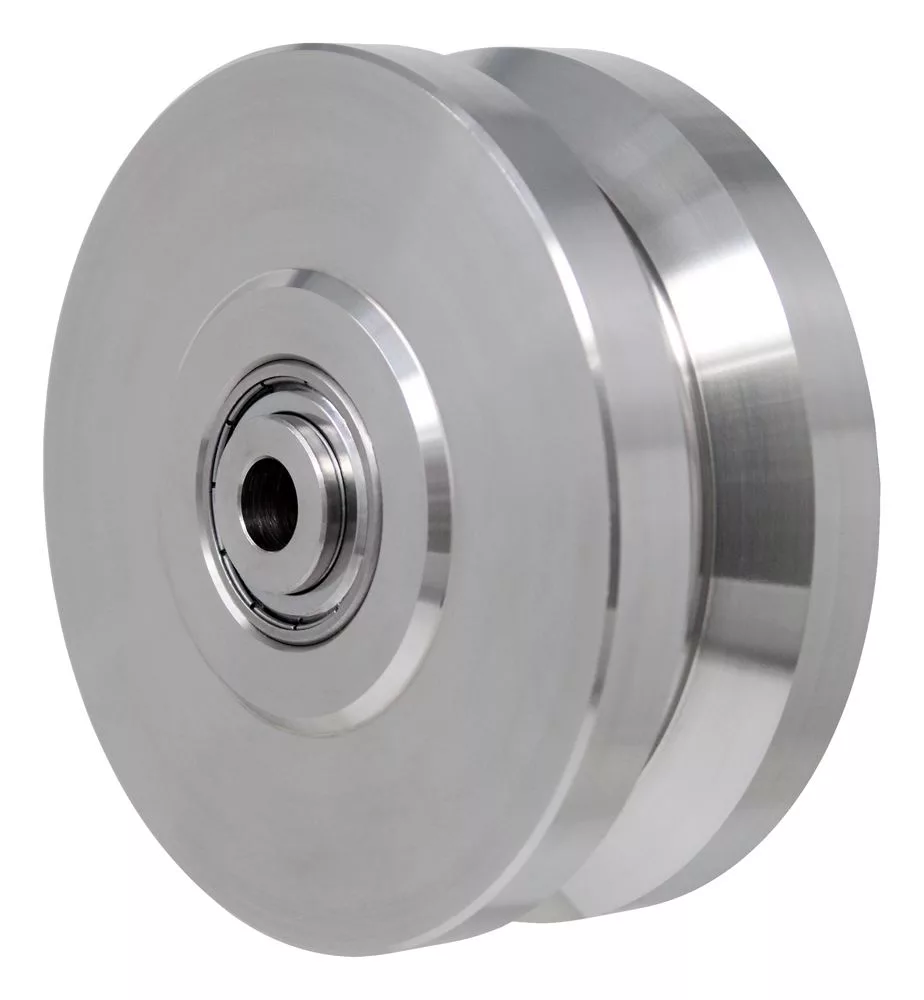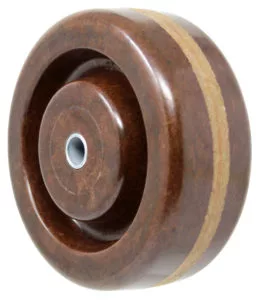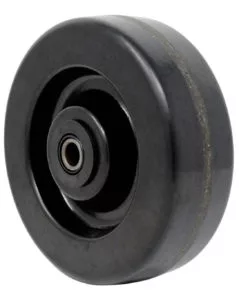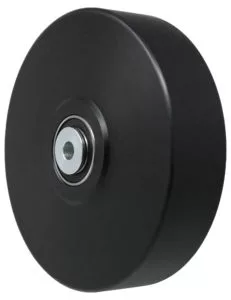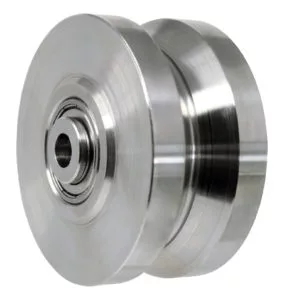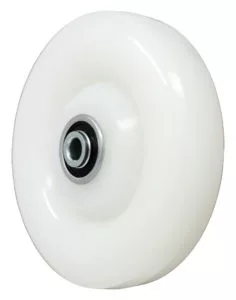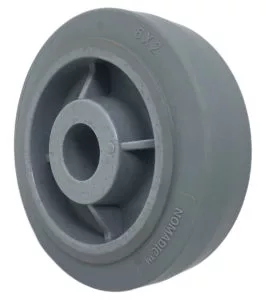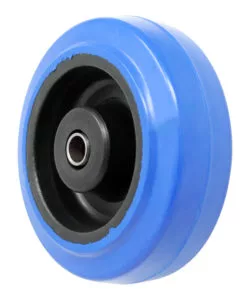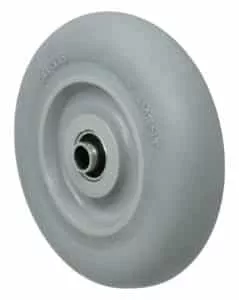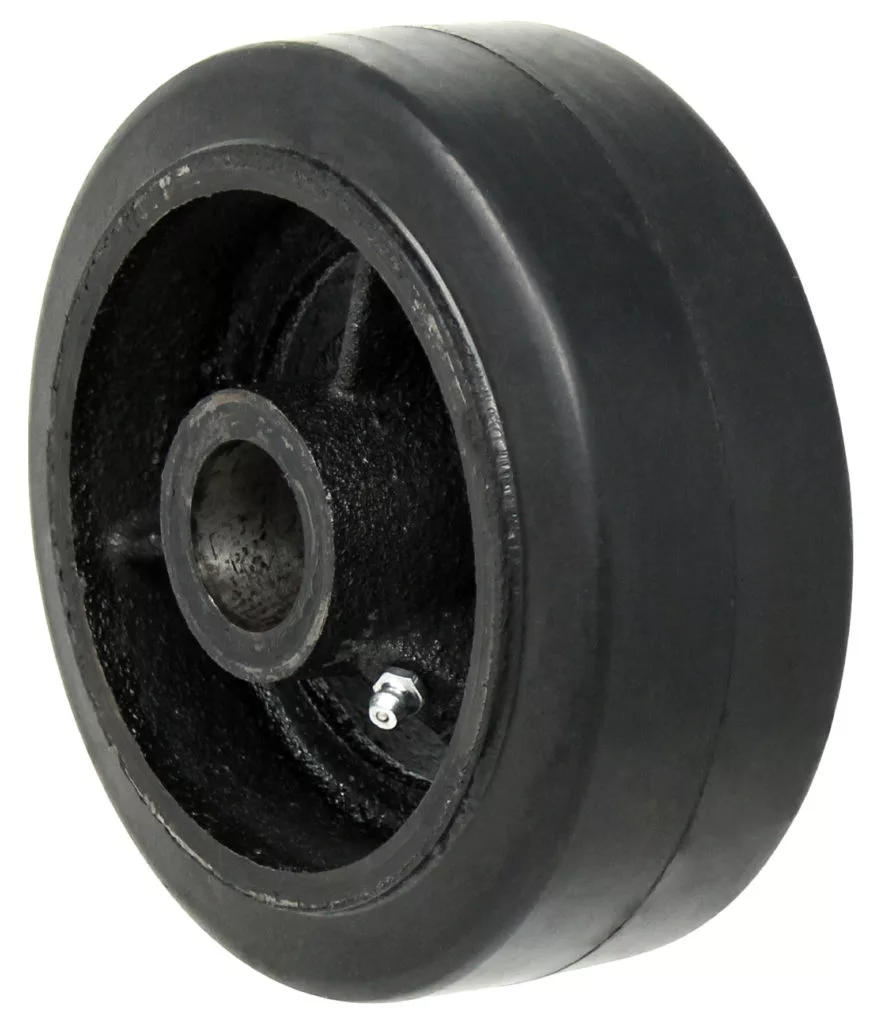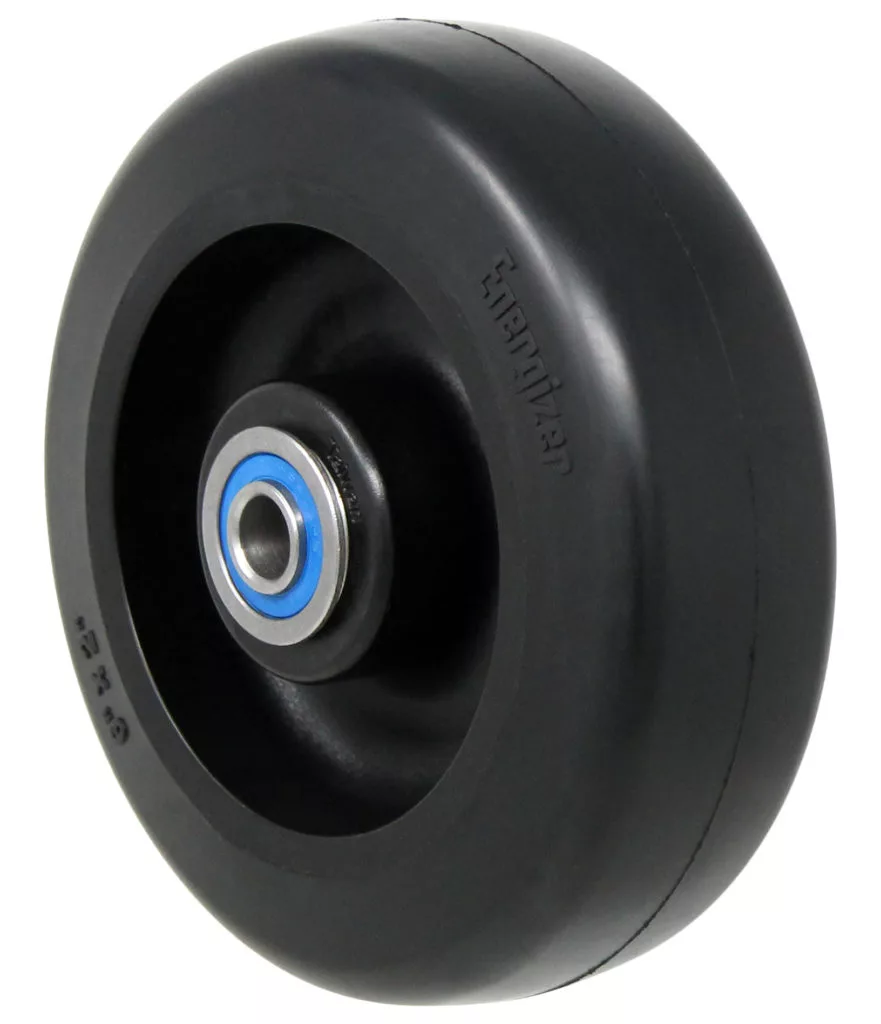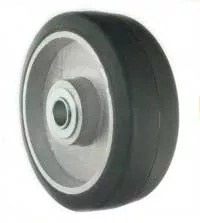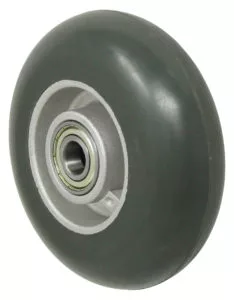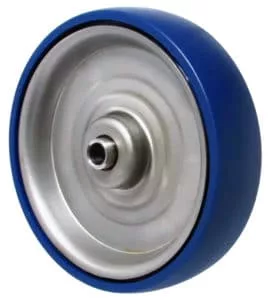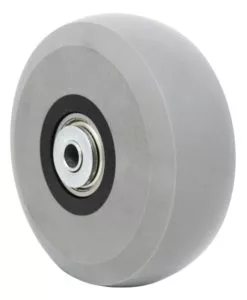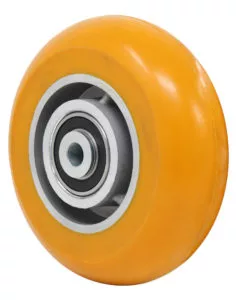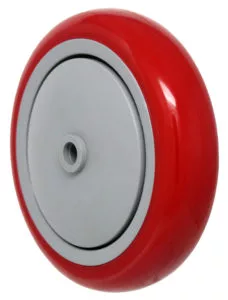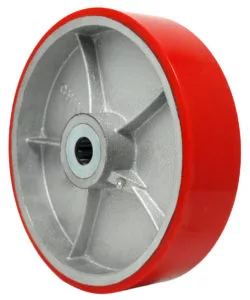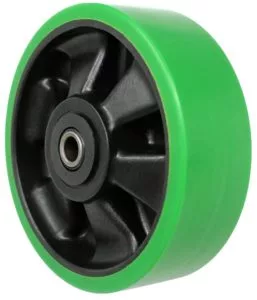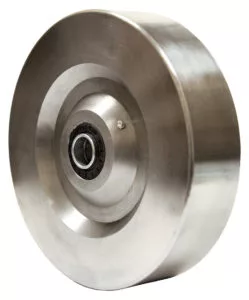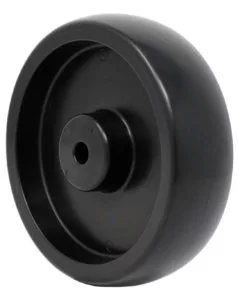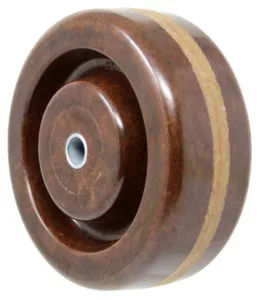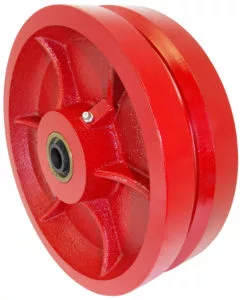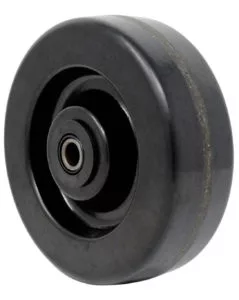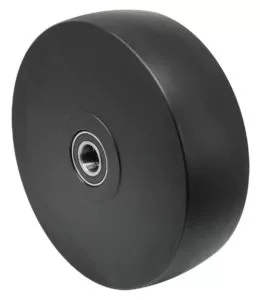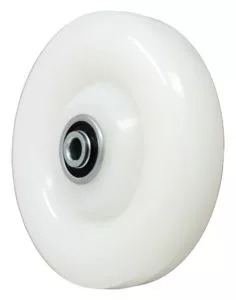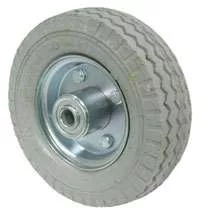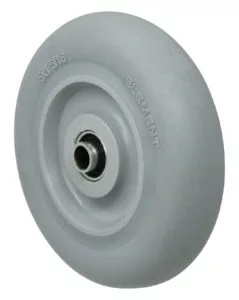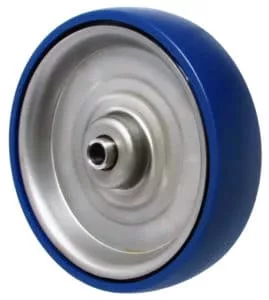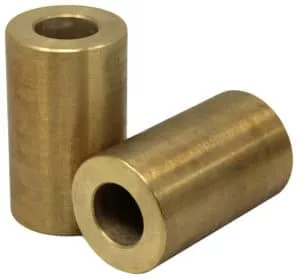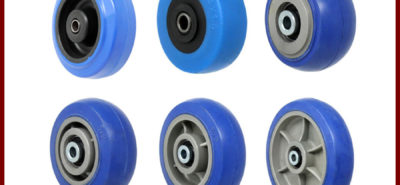How To Determine A Caster’s Load Capacity

When it comes to caster wheels, there’s a critical factor often overlooked: weight limits. Ignoring them can have significant repercussions, especially in static applications. Understanding the nuances of a caster’s load capacity is a critical component of workplace safety and product longevity.
There is a massive range of industrial casters available, and they all have a different load capacities. That load capacity can change depending on how many you have attached to any single object, or even if you’re using heavy-duty industrial casters. If you load your casters with too much weight, it could cause a dangerous situation for workers or cause damage to your product and facility.
Let’s break it down.
How To Determine Load Capacity of Your Industrial Casters
Load capacity in casters refers to the maximum weight that a caster can safely support. It’s a factor that varies widely depending on the type and quality of the caster.
Misjudging this capacity can lead to dangerous situations, including equipment failure and workplace accidents. The exact load capacity per caster needs to be examined when purchasing your industrial strength casters and documented for future review.
Industrial casters are broadly classified into three categories:
- Light Duty Casters: Ideal for loads up to 500 lbs, these casters are perfect for light equipment and everyday office use.
- Medium Duty Casters: With a capacity of up to 2000 lbs, these casters are suited for heavier equipment in industrial settings.
- Heavy-Duty Casters: Designed for loads over 2000 lbs, these casters are the go-to choice for large machinery and intense industrial applications.
Each category serves a specific purpose and choosing the wrong type can compromise the safety and functionality of your equipment.
Determining the Load Capacity for Your Needs
To determine the appropriate load capacity for your casters, start by calculating the total weight of the load and the equipment carrying it. Then, add an additional 33% as a safety buffer.
For instance, if you want to move a 2000 lb load on a 100 lb cart with four casters, the calculation would be as follows:
(2000 lbs + 100 lbs) * 1.33 / 4 casters = 699 lbs per caster.
This figure represents the minimum load capacity required for each caster.
Why Add a Load Capacity Buffer for Industrial Casters?
Adding a 33% safety buffer to the load capacity of your industrial casters may add additional cost, especially if it requires you to round up relatively high.
One of the issues with determining load capacity for casters is that it’s the maximum in ideal environments. Ideal environments for industrial casters mean non-continuous operation or load on smooth floors and at speeds under three mph.
Overloading casters beyond their rated capacity can have serious consequences.
If you exceed 50% of the rated capacity of a SOFT RUBBER WHEEL, you’re inviting trouble – flat spots. For polyurethane wheels, the threshold is a bit higher at 60% of the rated capacity. Exceeding this limit can lead to the same issue.
These flat spots not only diminish the efficiency of your equipment but can also cause uneven wear and tear, significantly reducing the lifespan of the wheels. Prioritizing the adherence to weight limits is crucial for maintaining the integrity and performance of your casters.
If your environment & usage of the casters aren’t ideal, the safety buffer is a minimal cost increase to ensure the safety of workers and products. If that’s the case for you, contact us directly and we will help guide you on what decision to make.
What Factors Determine Load Capacity on Industrial Casters?
There are a few key factors to keep in mind when determining the load capacity of your industrial casters. The first is the type of wheel material. Some materials, such as nylon, can handle more weight than others. Another factor to consider is the width of the wheel. A wider wheel can distribute weight more evenly and support more weight overall. Finally, you’ll want to consider the caster’s bearings. Stronger bearings can support more weight without breaking down over time.
Understanding what and how each component determines the load capacity will assist you in finding the right caster for your job.
Here’s a detailed breakdown of each factor:
Caster Wheel Diameter
One of the big factors in load capacity for casters is the diameter of the caster wheel. The larger the diameter of the caster wheel, the more weight overall a caster can hold.
As an example, with all things being equal on the same branded caster, the load capacity increases with the caster wheels diameter as such:
- 6 inch heavy-duty casters have a load capacity of 2,000 lbs
- 8 inch heavy-duty casters have a load capacity of 2,500 lbs
- 10 inch heavy-duty casters have a load capacity of 3,000 lbs
- 12 inch heavy-duty casters have a load capacity of 3,500 lbs
So, in general, you’re looking at a steady increase in additional load capacity per 2 inch increase in the caster wheel diameter. You also get the benefits of larger diameter wheels, easier maneuverability, and the ability to handle rough surfaces easier.
You need to check on specific products though, as there could be other differences that impact the load capacity.
Caster Tread Width
Wider treads distribute weight more evenly, increasing load capacity. Similarly, the tread profile affects weight distribution – flat treads provide more surface area and hence support more weight compared to rounded treads.
If you take the example heavy duty casters above with a 3 inch tread width and reduce that to 2.5 inches, then the load capacity goes down.
- 6 inch heavy-duty casters with 2.5 inch treads have a load capacity of 1,500 lbs
- 8 inch heavy-duty casters with 2.5 inch treads have a load capacity of 2,000 lbs
- 10 inch heavy-duty casters with 2.5 inch treads have a load capacity of 2,500 lbs
- 12 inch heavy-duty casters with 2.5 inch treads have a load capacity of 3,000 lbs
So, as you can see, a minimal decrease in caster tread width has a significant effect on the load capacity of the casters. This also helps you move around height restrictions, as you can increase the caster tread rather than the caster wheel diameter to get more load capacity.
Caster Tread Profile
A caster tread profile can impact the load capacity; you have the option of a rounded or flat tread profile. A flat tread profile on casters will allow them to last longer and support a higher load capacity by distributing the load over a larger surface.
However, casters with rounded tread profiles have superior maneuverability and roll much easier. So, depending on your budgets for the future and maneuverability requirements, you’ll need to pick the best caster tread profile for your requirements.
As an example, with the exact same industrial strength casters, the load capacity significantly changes between flat and rounded tread:
- 6 inch heavy-duty casters with rounded tread profile have a load capacity of 450 lbs
- 6 inch heavy-duty casters with flat trad profile have a load capacity of 600 lbs
Another significant difference in load capacity with a simple change on the same type of casters.
Material of the Wheel
Typically, soft casters are quieter and more maneuverable using materials like polyurethane but have much lower load capacity when compared to hard casters using materials like steel.
Heavy duty casters allow for easy and convenient movement, which increases efficiency and productivity. Incorporating the right heavy-duty casters can significantly enhance operational efficiency and safety in business environments. These casters allow for the effortless movement of heavy machinery, leading to increased productivity and reduced labor.
They also play a pivotal role in minimizing workplace injuries by facilitating safer and more manageable transportation of heavy loads.
Additionally, using the appropriate casters can reduce the risk of damage during transportation, safeguarding the quality of products and equipment.
Choosing the Right Casters for Your Project
Selecting the right caster for your project involves more than just considering load capacity. It’s about understanding the specific requirements of your operation and environment. Here are some key considerations:
- Application Environment – Consider the terrain and floor conditions. Casters designed for smooth surfaces may not perform well on rough or uneven floors.
- Frequency of Use – For equipment that’s moved frequently, choose casters designed for durability and ease of movement.
- Temperature and Chemical Exposure – Some caster materials are better suited for environments with extreme temperatures or exposure to chemicals.
- Maintenance and Care for Casters – How you maintain your casters plays a vital role in ensuring their longevity and optimal performance. Regularly check the load limits and avoid exceeding them. For static applications, particularly with soft rubber and polyurethane wheels, it’s important to adhere to the manufacturer’s guidelines to prevent deformation. Regular inspections for wear and tear, lubrication of bearings, and checking for any loosening components will help prolong the life of your casters and maintain safety standards.
For more details about how to maintain your Casters for optimal performance, check out our detailed guide.
Want Expert Help?
If you’re unsure about how to determine the Casters for your needs, reach out to our team of specialists. With expert advice, you can ensure that you select casters that not only meet your load capacity requirements but also align with the specific demands of your workplace.
If you’re in the market for industrial casters, contact one of our representatives at Caster City. They are always ready to help.

